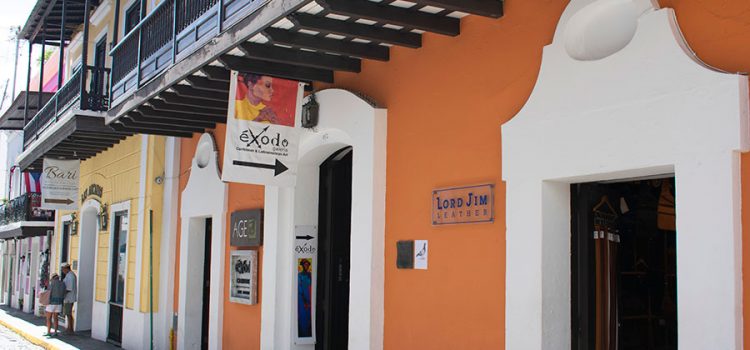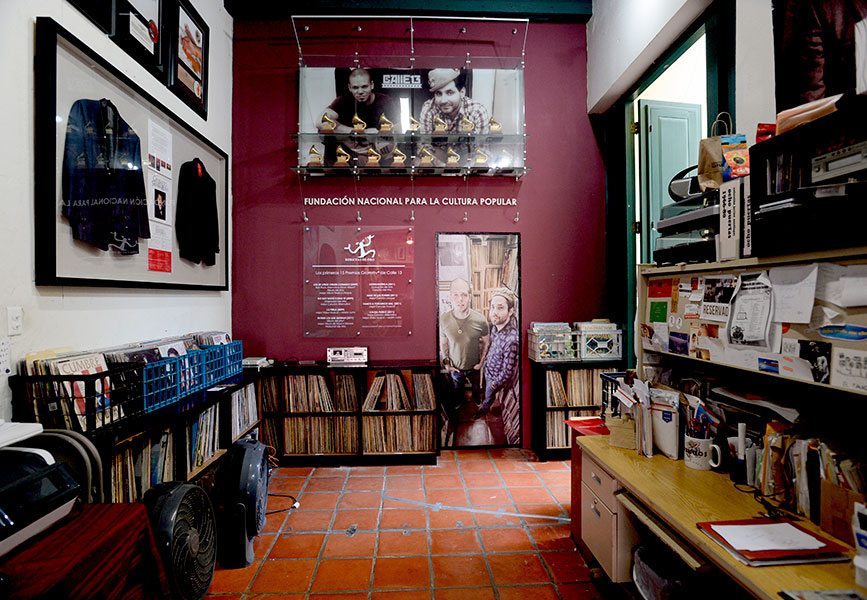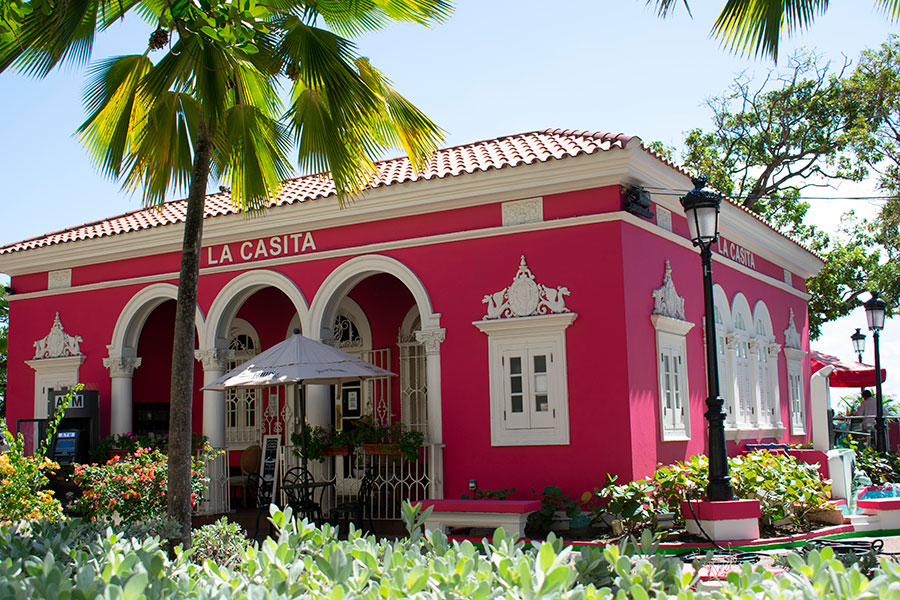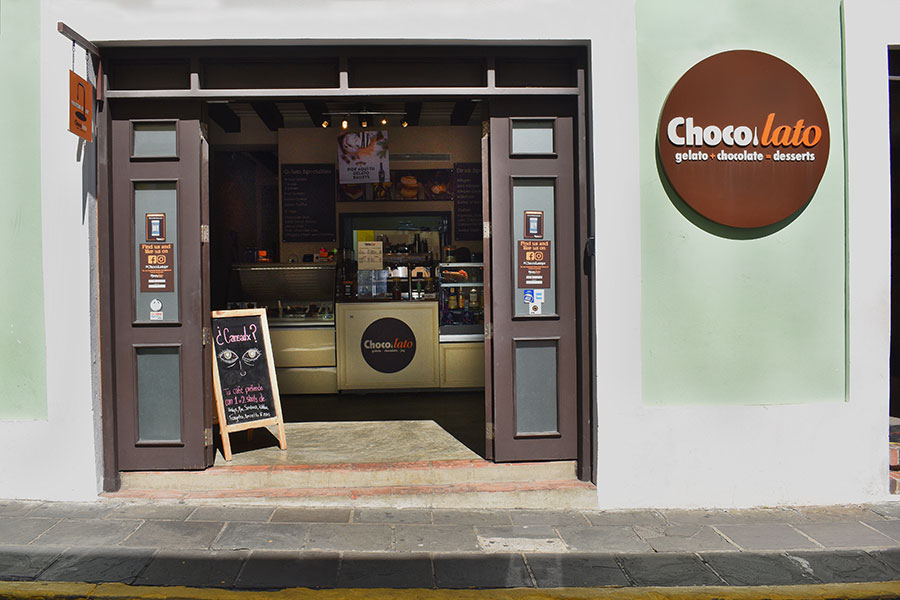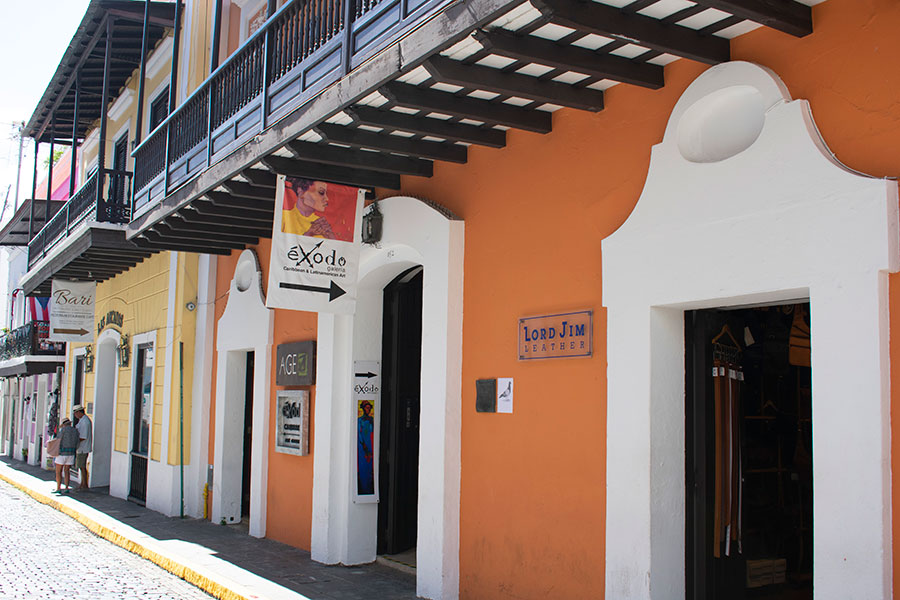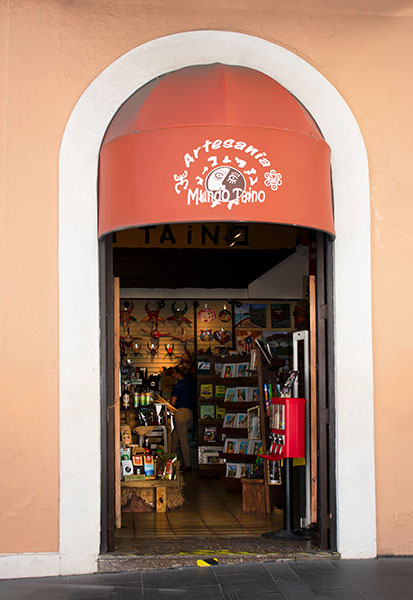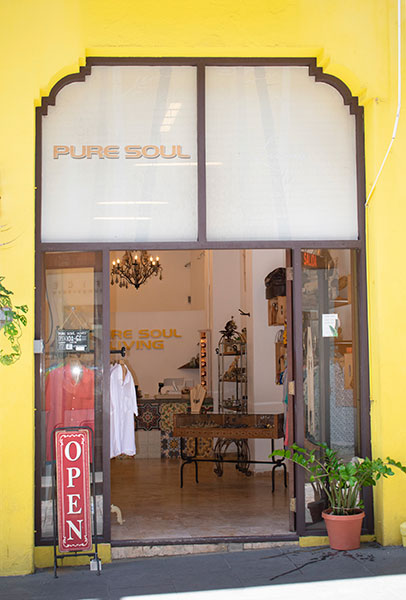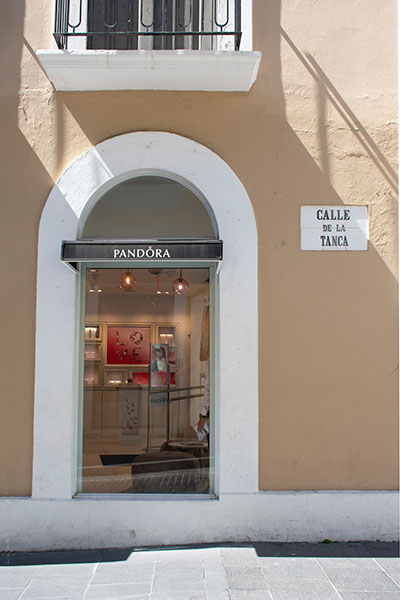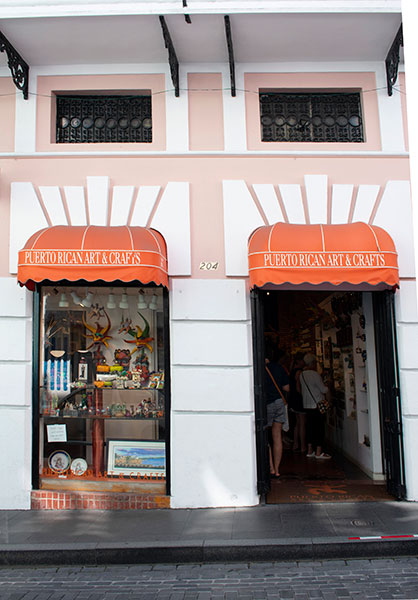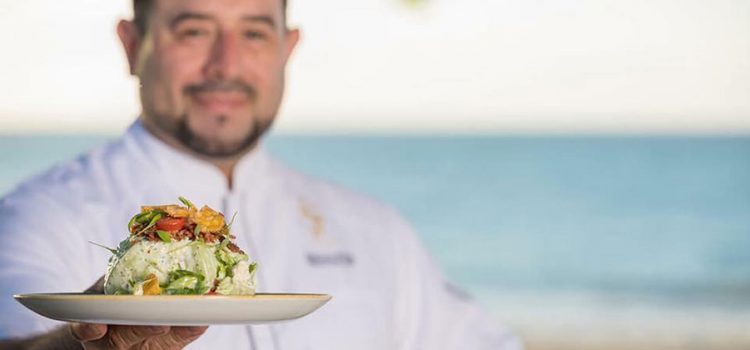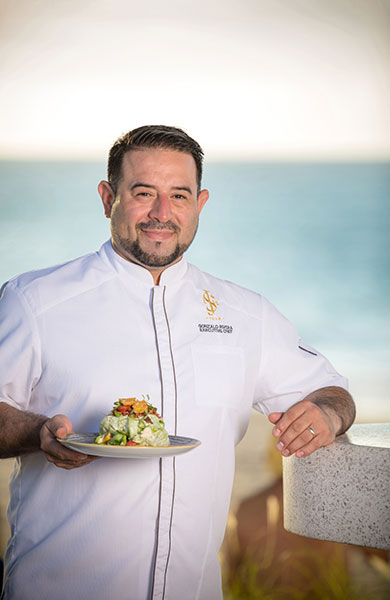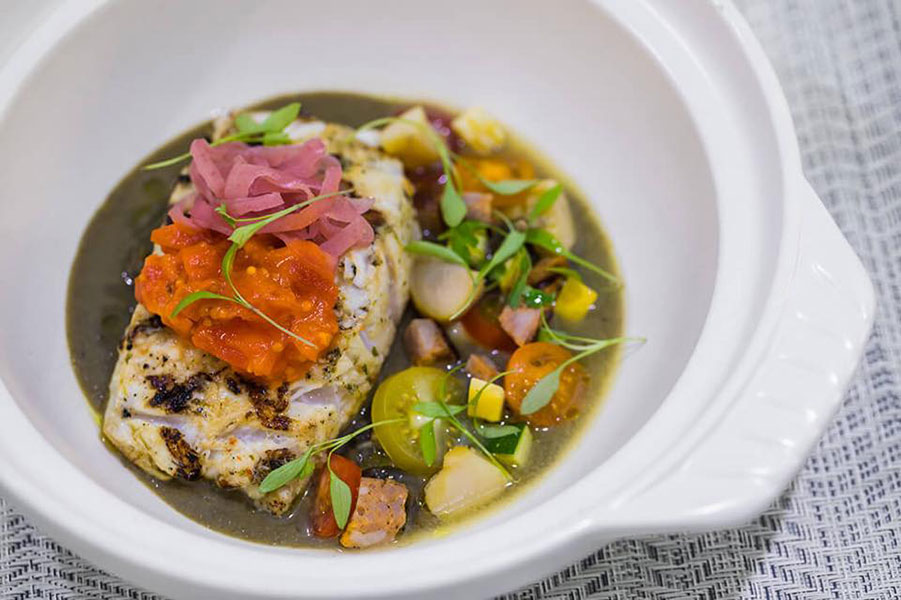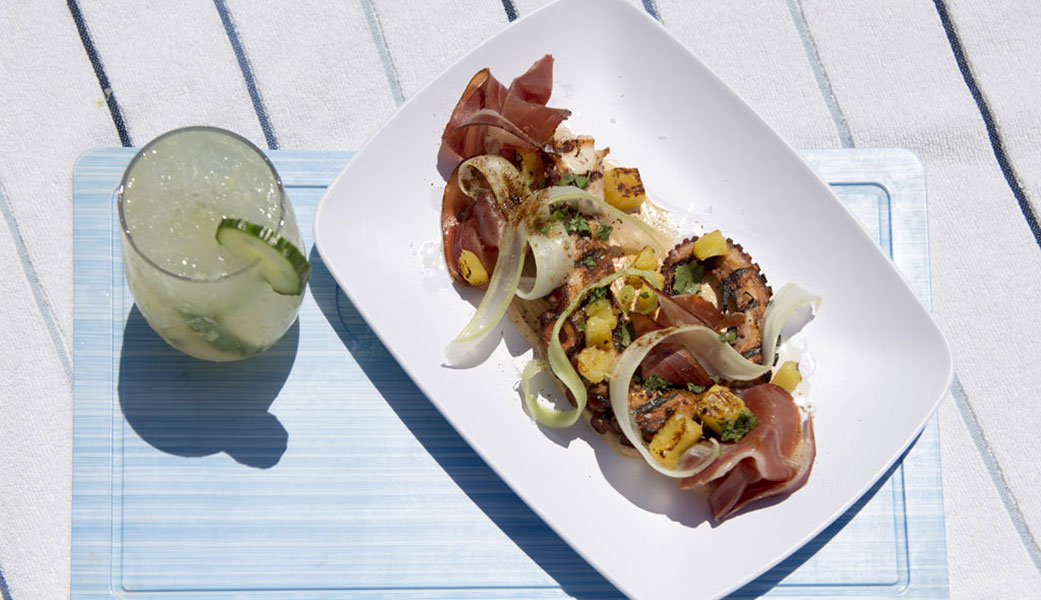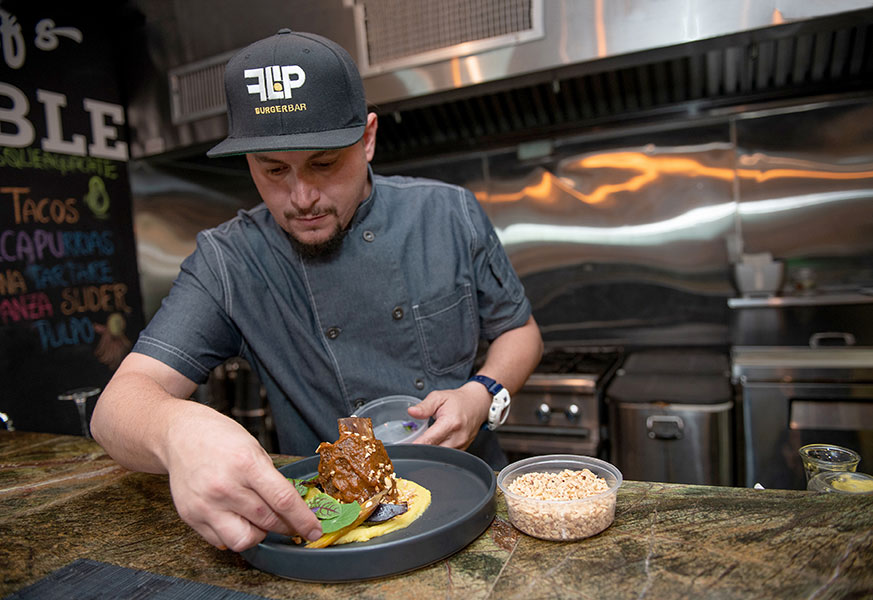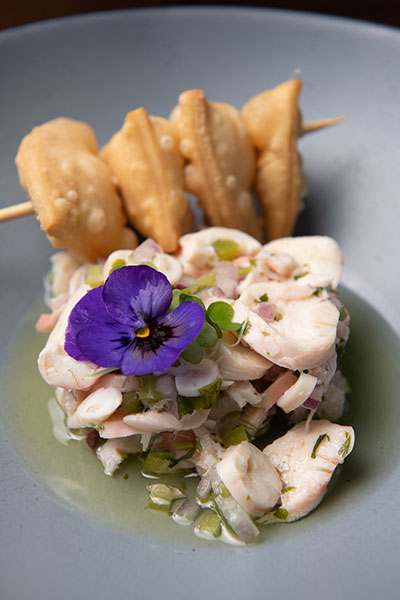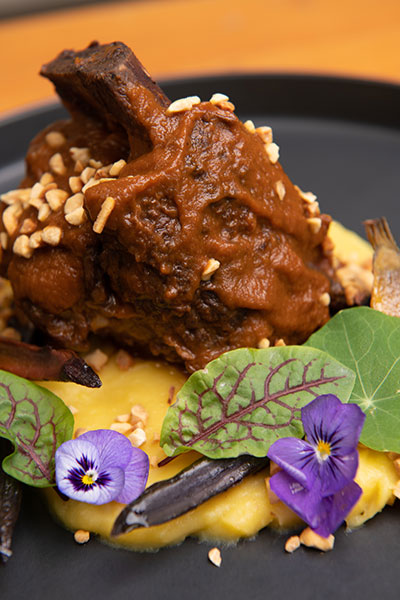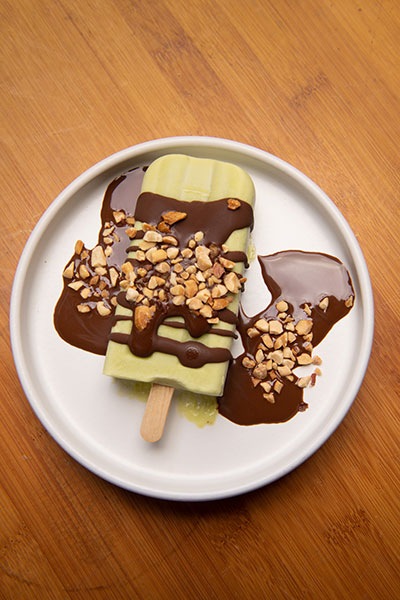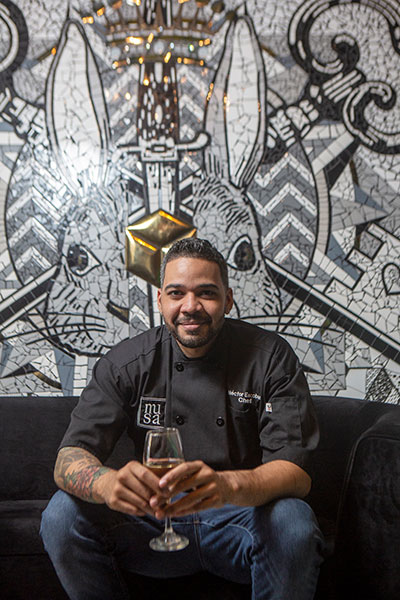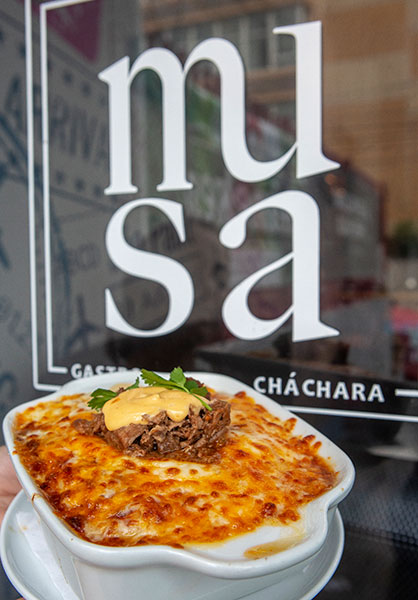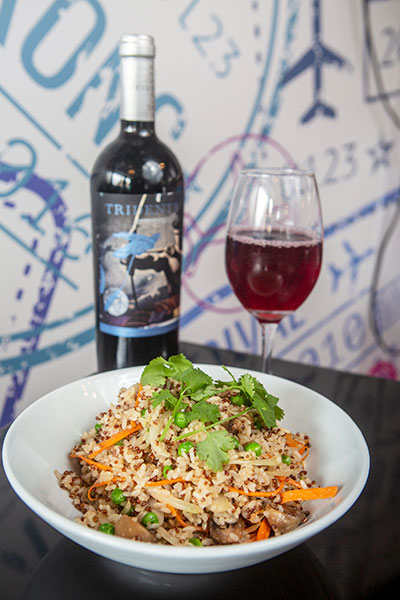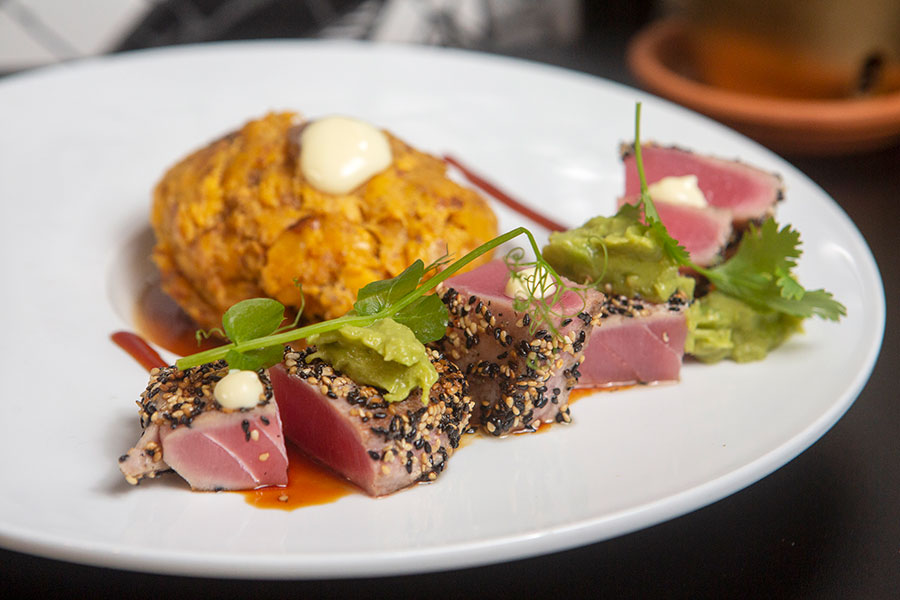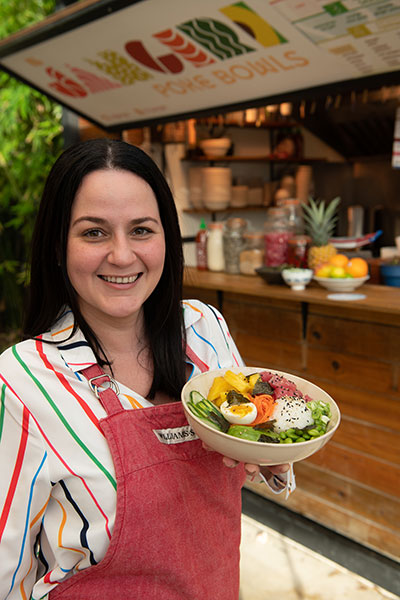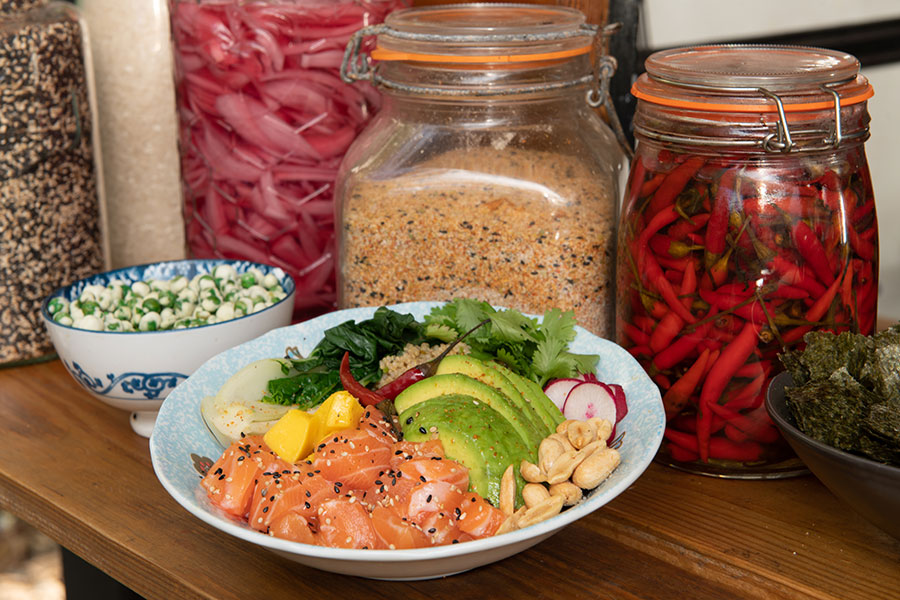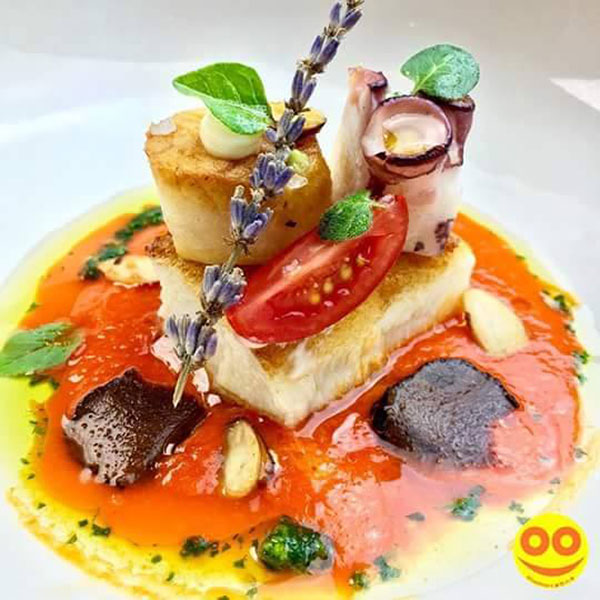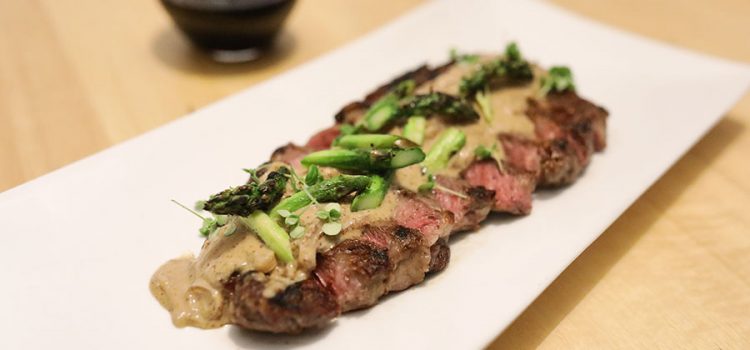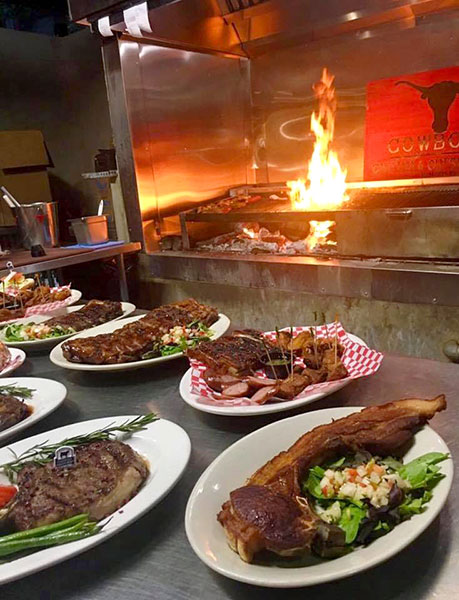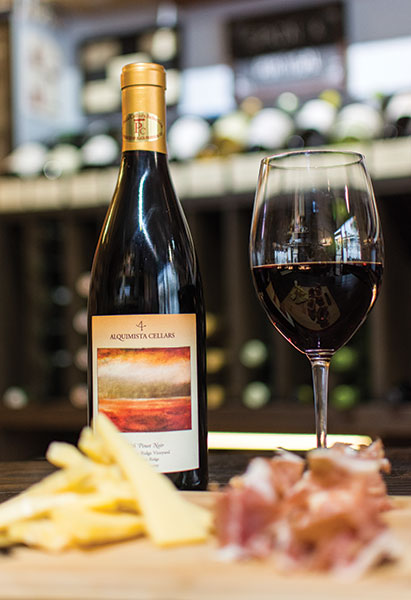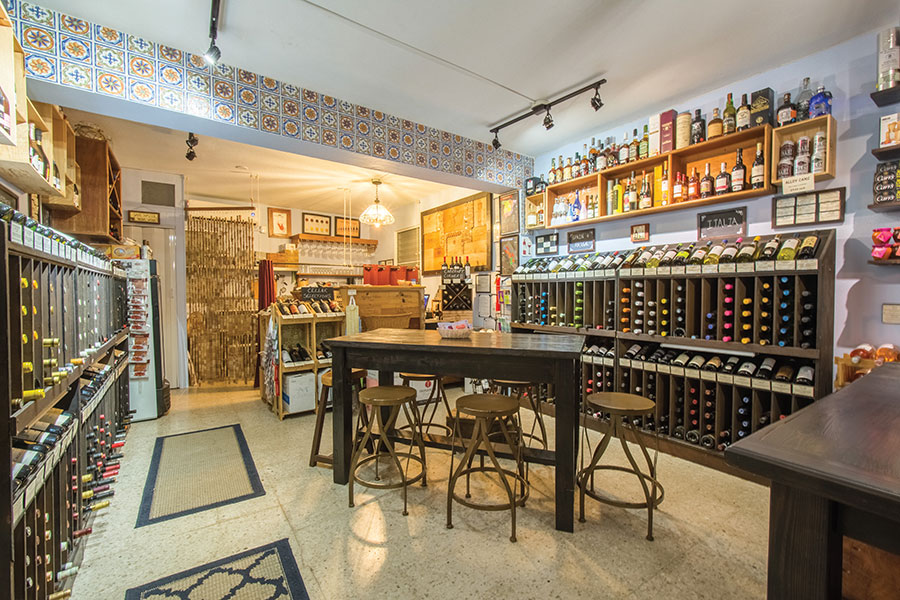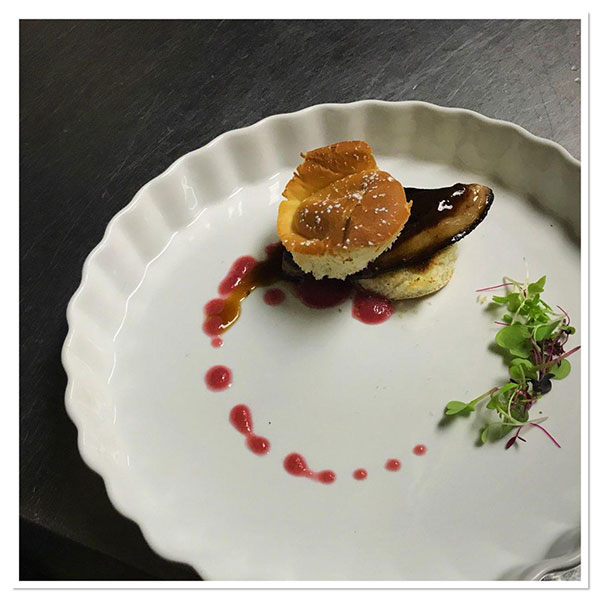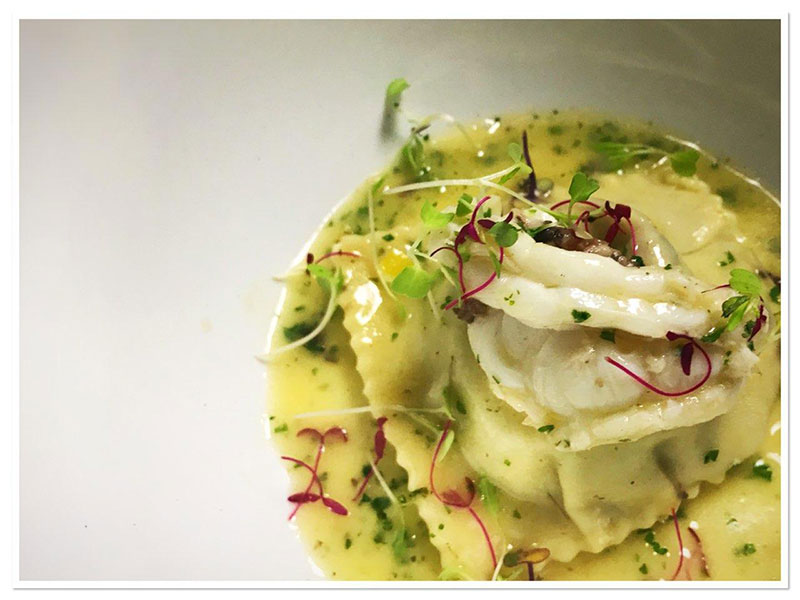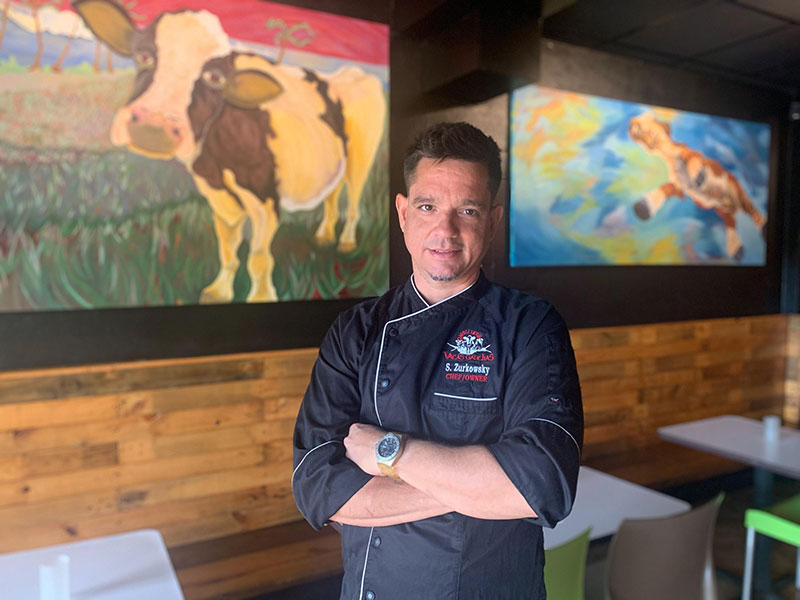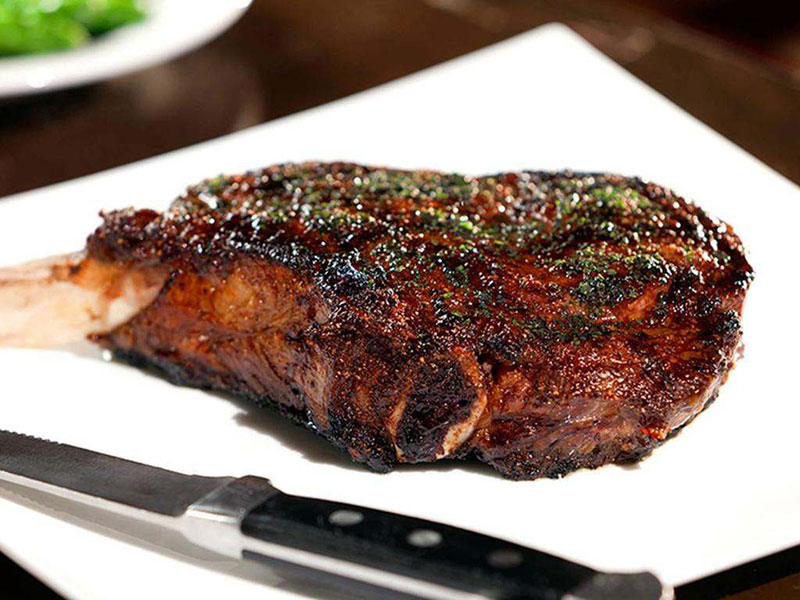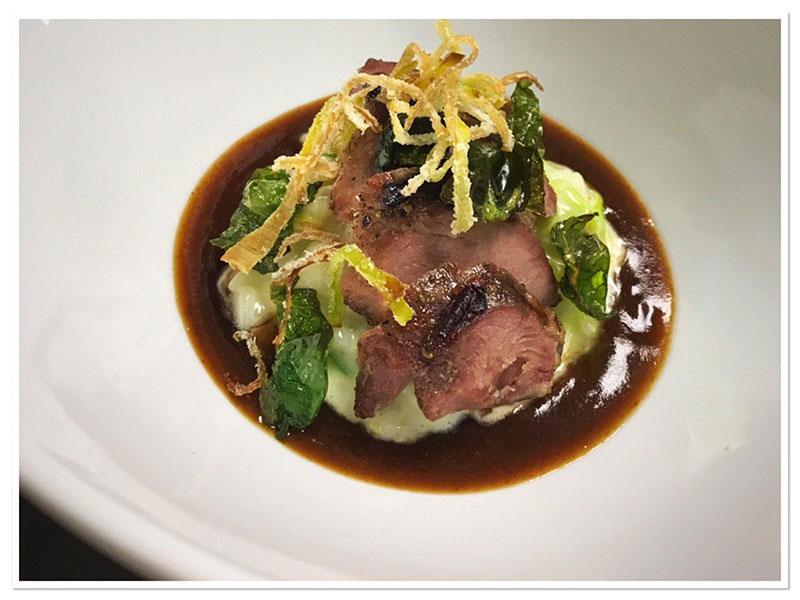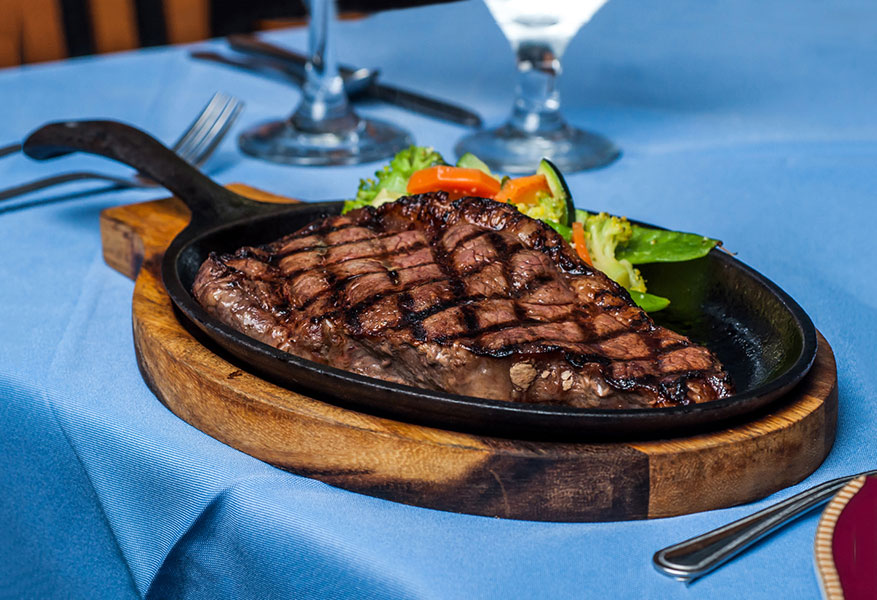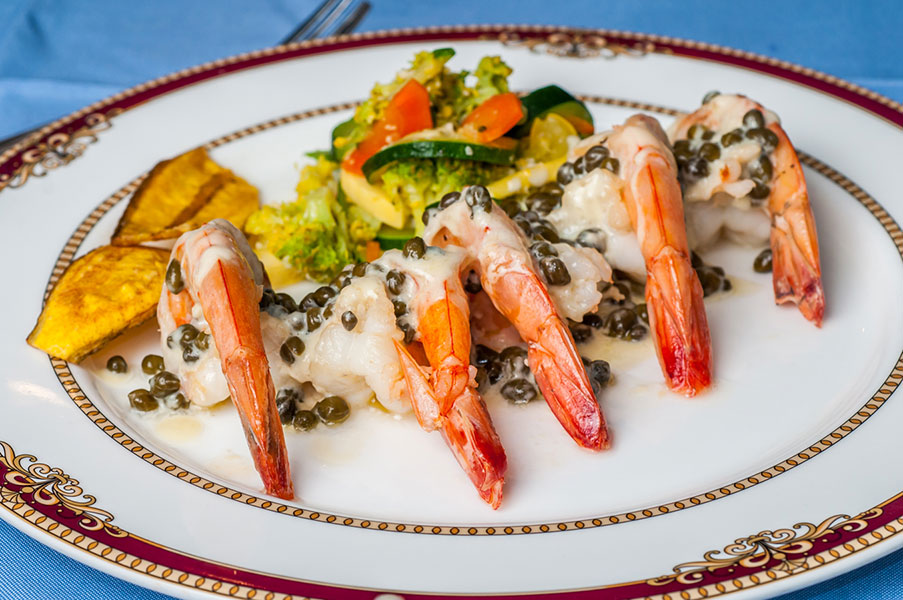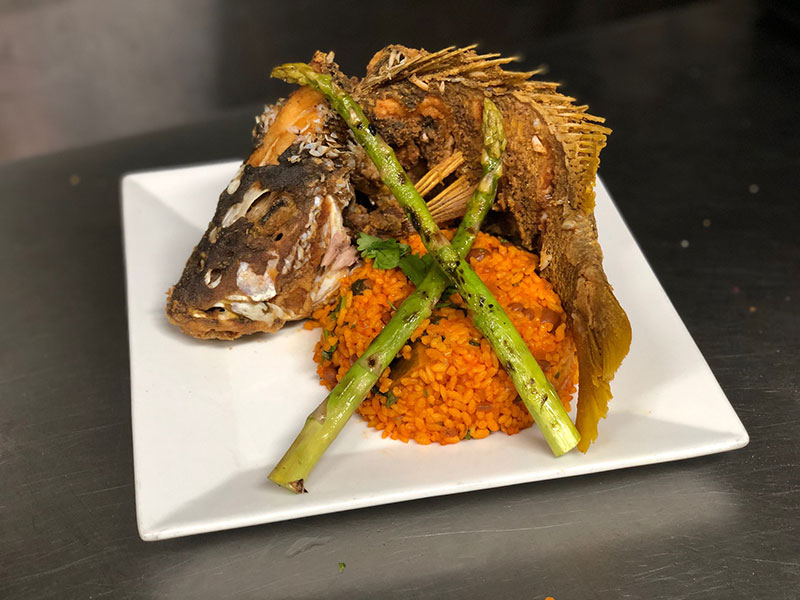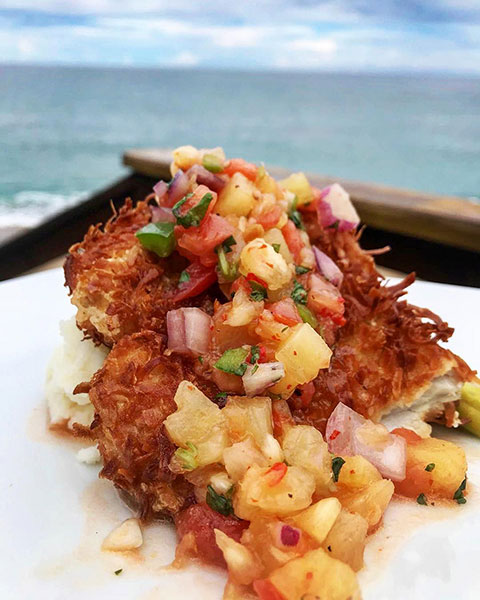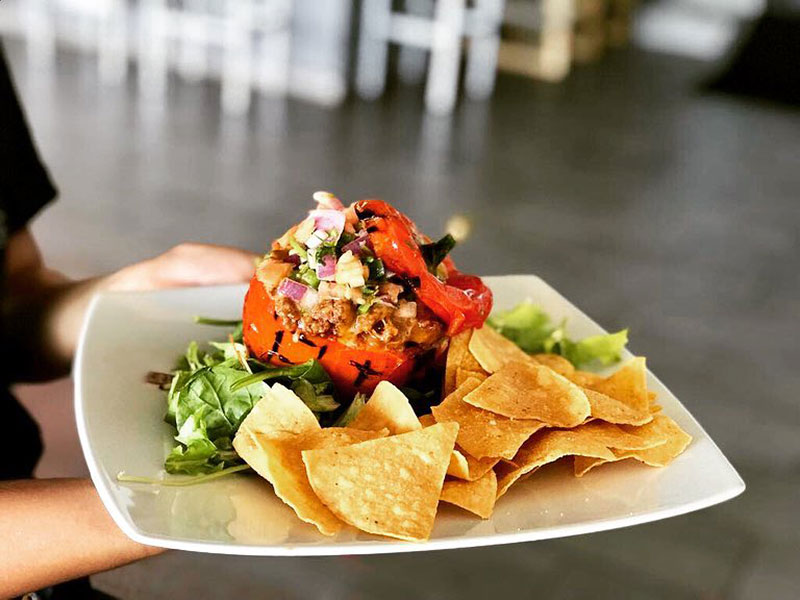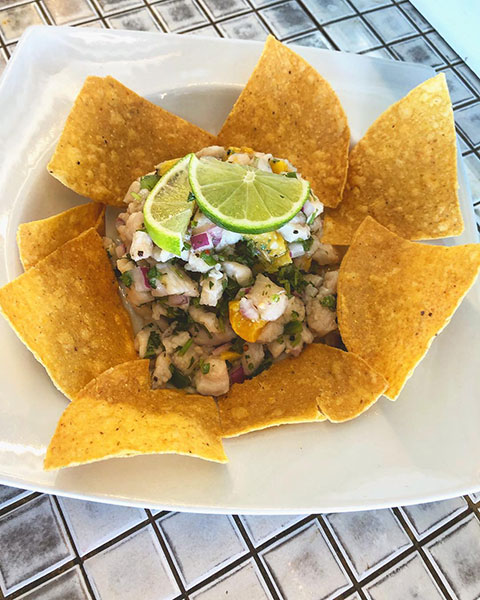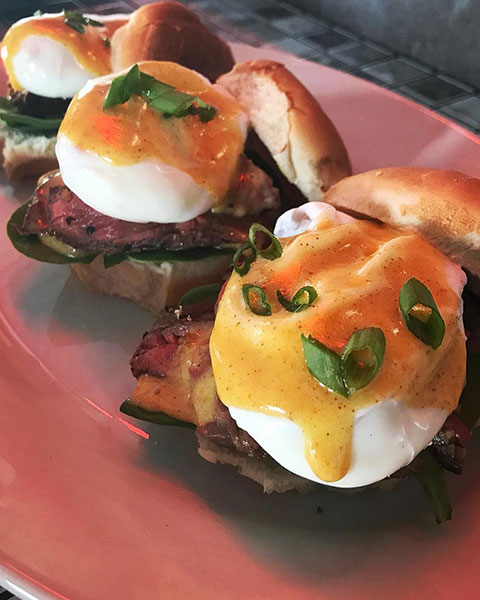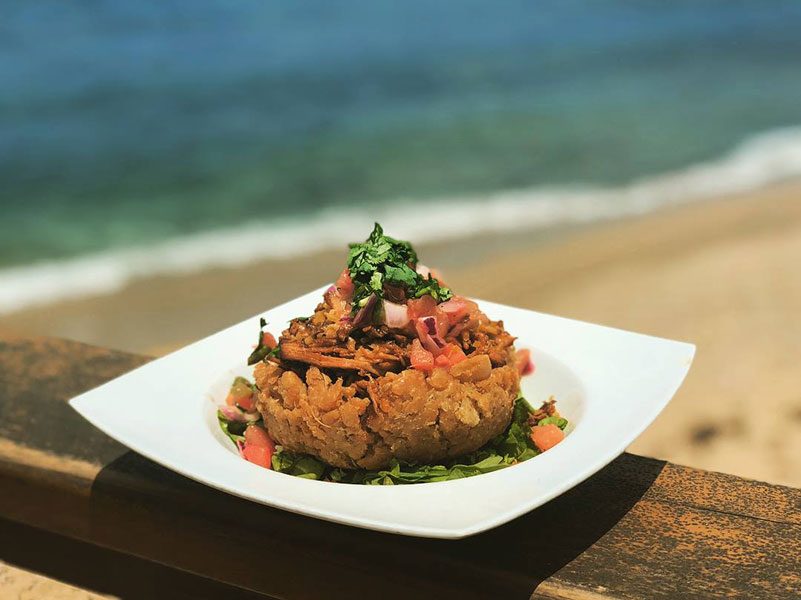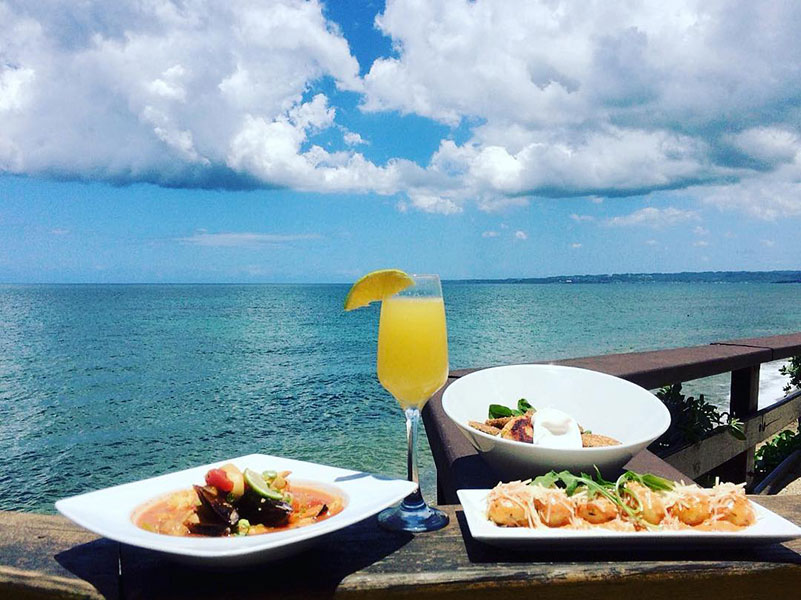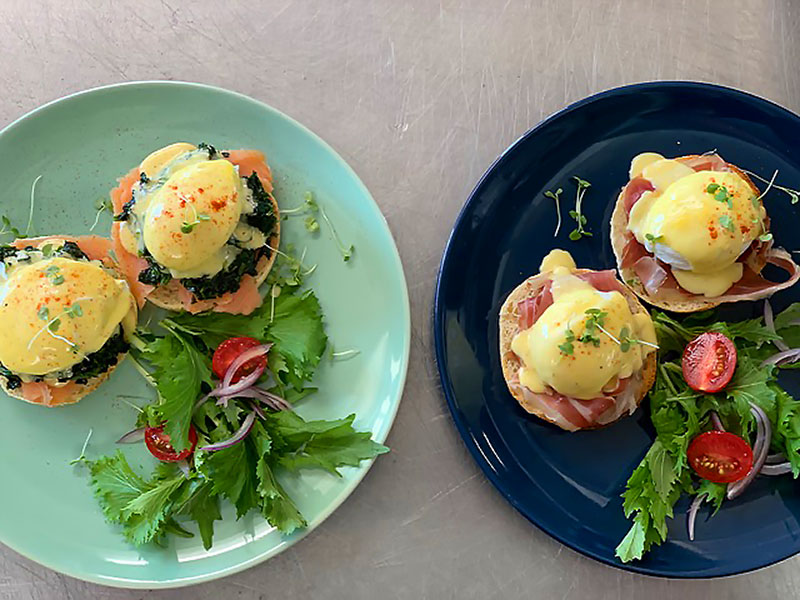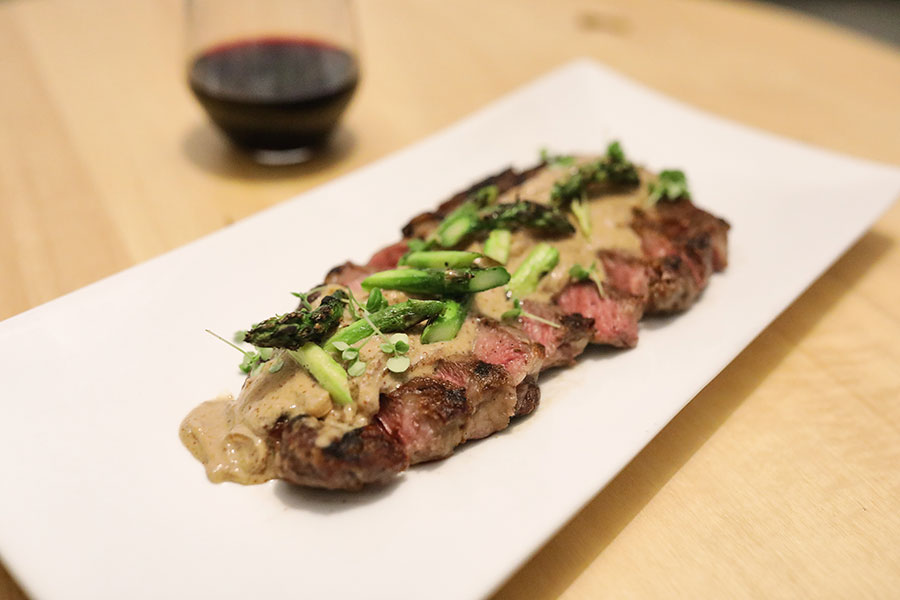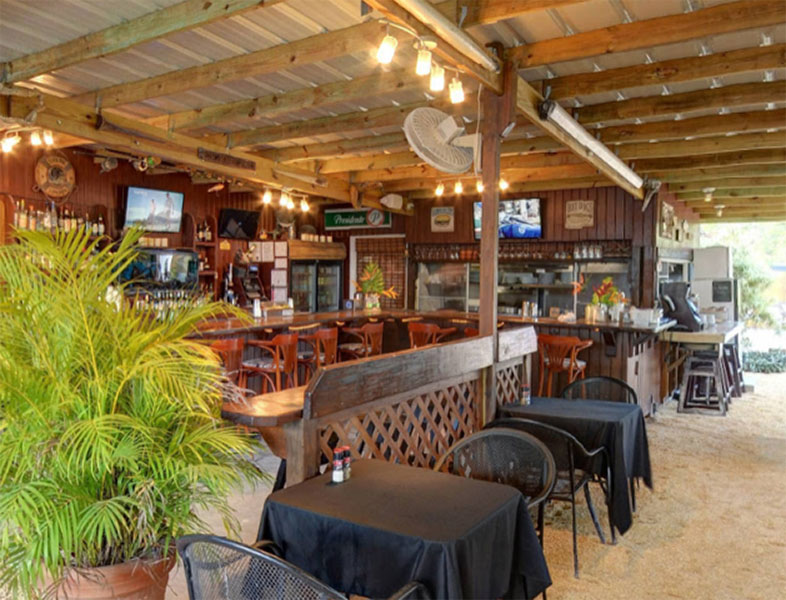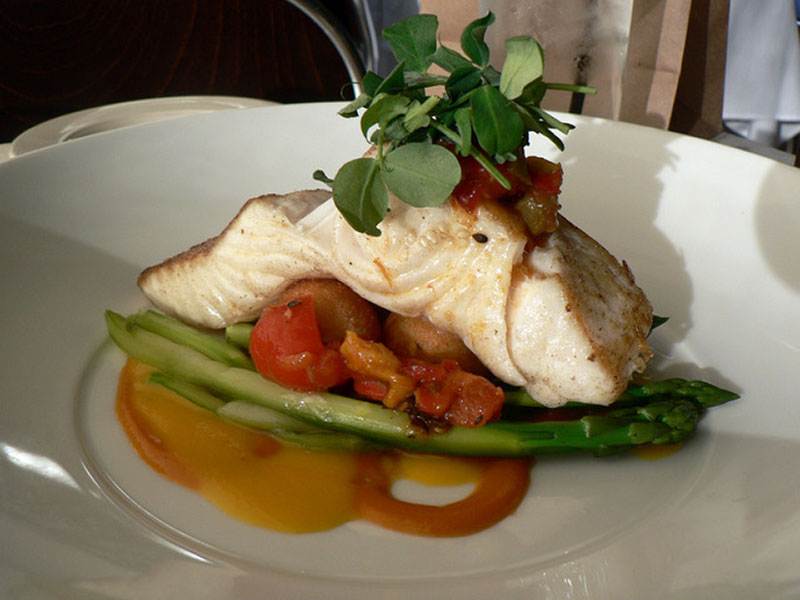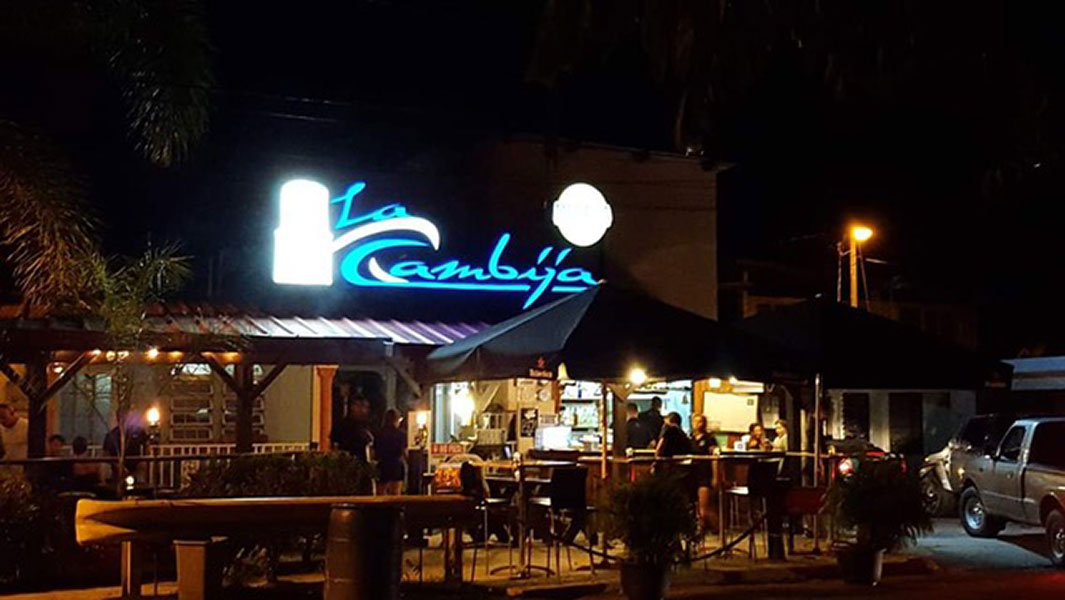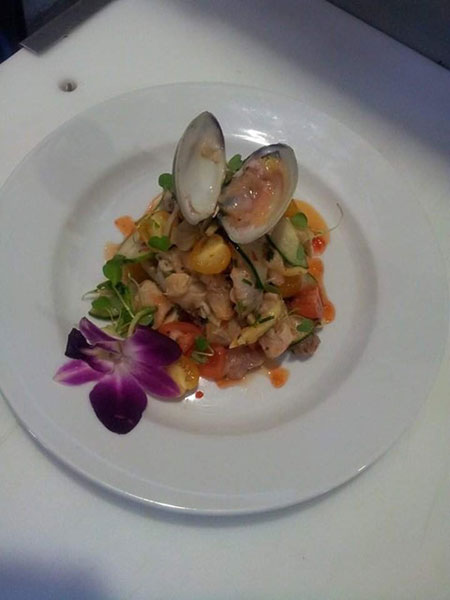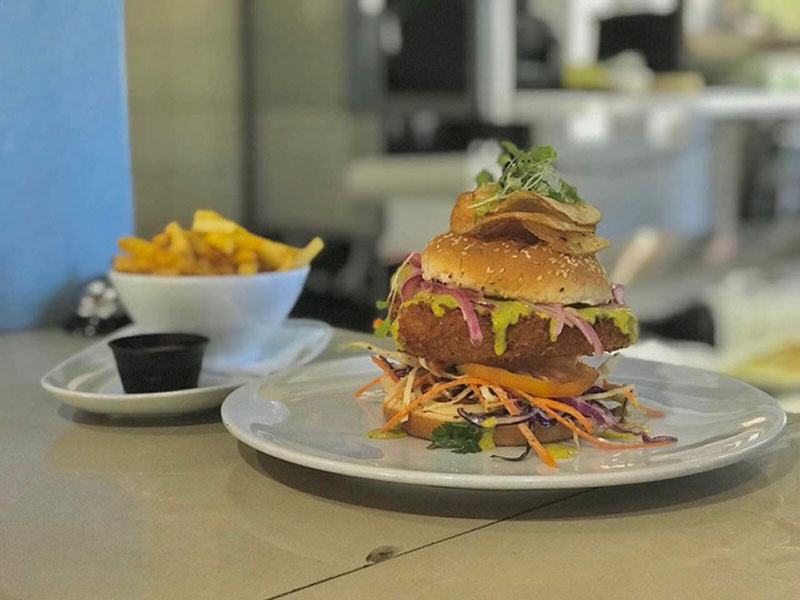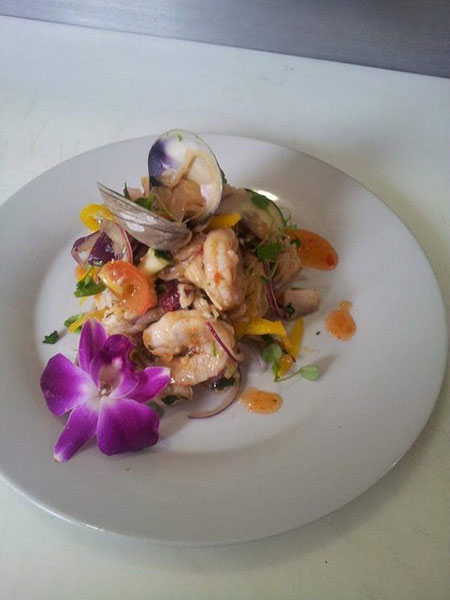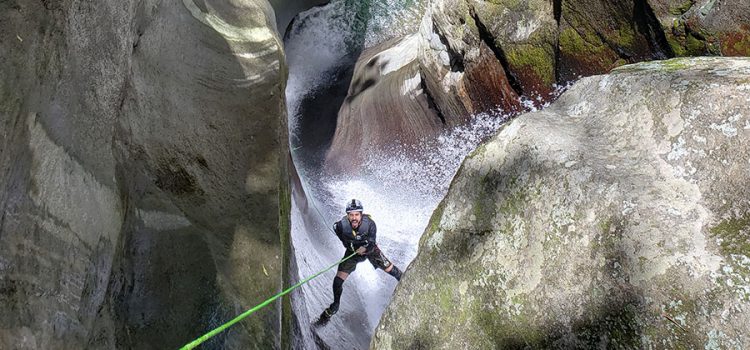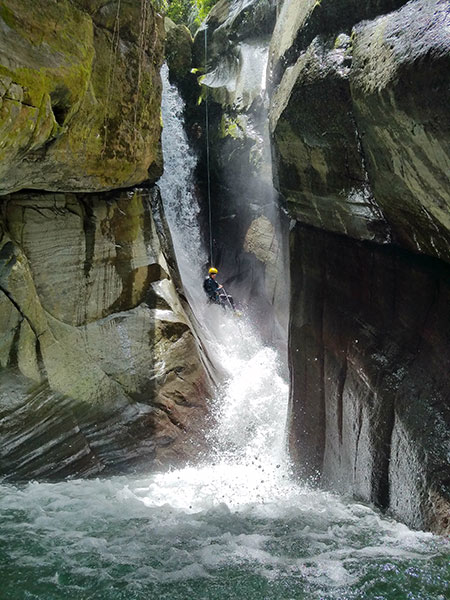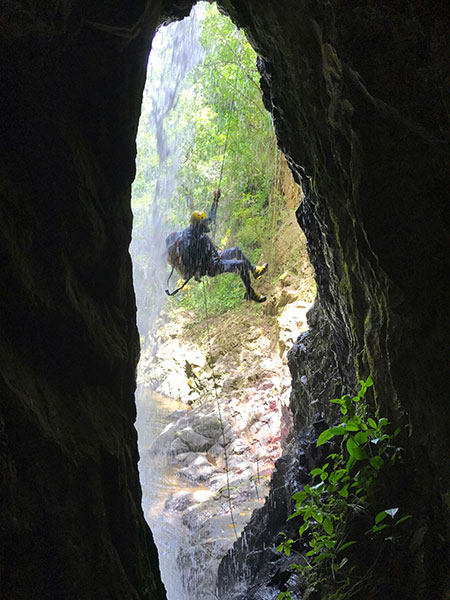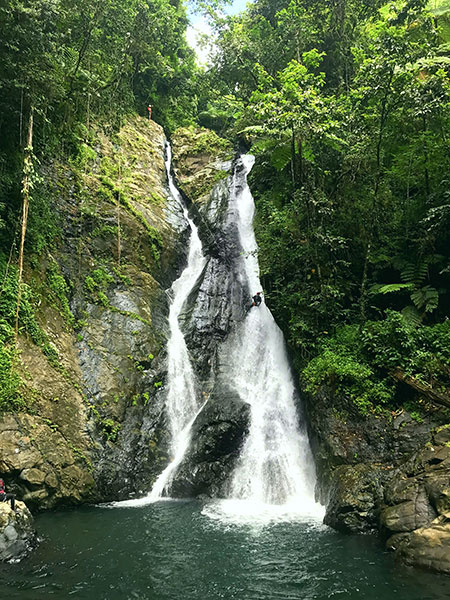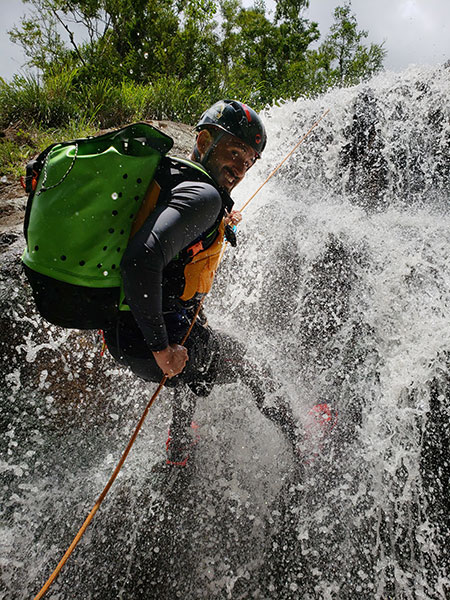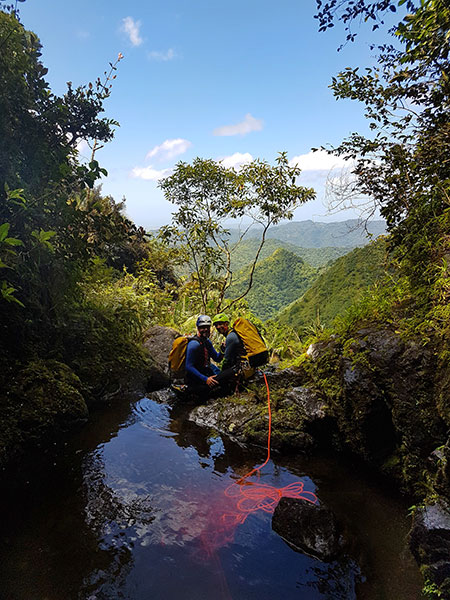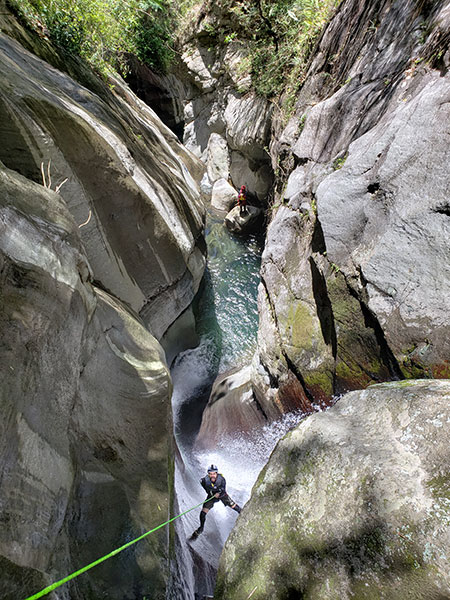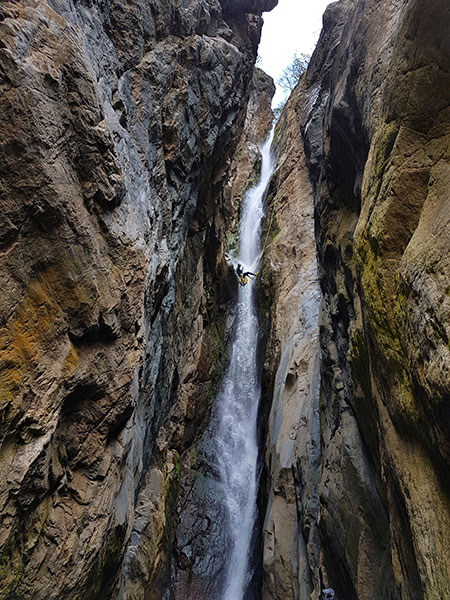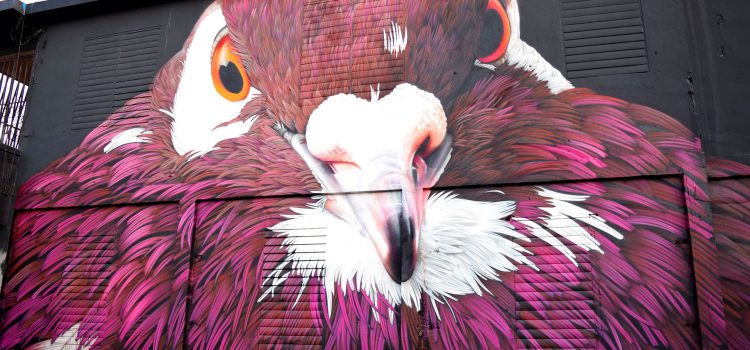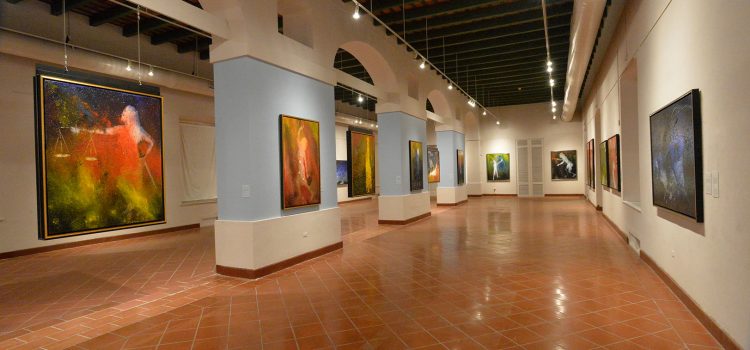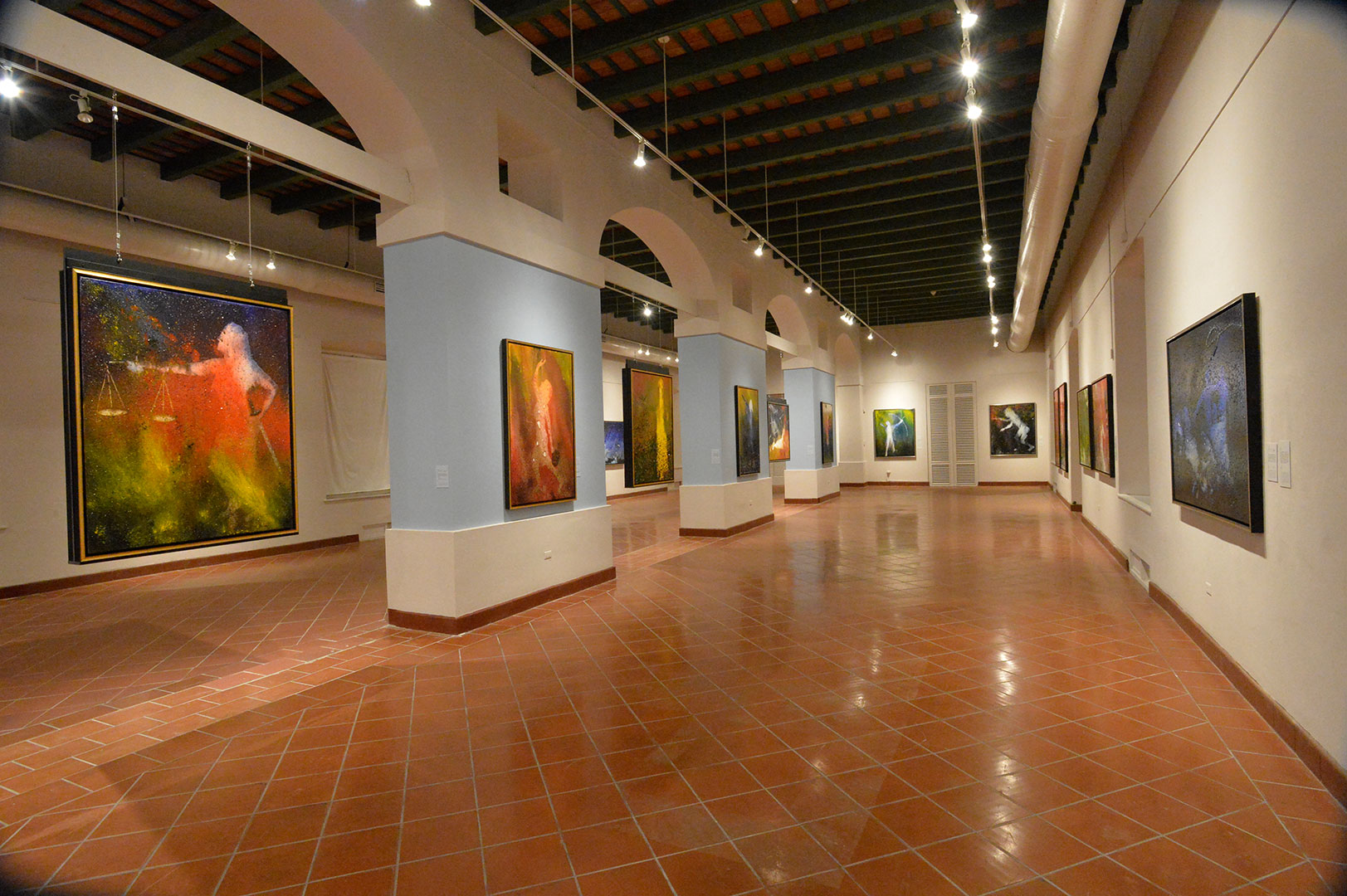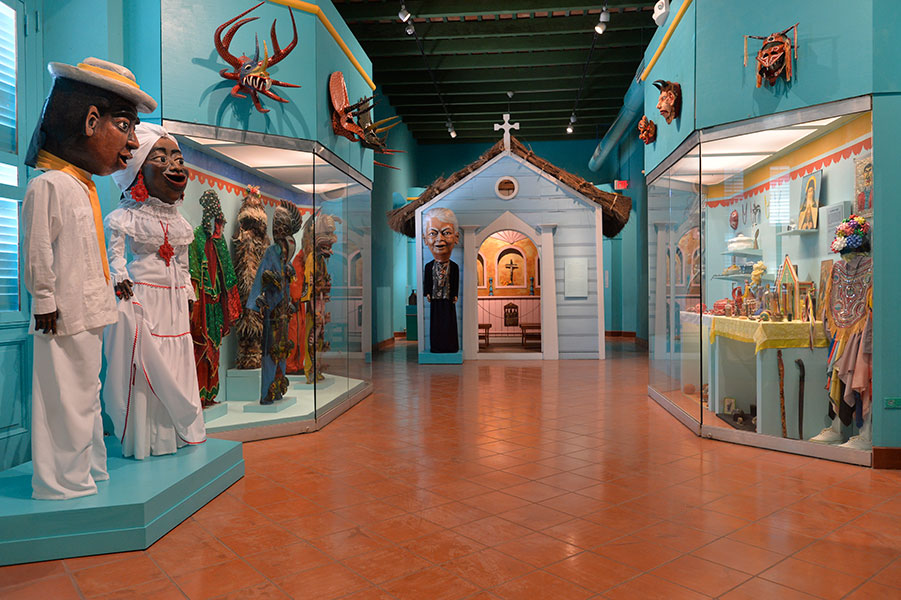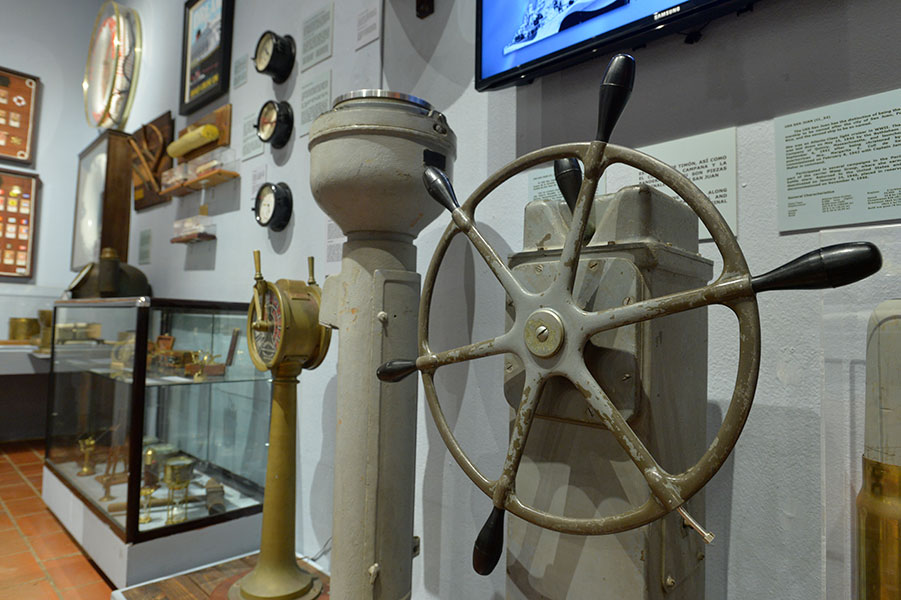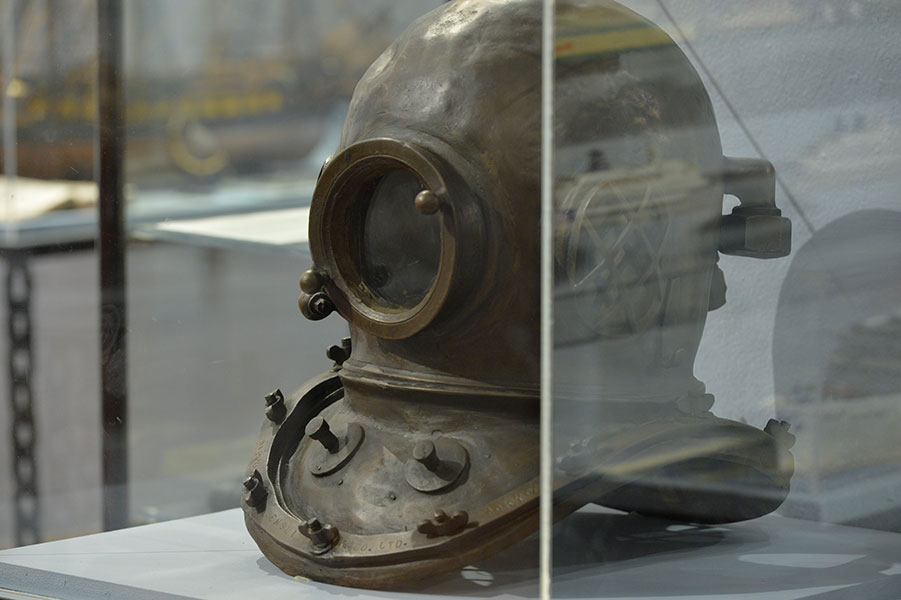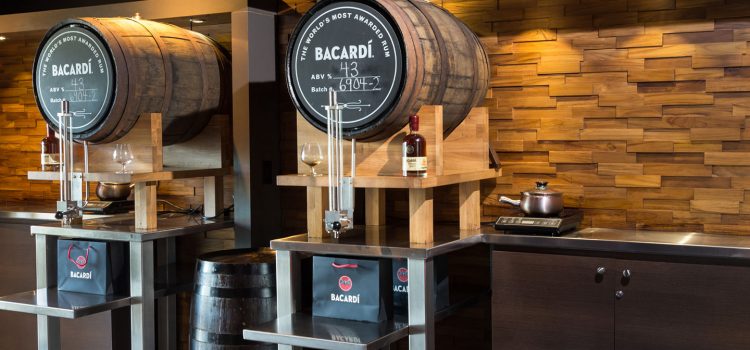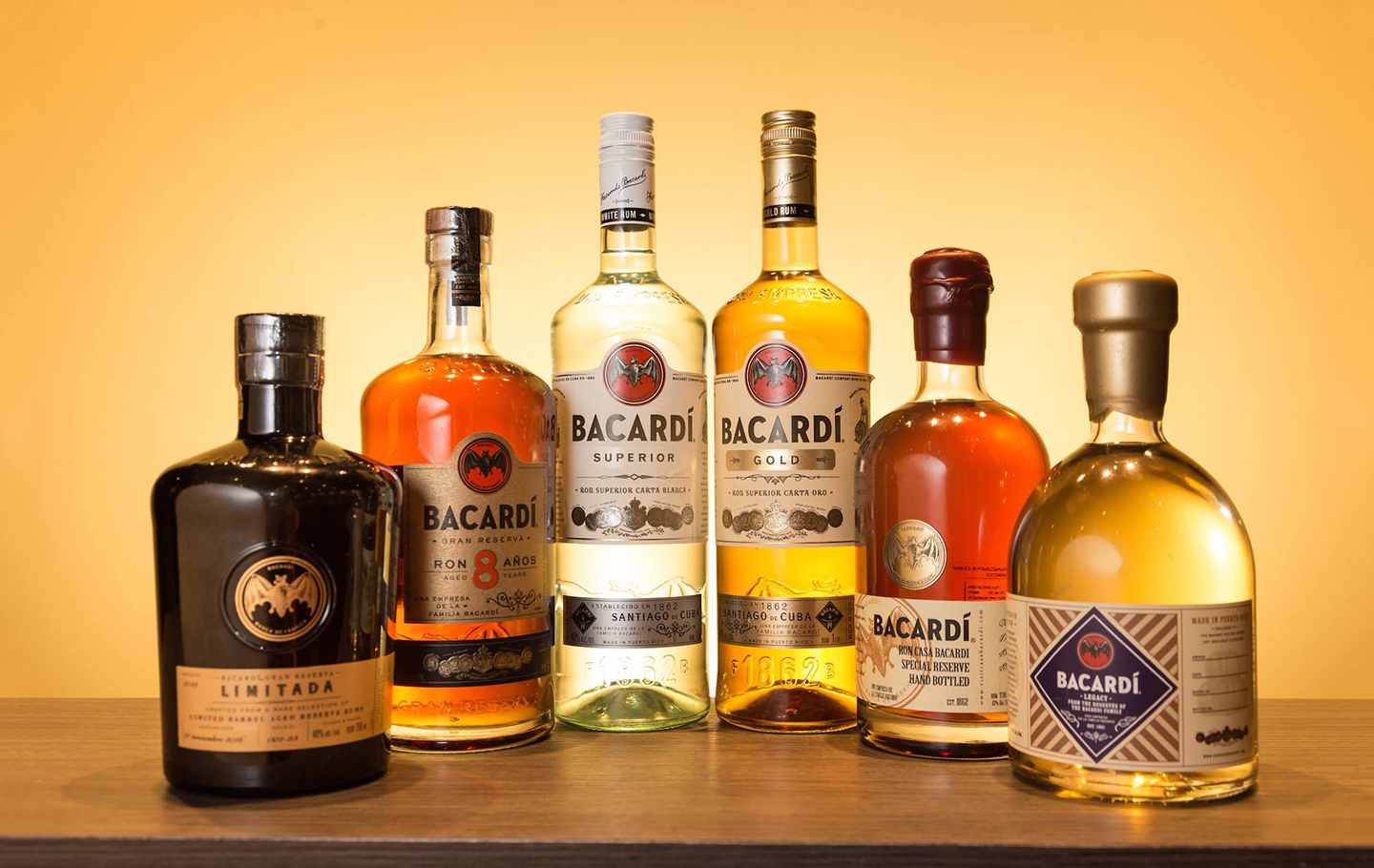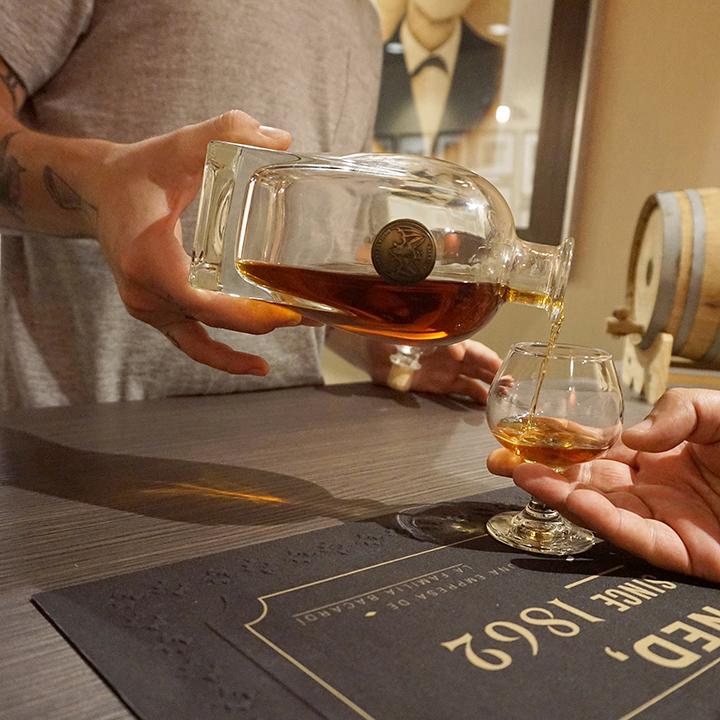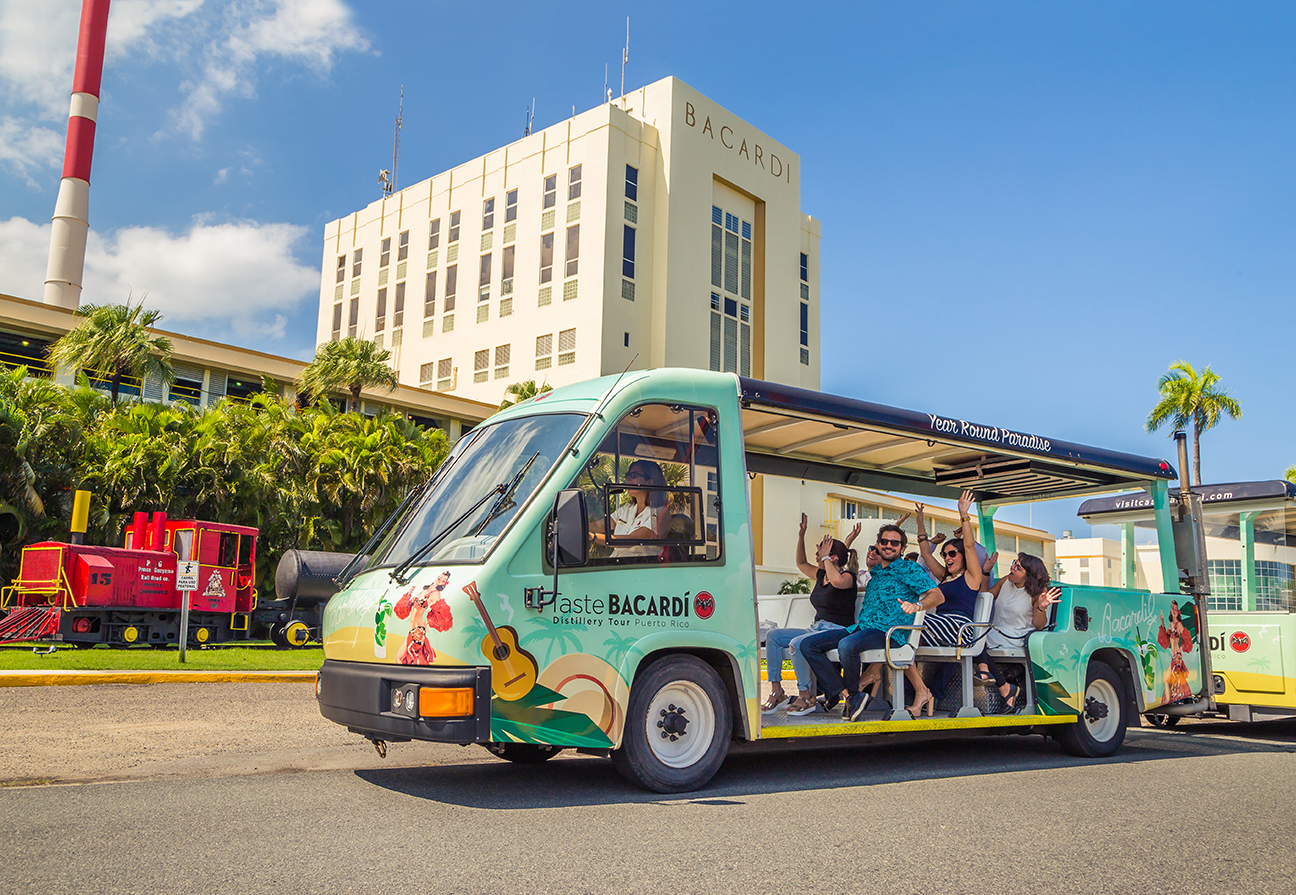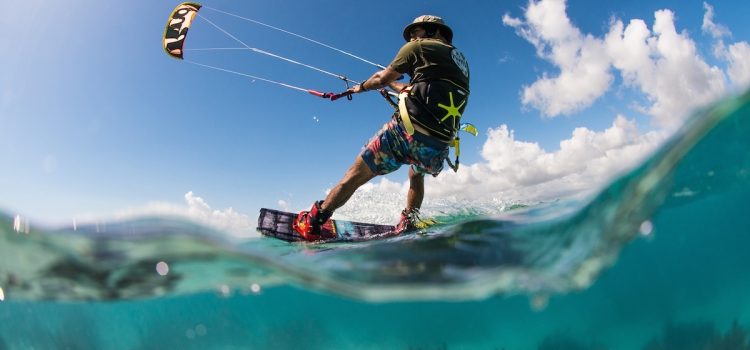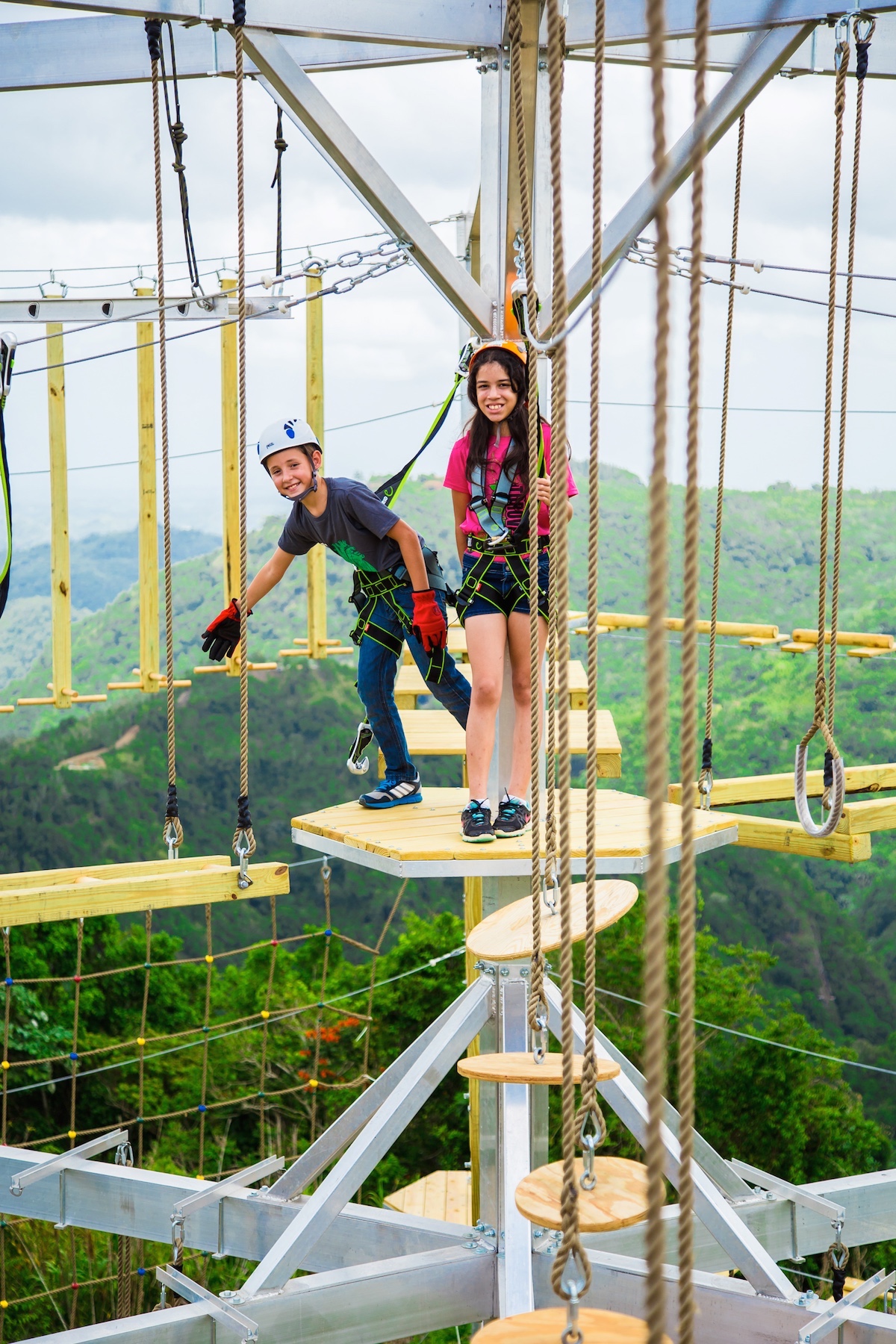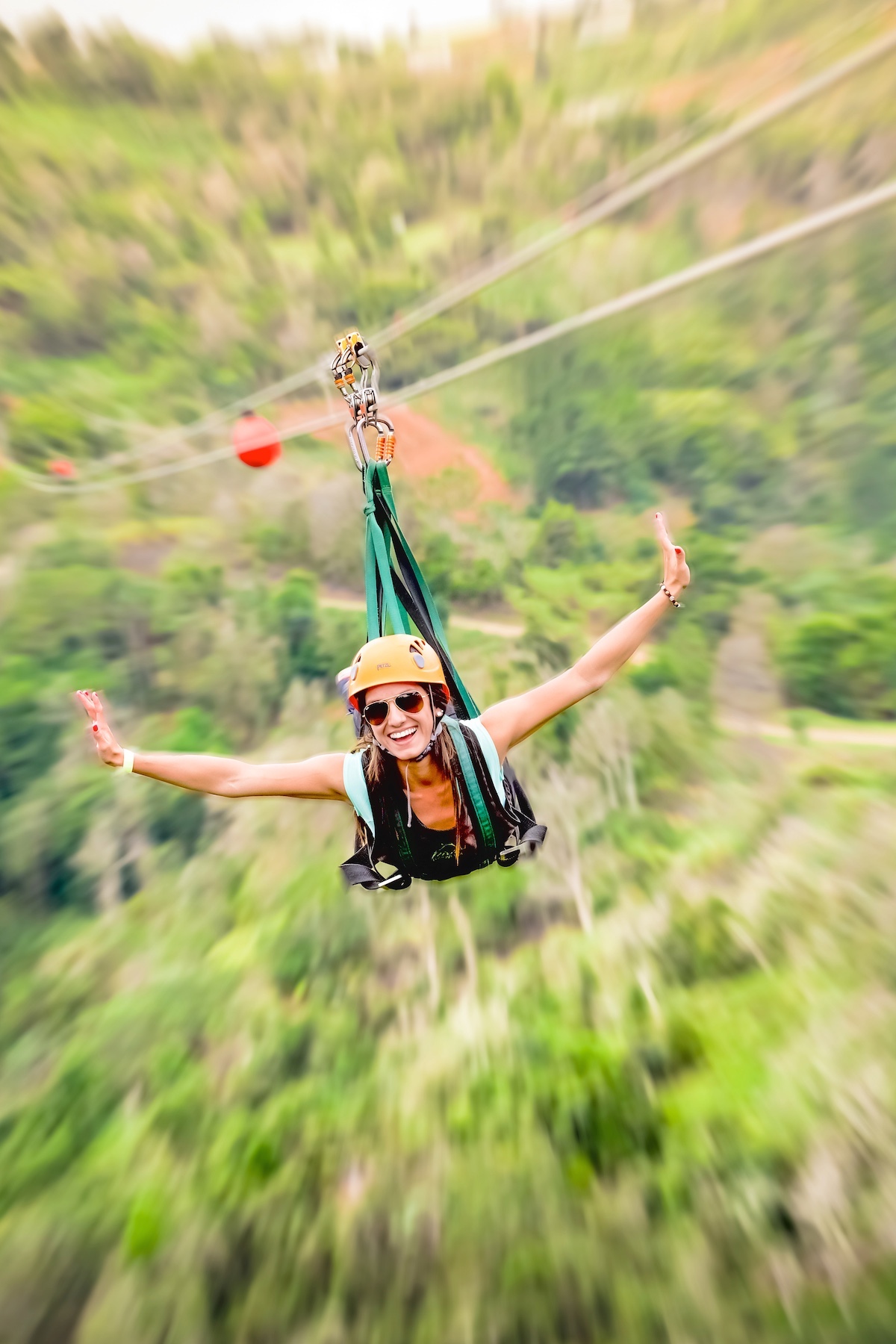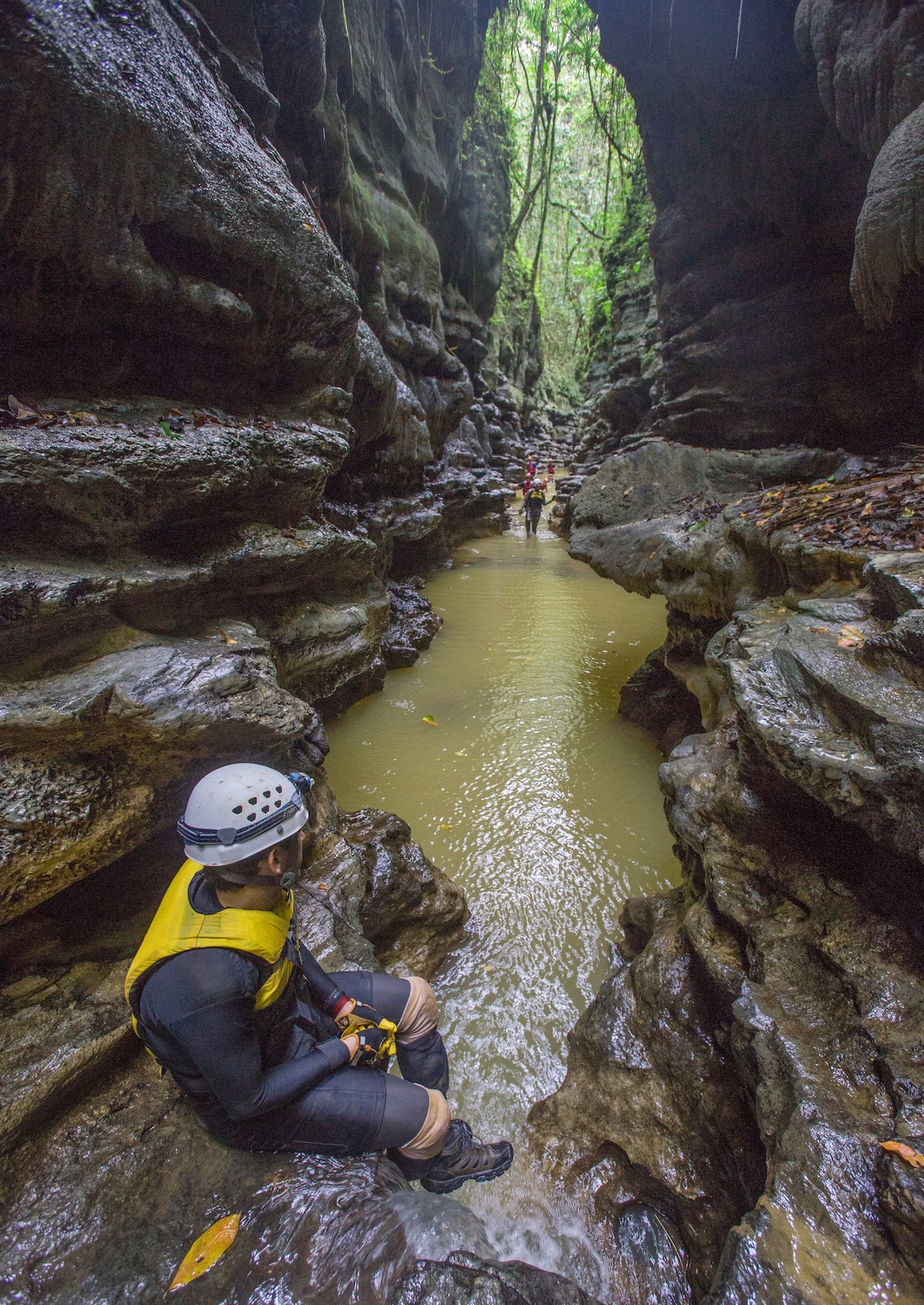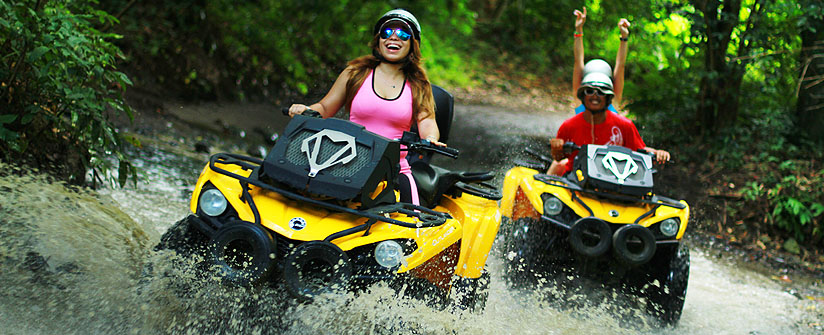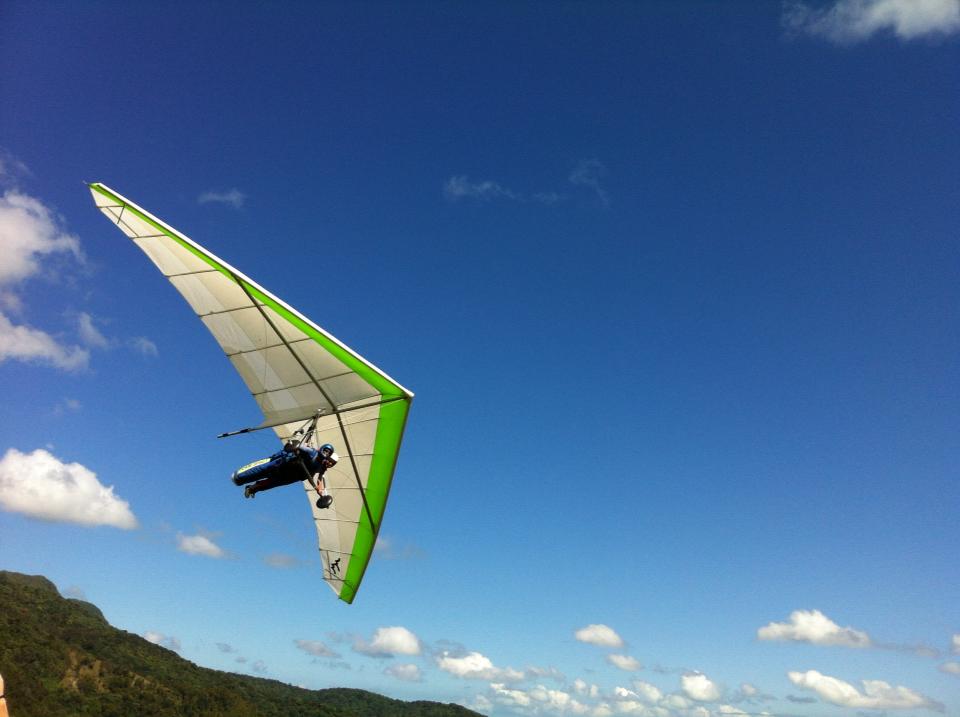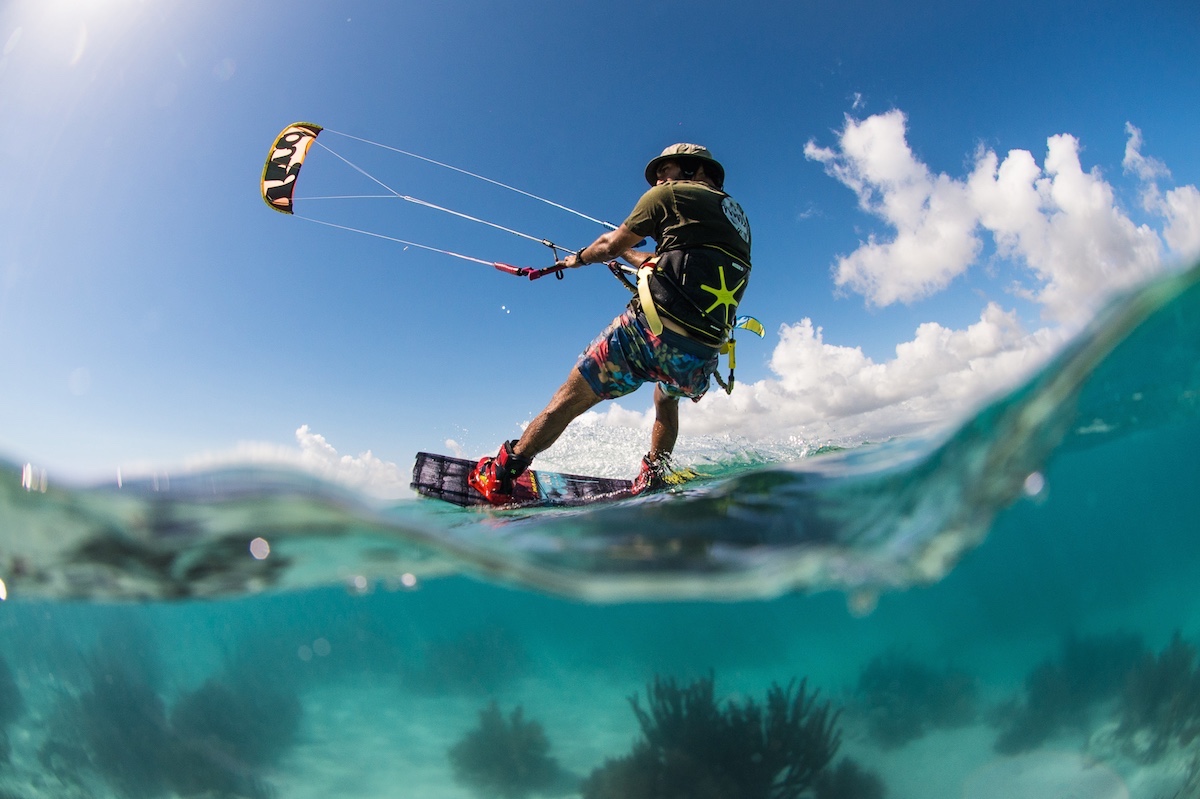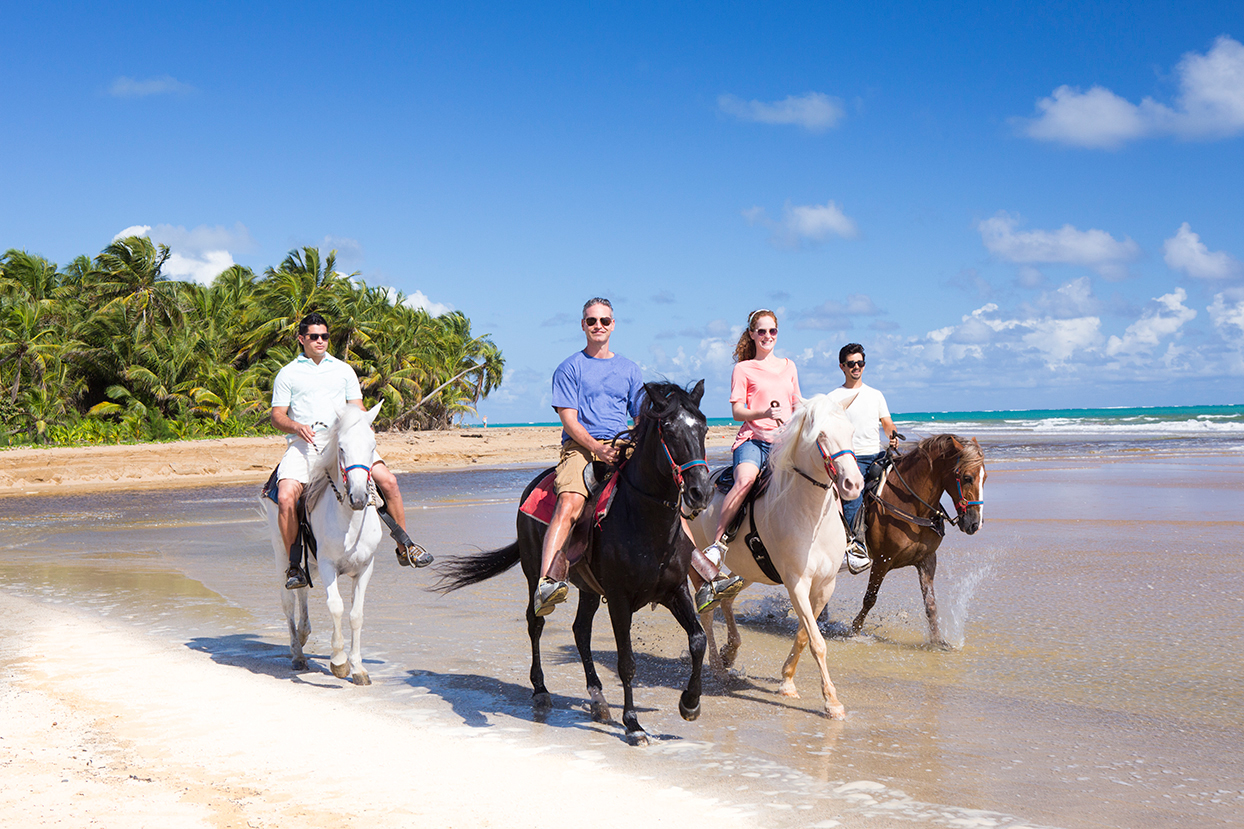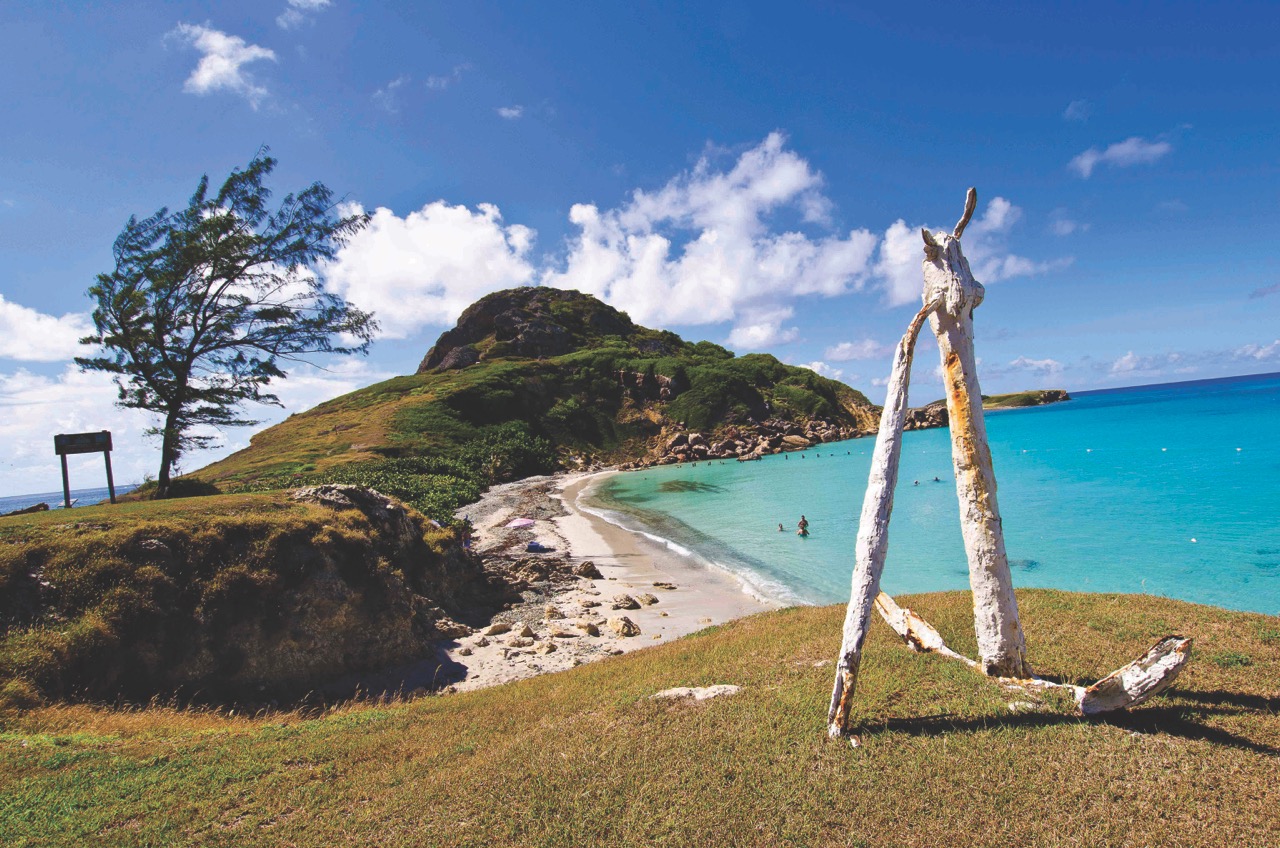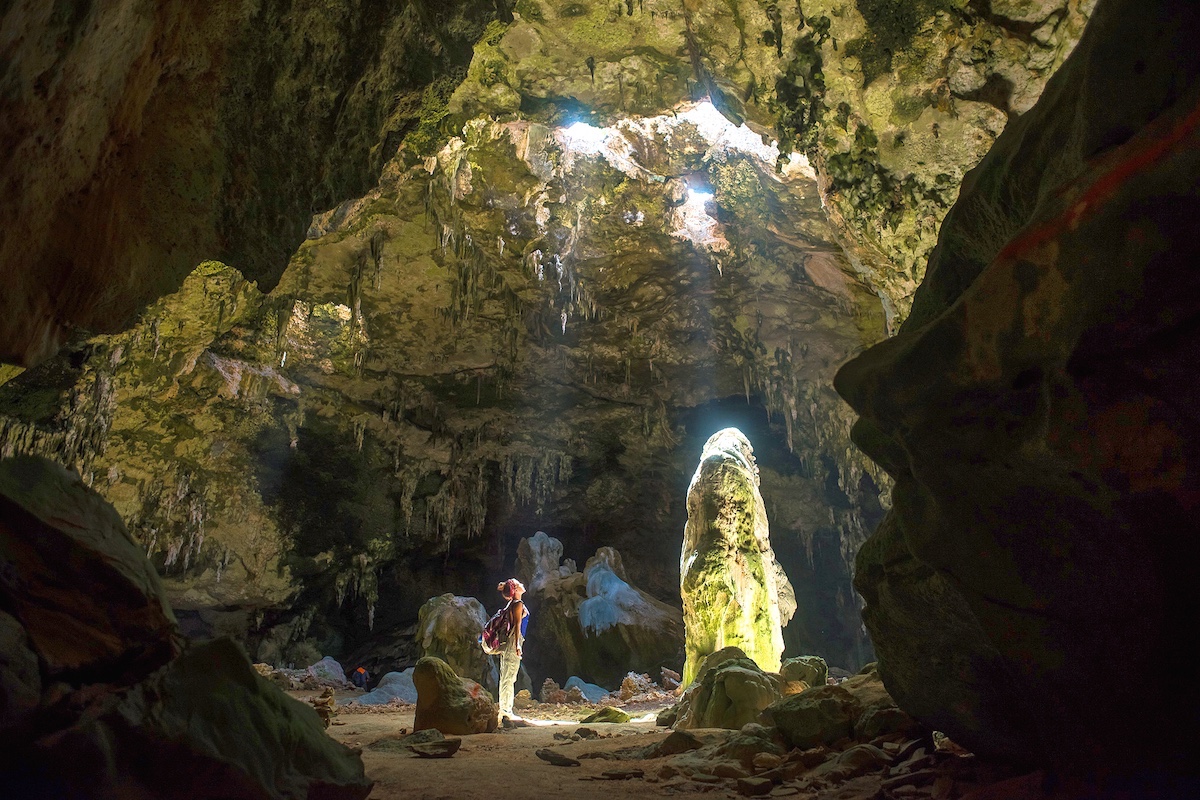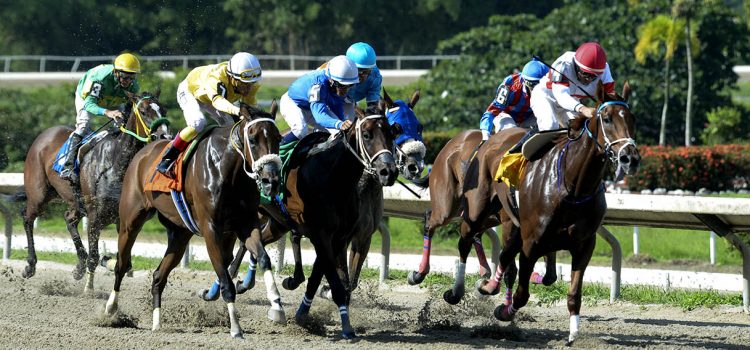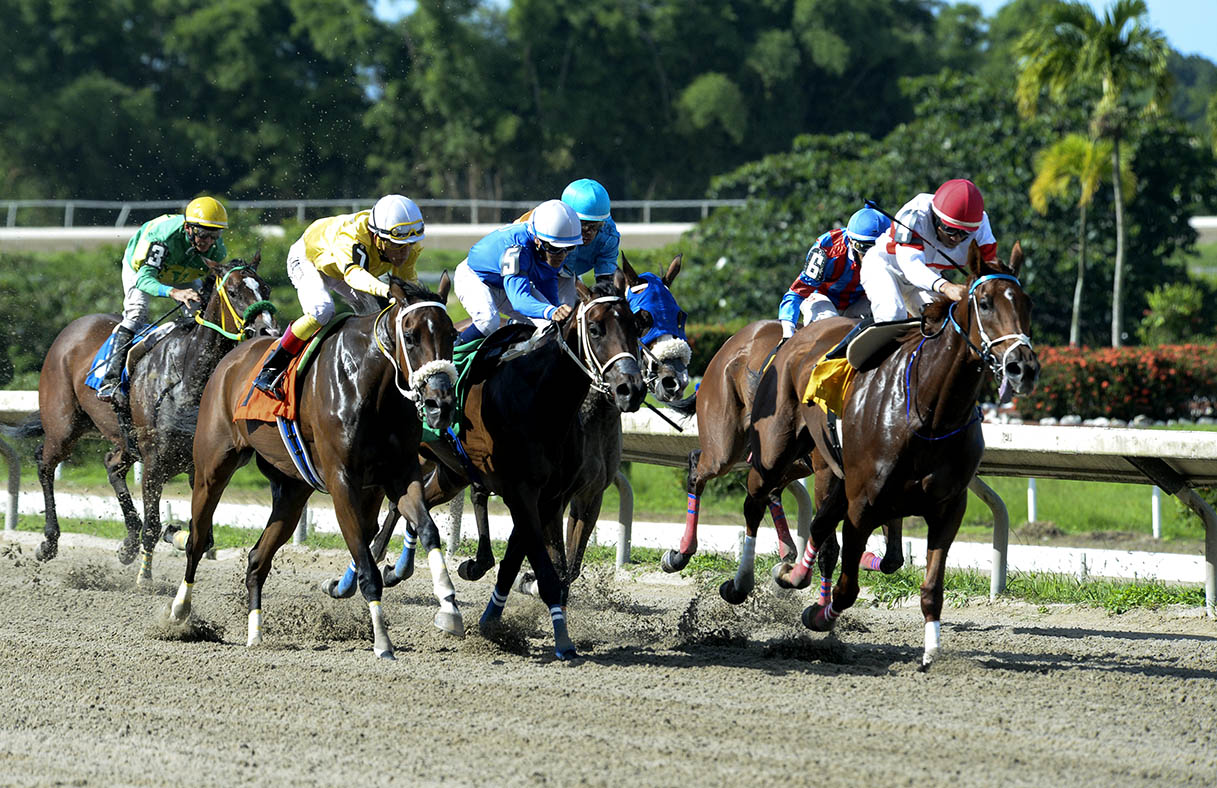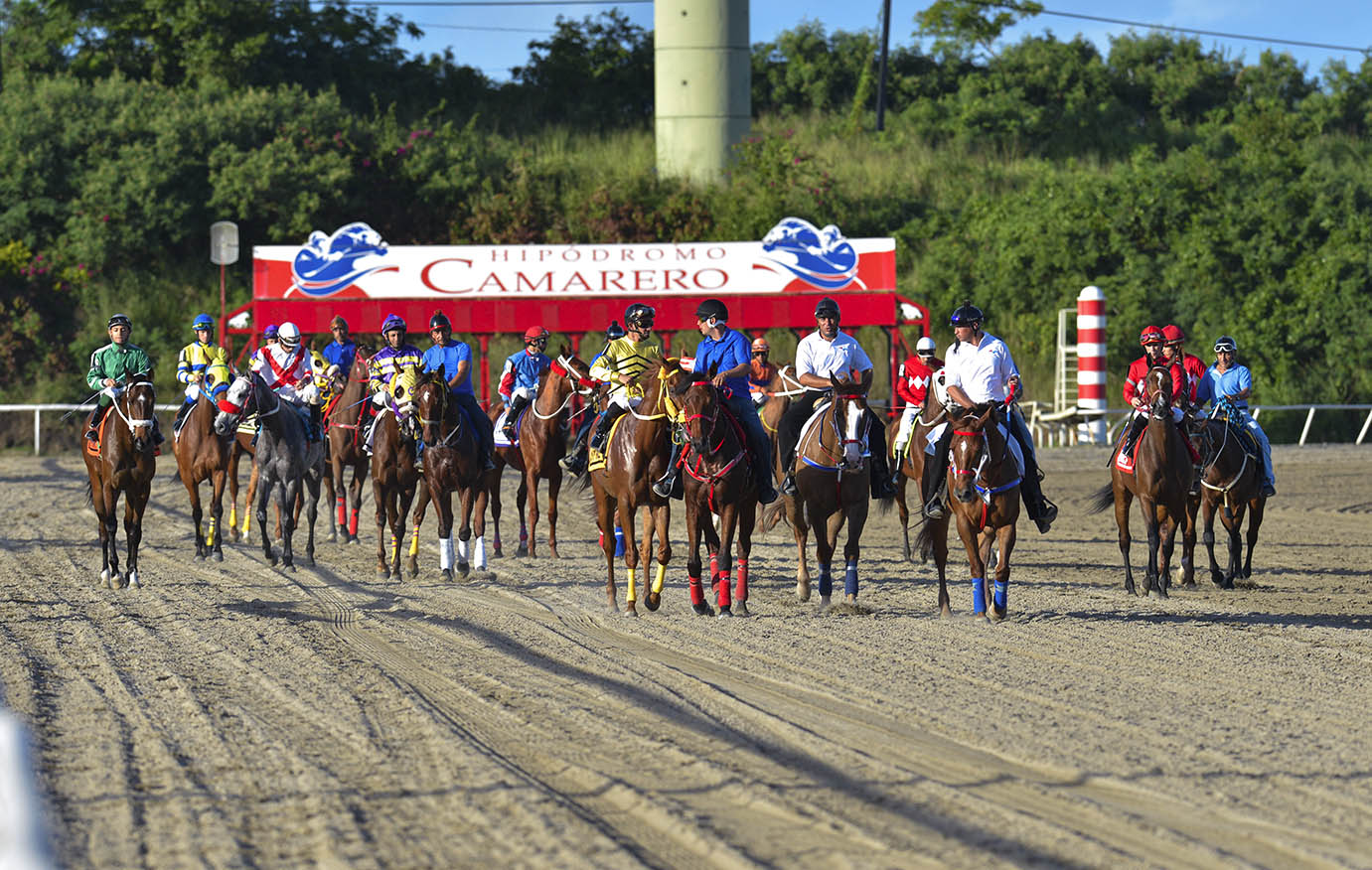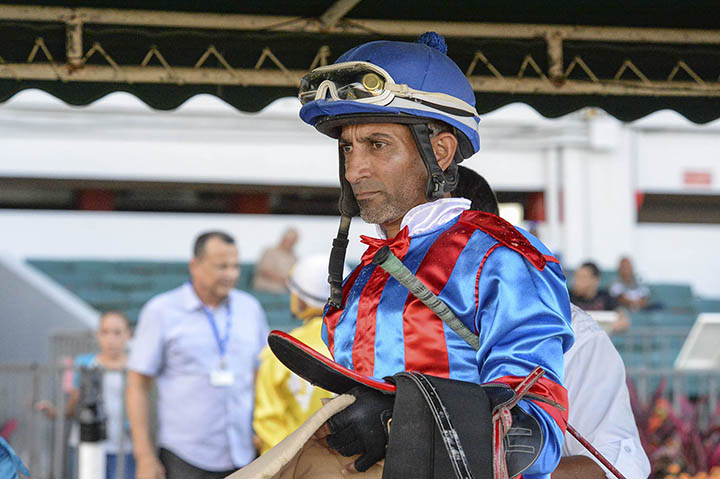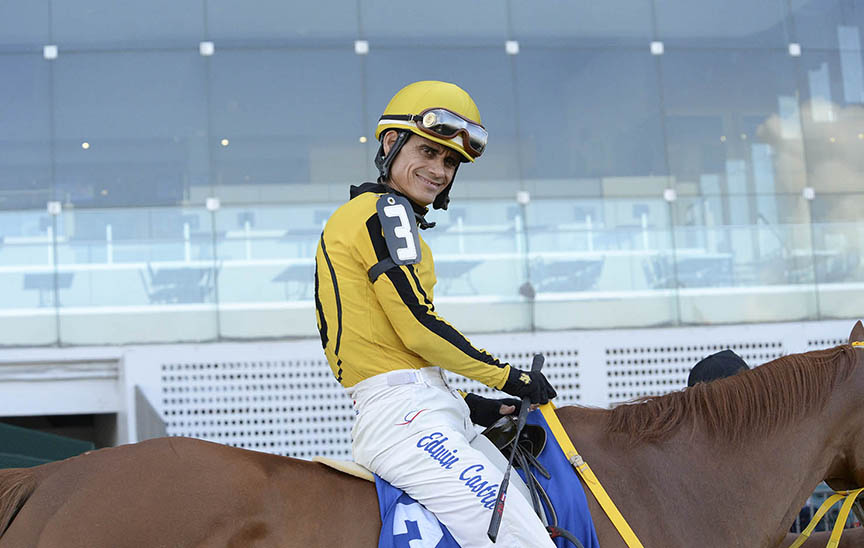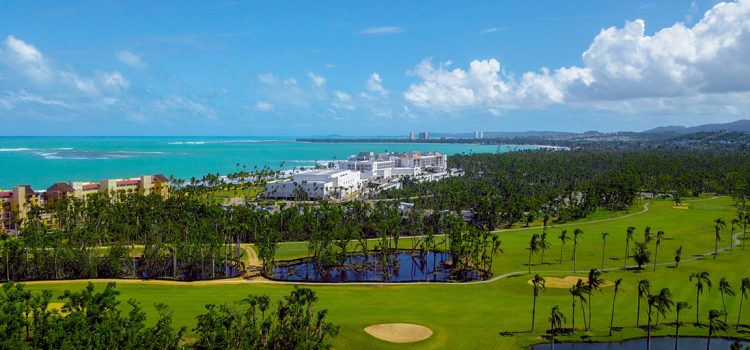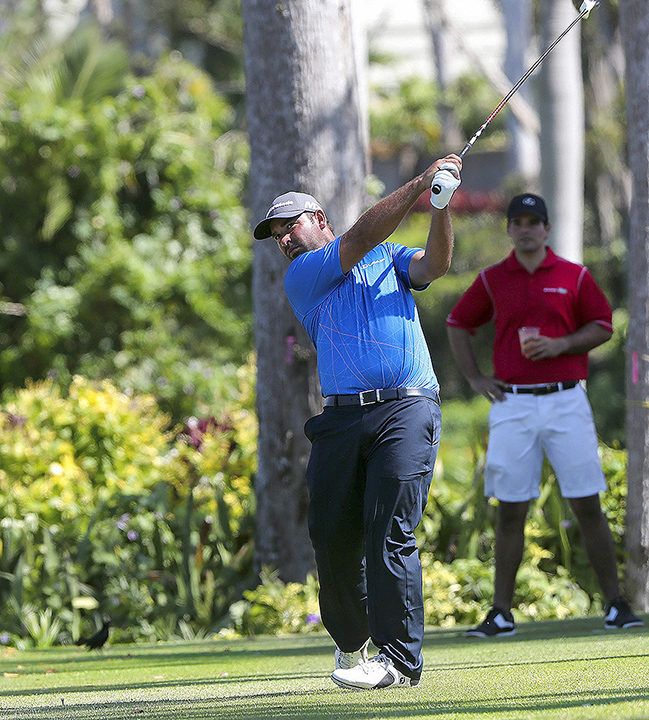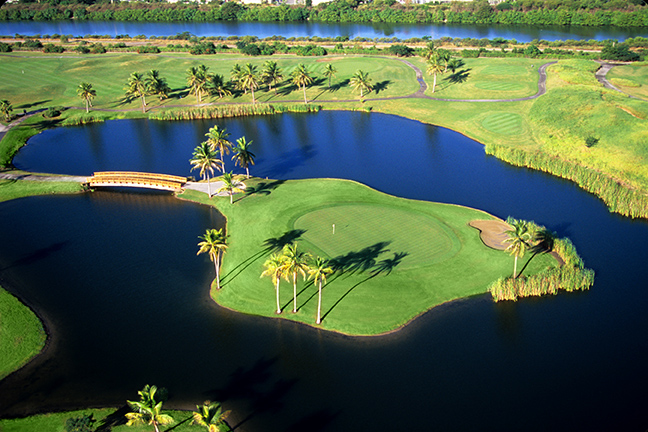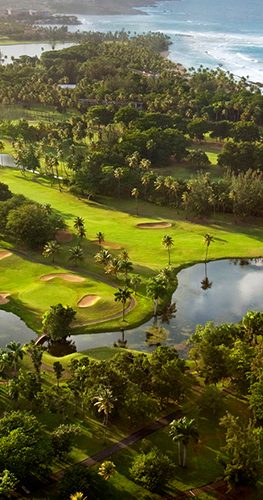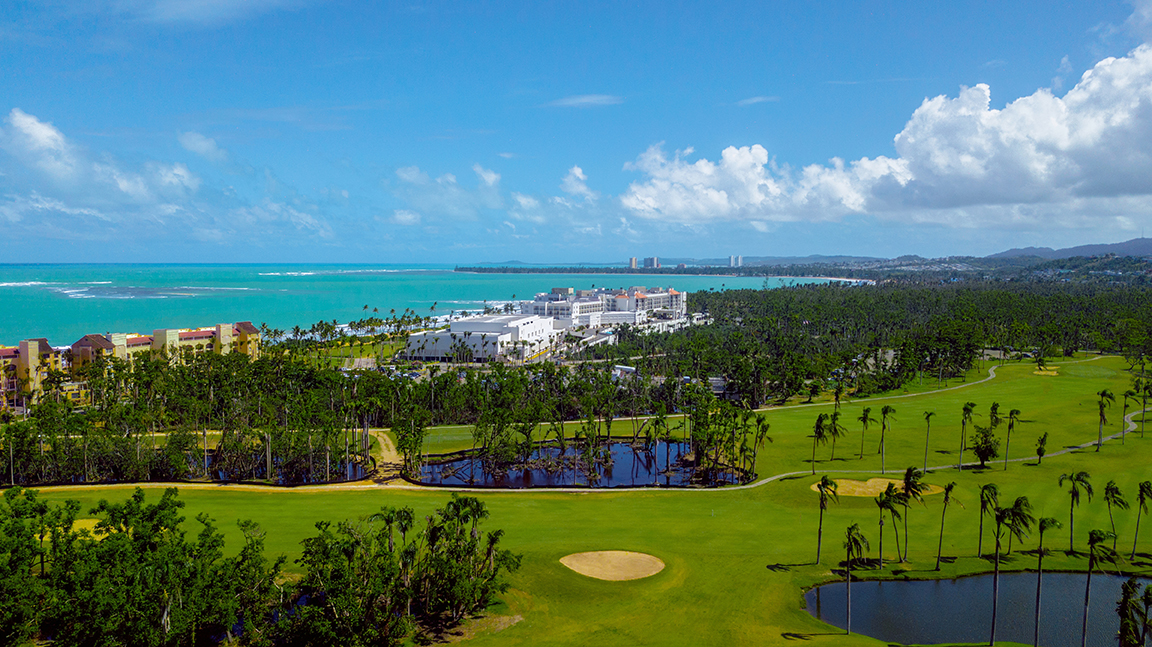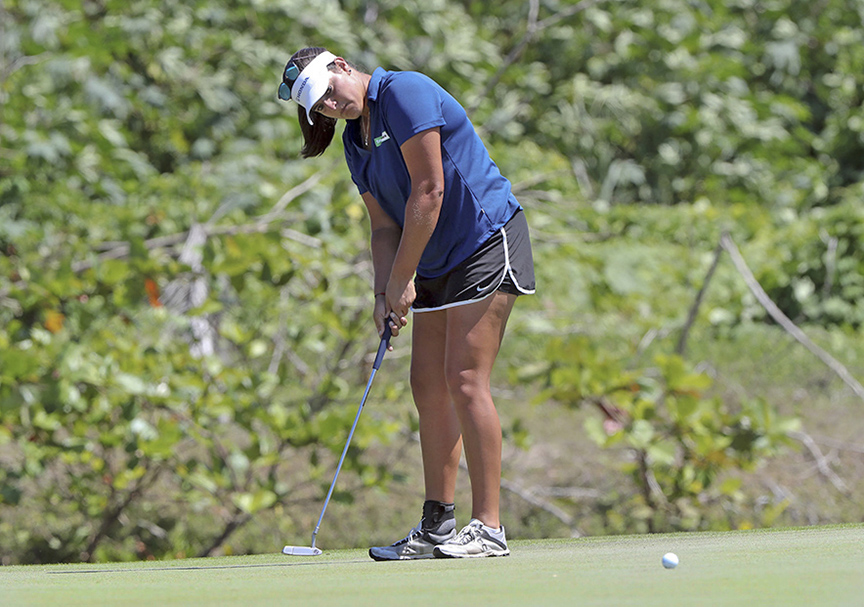Find that unique travel memento in Old San Juan
Striking architecture, brilliantly colored buildings, awe-inspiring Caribbean vistas, and a vibrant culture best describes Old San Juan, the oldest city in the U.S. and its territories. And when it comes to retail, its centuries-old blue cobblestone streets are lined with an enticing array of unique stores that can only be found in this enchantingly historic neighborhood.
Striking architecture, brilliantly colored buildings, awe-inspiring Caribbean vistas, and a vibrant culture best describes Old San Juan, the oldest city in the U.S. and its territories. And when it comes to retail, its centuries-old blue cobblestone streets are lined with an enticing array of unique stores that can only be found in this enchantingly historic neighborhood.
Whether you’re looking for the perfect gift for a loved one or a colorful memento from an unforgettable trip, you’ll find it all in the Old City.
Puerto Rico’s intrinsic beauty has inspired artists for centuries, and many shops throughout Old San Juan, most on our list found on Fortaleza Street, highlight the work of local artisans. Stepping into Puerto Rican Arts and Crafts art gallery is like being engulfed in the imaginations of some of the island’s most creative residents. Operating out of a restored Spanish colonial home for more than 40 years, the shelves here feature treasures like Roberto Maldonado’s hand-carved wooden Pica horses, colorful carnival masks by Ponce’s Miguel Caraballo and coconut crafts from Francisco “Panchi” Tirado.
A short stroll away on Fortaleza Street is sister shop Mi Pequeño San Juan which sells hand-painted miniature replicas of San Juan’s colorful buildings and distinct doors, which can be personalized with names and addresses for a truly one-of-a-kind souvenir.
By turning self-replenishing bamboo fields into crazy-soft bamboo fabrics, Cariloha offers an exclusive collection of bedding, apparel, active wear, bath goods, and accessories made from soft, cool, clean and green bamboo. Cariloha San Juan is located in 258 Fortaleza Street.
Fans of Latin tunes flock to Fundacion Nacional para la Cultura Popular, a center that honors the contributions of Puerto Ricans made to music, dance, television, theater, and film. This non-profit also found on Fortaleza Street serves many functions – it’s a museum, performance space, dance and music school, and an archive. The 300 year old building also includes a retail arm that sells music on CDs, vintage vinyl (LPs), and DVDs by celebrated local artists in every genre, from Jose Alfredo Mendez, Luryanne Villegas, and Glenn Monroig among others. Signed posters of El Gran Combo, Tito Puente, and Willie Colon embellish the wall.
If you are a cigar aficionado then a visit to the Cigar House on Fortaleza Street is a must-do. This shop is the biggest cigar emporium on the island. Enjoy a fine cigar joined by a whiskey or aged rum in air-conditioned comfort. If you want something to eat, the owners don’t mind you ordering food from an outside venue and eating at the cigar bar. The Cigar House has more than 300 brands from around the world and is kept in a large walk-in humidifier including fine quality Dominican cigars and a variety of brands using Puerto Rican leaf. The Spanish owners live upstairs and if downstairs at the shop, take the opportunity to converse with them since they are extremely knowledgeable about the products. Imagine, they are also close friends with Arturo Fuentes, owner of one of the best rated cigar brand in the world, who recently visited the shop.
The home of Coqui el Original, an endearing line of charm bracelets, cufflinks, and accessories inspired by Puerto Rico’s resident resonant coqui frogs, N. Barquet Joyero on Fortaleza Steet also features collections from Spain’s Carrera y Carrera, Italy’s Garavelli Gioeielli, and other world-renowned designers.
Pandora, a Danish designed brand world known for its hand-finished, contemporary pieces like charms, rings, earrings, necklaces and fashionable bracelets; sells items made with ethically sourced gold, sterling silver and rose metals. Its bracelets’ modular design allows customers to change the beads to dress them up for an elegant look or for a more casual wear at a moment’s notice.
For gifts that impress without breaking the bank, Blue Diamond on Fortaleza Street stocks duty-free jewelry at three locations, including an outlet store for even deeper discounts. Customers can enjoy a refreshment while gazing in awe at the most luxurious selection of diamonds, jewelry, and watches. Diamonds International also keeps its prices reasonable by cutting out the middle man and sourcing its gems directly from its own mines. The duty-free store, which began its business in the Caribbean over thirty years ago, is particularly popular for its patented Crown of Light cut, where a startling 90 facets create a brilliant sparkle that will make any jewelry fan swoon.
To dazzle and delight, purchase a timeless treasure that recalls the glittering, sun-kissed seas of San Juan’s harbor. For twenty years, travelers with a keen eye for exquisite watches and jewelry have been returning to Club Jibarito on Calle del Cristo, the island’s exclusive retailer for an array of elite brands like Vacheron Constantin. The beauty of its products, the magic of the place, and the friendliness of the staff creates a memorable shopping experience.
An entirely distinctive style of Puerto Rican wares is available at The Poet’s Passage art gallery on Calle Cruz. The multi-use venue engages customers with eye-catching pieces from local artists, including inspirational posters by owner Lady Lee Andrews and depictions of Old San Juan by her husband, French painter Nicholas Tomassin. Exuding a warm and welcoming atmosphere, the space also hosts poetry readings, movie nights, and other community-building events.
Every epic shopping excursion includes a chance to rest your legs and fuel up, and Old San Juan offers no shortage of delectable spots to grab a mouthwatering bite. To cool off and satisfy your sweet tooth, visit Chocolato on San Francisco Street for a scoop of creamy Italian gelato, and put a big smile on your face or swing by ice cream shop Señor Paleta on Tetuan Street, where the freezer is stocked with homemade artisan gelato and sorbet popsicles in deliciously creative flavors like guanabana (soursop), strawberry mojito and chocolate brownie, among many others.
To add some Puerto Rican spice to your own cooking, stop into Spicy Caribbee on Cristo Steet. A can’t-miss store for culinarians, the shelves here overflow with inventive bottled concoctions inspired by the Caribbean like banana ketchup, mango-pineapple jam, and spicy guava salsa, just to name a few.
Feeling the heat? Shade yourself from the San Juan sun with a trip to El Galpon. A staple in the city for 22 years, this intimate outpost on Calle de Cristo features authentic handmade Panama hats sold by Gustavo Lerner and Betsy Garcia from a specific variety of palm tree called toquilla that grows in Ecuador. The shop’s classic statement pieces are internationally lauded and have been featured on the runways of New York Fashion Week, loved by editors, celebrities and influencers across the globe. Complement your purchase with a guayabera shirt from La Casa de las Guayaberas on Tanca Street. Distinguished by their four pockets, vertical pleats and side slits, these traditional Cuban garments are designed for keeping cool in the Caribbean heat.
There’s no better place to find handmade tote bags than Concalma on San Francisco Street. The inviting brick and mortar store sells 23 different shapes and styles in eye-catching fabrics designed by founder Matilsha Marxuach, all of which are manufactured at an industrial women’s coop in Utuado in central Puerto Rico. For a more varied selection of goods you can feel good about, Eclectika on O’Donnell Street showcases Fair Trade-certified products from all over the world. Across the street, the tables that line the perimeter of Plaza De Colon offer the chance to interact directly with the artisans that create souvenirs ranging from ornate jewelry to blown-glass trinkets.
When evening nears and stores ring up their final sales, celebrate a successful day of shopping with a drink or an island-flavored gourmet meal at the charming La Casita de Rones on Darsenas Street. Sip authentic Puerto Rican rum at one of its two bars as you immerse yourself in the sweeping, scenic views of the harbor. Like what you’re tasting? Make your final purchase of the day a bottle or two to bring home.
The chefs manning the hottest restaurants in Puerto Rico
Discovering all the natural and cultural diversity of this surprising island fills every trip to Puerto Rico with assorted pleasures, and none may be deeper and more satisfying than the obligatory culinary tour in pursuit of local flavor.
Discovering all the natural and cultural diversity of this surprising island fills every trip to Puerto Rico with assorted pleasures, and none may be deeper and more satisfying than the obligatory culinary tour in pursuit of local flavor.
We don’t just mean trying cocina criolla, Puerto Rico’s own contribution to world gastronomy that includes such iconic dishes as mofongo (mashed fried plantains), lechon (roast suckling pig), pasteles (a local tamales), arroz con habichuelas (rice and beans), and bacalaitos fritos (fried cod fritters). These beloved traditional foods go straight to the soul of island cuisine, which is still very much a part of the local food scene. But thanks to the island’s burgeoning and ever evolving gastronomy and the skills of talented young chefs, San Juan is the exciting food capital of the Caribbean; the crossroads of flavors blowing in from the multiple cuisines of the region and into kitchens, big and small that create divine fusions of tastes and new and memorable dining experiences.
“Puerto Rico’s gastronomic scene is super cool right now,” said star Chef Rene Marichal. “There are lots of young people with food proposals that are fun and very well conceptualized. I have had the opportunity of traveling a little, both for pleasure and to cook in different countries and truthfully, we have nothing to envy anyone. Our gastronomy is very rich, full of flavors, aromas and textures.”
San Juan’s food scene is highly diverse, encompassing a wide variety of choices from hot spots and high-end hotel restaurants to food trucks and concepts like Il Nuovo Mercato, a high quality-food court and market rolled into one incredible social-dining space, and Lote 23, an open air food hall in the heart of the city with 16 different chef driven food concepts serving the public out of stalls and Airstream trailers. The talented men and women helming the kitchens of these various enterprises are hard-working professionals who think, breathe, and talk food with gusto and passion. Bienvenidos reached out to some of the most outstanding chefs currently wowing gourmands and diners of all ages and tastes to find out what they are like and their approach to cooking. As different as they all are, one common theme emerged from the interviews and that is the amazing level of commitment these men and women have towards their craft and their unflagging dedication to what they do.
Take Gonzalo Rivera, the executive chef of El San Juan Hotel in Isla Verde, one of San Juan’s most famous and iconic hotels. He easily puts in 14 hour-days and thrives on the satisfaction of pleasing diners. “What attracts me (to this profession) is to see my guests happy when they are savoring my dishes and my cooks learning from me and being successful,” said Rivera, previously the executive chef of Boca Beach Club, A Waldorf Astoria Resort in Florida.
An executive chef wears more than one toque, head of the kitchen but also a manager tasked with overseeing staff, ordering inventory and controlling costs. As El San Juan’s executive chef, Rivera is in charge of four restaurants (Caña, Aquarelle, which is about to be renovated and get a new name, El Cafecito and the Chandelier Bar in the lobby) and all banquet activities held at the hotel. “In high season we can be serving up to 3,500 meals per day,” said the 41-year-old chef who supervises a staff of 70 people.
Rivera, whose parents were migrant workers, grew up in Gridley, a California town of 4,000 residents. His first industry job was in nearby Chico, washing dishes at a friend’s newly opened restaurant. Two months after being hired the cook quit and his friend set him up in the kitchen. “It “fascinated me,” Rivera said. He went on to study at the California Culinary Academy, earning an Associate of Arts degree in Culinary Arts and Chef Training. The academy is now Le Cordon Bleu. He later went to work with Chef Michael Mina, celebrity chef with a stateside chain of eponymous restaurants who was a mentor to Rivera, teaching him the value of integrity and the importance of details, using the best ingredients and presentation.
Having worked in both hotels and independent restaurants, Rivera sees little difference between the two settings but did insist on the importance of excellence. “At a hotel like El San Juan, we must always distinguish ourselves as the best in the Caribbean and that is how we run the entire operation. From the restaurants to the banquets and catering,” said Rivera.
Menus, featuring 15 to 25 dishes, are changed every three months depending on seasonal ingredients. The hotel buys a lot of food products locally based on quality and availability. Rivera said that “we eat with our eyes,” so creating dishes is all about making an initial impression and then wowing the diner with the properties of the food such as its crunchiness, creaminess, or acidity. “A diner comes to delight his palate. A dish should always be like a Russian roller coaster: the view, the aromas, the texture,” he said. “The techniques we use are slow and low.”
When he was a little boy, Rivera dreamed of a baseball career. Still, some of his dearest moments are the hours spent in the family kitchen with his paternal grandmother who “was very important in my life.” He would watch her cook though he was not allowed to taste anything. As a high school student he took a home economics class. “I started making pies and cakes to compete and always won a blue ribbon,” said the chef. By the time he had his first experience working in that friend’s restaurant, he was fully hooked.
Xiomara Bermudez is the Pastry Chef at Il Nuovo Mercato’s Starbene Caffe. Her work day starts at 5 a.m. and it is anyone’s guess when it will be over. Her shift can easily run 12 hours yet she thrives on the challenge.
“The most challenging (part about the job) is being able to complete all the duties of the day and deliver the quality and consistency the client looks for. It doesn’t matter if you are a man or a woman, this career is for a person who is passionate and loves what they do every day, that’s the difference, the love with which you do things,” she said, adding that her work also required “a lot of perseverance.”
A graduate of the culinary program at the former MBTI Business Training Institute, Bermudez said her industry experiences include working for a company that made traditional Puerto Rican sweets and assisting chefs, including the esteemed Augusto Schreiner, at gastronomic events held by Saborea Puerto Rico. “Any event that came up I would go and help, I wanted to learn and develop,” she said. In 2016 Bermudez was a part-time chef at the AFDA Fraternity in Condado when she found out that an Italy-based company was recruiting for its new Puerto Rico business, Il Nuovo Mercato. Hired in December as a lead pastry cook, she rose to pastry chef within three months. Besides overseeing the dessert department, she handles purchases and is in charge of Starbene’s cleanup and organization. It helps, she said, that she works with a marvelous team of 30 people, out of 150 working at Il Mercato.
“We produce quite a lot, around 300 bite size pastries daily and week-ends, 280 liters of gelato weekly, among other varieties of sweets we probably produce more or less 2,500 items weekly, sometimes more, including baguettes, brioche, milk bread, croissants, cheese turnovers. All these are artisanal products made with flour with no preservatives or potassium bromate. Everything is home made,” said the 35-year-old mother of two teen boys.
Il Nuovo Mercato supports local agriculture. Some of the products purchased locally include fresh milk, eggs, vegetables, pineapples, papayas, and limes. Meanwhile, finding ways to avoid throwing out food has led to at least one sustainable practice that also saves the company money. Bermudez explained that all unsold French bread is used to make a popular bread pudding. First the crust is removed and then the entire inside dough is culled for the confection of the bread pudding which is made with milk instead of with water for extra tastiness, Bermudez said.
Other popular desserts at Starbene Caffe are artisanal cookies made with different ingredients such as anisette or almond dough, lemon cream cake, and, of course, gelato. Bermudez said the gelato is made the Italian way using ingredients flown expressly to the island from Italy. She would not give away the secret formula but did reveal one clue: Italian ice cream is a lot creamier than its stateside counterpart.
Talk about having a lot on your plate. At 39, Chef Rene Marichal is co-owner of three restaurants: Avocado, Argento, and Wok It. And there is more to come. “In December we are opening Flip BRGR Bar at Lote 23, in January we are opening another Wok It at Plaza Escorial, and in February, together with Chef Raul Correa and Chef Xavier Pacheco, we are opening Bacoa, Finca y Fogon in Juncos,” said the chef.
Marichal is a natural at what he does. In fact he did not even study culinary arts but instead earned a Bachelor Degree in psychology from Interamerican University of Puerto Rico and put in two more years of post-graduate studies in industrial and organizational psychology at Carlos Albizu University. “I never worked for anyone, in 2007 I very daringly opened my first business in Hato Rey, The Fresh Grill,” he said, noting that psychology has come in handy in terms of structuring, organizing, and understanding a business.
Though he has no formal training, Marichal always loved cooking and as a kid relished being in the kitchen with his mom and grandmother. He also has an appreciation for fresh fish thanks to his 25 years as a sport fisherman, another reason he credits for his passion for the kitchen. Simplicity is his defining trait as a chef. “My cooking is simple and fun, without pretensions. It is an homage to my mother and grandmother,” Marichal said. As for the success of a dish, “it boils down to this phrase: Think global, act local. In other words, with a local product I can create dishes with the influences of any country. I love to work with fresh fish, especially Cartucho (queen red snapper).”
The food at Avocado is creative Puerto Rican cuisine while Argento features traditional dishes from Argentina and Italy. Wok It is Asiatic cuisine with Puerto Rican influences. “We have our lo mein noodles, made in Caguas by a Chinese man, and clients are free to choose between seven sauces, all designed by me, different proteins (char siu pork, fried meat, chicken chicharron or chicken cracklings, longaniza or pork sausage, tofu and more), vegetables and toppings. The creative combinations clients can make are endless. It is lots of fun,” Marichal said.
In speaking with San Juan’s talented chefs another common theme arises: the imaginative concepts behind their restaurants. Take Musa. Enclosed on the ground floor of a nondescript building on colorful Cerra Street in Miramar, this popular hot magnet for foodies is the creation of Chef Hector Escobar and his business partner, Yamil Rojas. The locale is small but comfortable with black lucite tables and chairs, small framed mirrors looking down from the ceiling, chandeliers over the bar area, Andean tablecloths and travel-inspired wallpaper decorated with passport stamps and airplane windows. Musa changes its menu and decor every three months and the current travel motif is the selected theme for its fifth season, the restaurant as a journey to other cultures and cuisines, in this case the cooking of Peru where Escobar and Rojas recently traveled bringing back rich personal experiences that were transmuted into 10 different dishes on top of the regular menu of an additional 17 choices. The next leg of the trip will be Spain.
“Musa is a space that allows me to be free… where I can express what I feel,” said the soft spoken Escobar, a graduate of the culinary arts program at Universidad del Este in Carolina. Cooking interested him since he was a small boy playing with his cousin’s toy kitchen. At 15, he got his first industry job washing dishes at Picoteo restaurant in El Convento Hotel in Old San Juan. Later, he worked for Vin Santo at the Holiday Inn in Isla Verde (now the Verdanza Hotel), went on to Dragon Fly and Parrot Club and then settled down at Il Molino restaurant in the Ritz Carlton in Isla Verde for a nine-year residency as sous chef. By 2016 he felt ready to launch his own restaurant, a project that took one year before it could be turned into a reality.
For Escobar, who is 33, food is not only personal expression but a way to communicate and show “how rich we are as a culture.” Despite an initial false start that required refining the menu and a temporary closing due to hurricanes Irma and Maria, Musa has been pretty much a success from the beginning thanks to its formula of re-imagined Puerto Rican classics. Escobar likes to tweak tradition and surprise the diner without necessarily shaking the person from their comfort zone. As he sees it, people want tasty food, good portions and a touch of creativity “but not to the point of confusion.”
In tweaking the classics, Escobar will take a popular food like say alcapurrias, a doughy pocket made from root vegetables, and use a duck filling instead of the traditional meat. Or he will take bacalaitos, another beloved delicacy in Puerto Rico, and use snapper as his main ingredient rather than the customary cod. The chef also likes bringing together unlikely food combos like a Mac Cheese served with ropa vieja (shredded meat and vegetables), one of the restaurant’s signature dishes, steak dumplings with bits of sweet plantains and peppers or, a brunch favorite, French Toast stuffed with cream cheese and bacon with fresh berries and a Walnuts Caramel Sauce.
However idealized his view of cooking as a means to self expression, Escobar is also practical about the restaurant business and thinks that food can’t be the sole attraction. “People don’t just go to a restaurant for the food, they look for, they demand good cocktails and entertainment,” he said, pointing out that a singer performs at the restaurant on Friday nights and that Sunday brunch occasionally features a magician. At Musa, “there is always something going on.”
And because the island’s economy is still on shaky grounds, Escobar is doing his share to give diners a break. On Tuesday, for example, the restaurant runs a special $30 lunch offer for two people.
Natalia Rivera Vazquez’ El Jangiri, one of the 16 chef driven concepts at Lote 23, offers a refreshing take on fast food. “My focus is to offer food that is fresh, healthy, and accessible and fast,” said the spirited 34-year-old chef who was recently hired as executive sous chef at The Vanderbilt Hotel in Condado where she had worked a few years ago, first as Banquet Chef and later as Chef de Cuisine at Ola Restaurant.
Rivera said her love of cooking goes back to her youth. “I always wanted to be a chef; I was born with that in my blood.” Still, she flirted with the idea of being a chemical engineer and for two years studied at the Polytechnic University of Puerto Rico until she faced up to reality. “I told myself: This is the moment of truth. You have to go for it.” “For it” was a cooking career so she enrolled in the culinary arts program at the Universidad del Este. Additionally, Rivera trained in some of New York’s top kitchens at Le Cirque, Le Bernardin, Cafe Boulud, Battersby, and Franny’s, a popular Brooklyn restaurant that closed last year. Rivera backed this training with “lots of eating” and plenty of reading about cooking, restaurants but also other topics. “You can learn from everything,” she said. Her work experience in Puerto Rico includes stints at El Convento Hotel in old San Juan and La Concha Hotel in Condado.
El Jangiri serves up “build-your-own” bowls of fish and vegetables and the most popular dish on the menu is fresh tuna paired with avocado. The name of the business is a play on Hangiri, the wooden bowl Japanese use to cool and season sushi rice. “It sounded like Jangueo (Spanglish for hanging out) and to me it seemed perfect,” Rivera said. She loves classic cuisine and thinks that “nothing is better than a well roasted chicken or a good cut of meat carefully cooked.” Her approach to food is based on simplicity. “I think that less is always more and that each product should shine for what it is,” said the chef who gratefully acknowledged the mentoring she received from one of Puerto Rico’s top kitchen stars, Juan Jose Cuevas. Cuevas is the executive chef of 1919, the flagship restaurant at The Vanderbilt, and is now her boss. “His food is incredible,” she said.
Vegetables play a big role at El Jangiri and Rivera buys as much locally as she can. “The quality of something that is grown in our land is far superior plus you have the satisfaction of supporting our working people,” she said. “Things that will always be local in my kitchen are eggplant, cucumbers, pineapple, and ginger. The list is long.”
The mother of a little girl she calls her inspiration, Rivera looks on her profession as a vocation. “I think we all are born with a vocation. There is nothing in the world I could do better or with more passion, or that makes me happier than to be in a kitchen,” she said.
Carlos Portela’s Orujo Taller de Gastronomia has no set menu. The restaurant, named after a type of aguardiente made in Spain from grapes, is built around the concept of the degustation menu, a formula that has earned the chef rave reviews and allows him the opportunity to let his creativity soar.
“Each dish is its own little masterpiece… It isn’t a meal. It’s an event, and it’s worth it,” a resident from Seattle, Washington, raved on Yelp.com after eating at the restaurant.
Located in Caguas, about half an hour away from San Juan, Orujo is a showcase of fine dining and a restaurant that personalizes the experience of eating out: diners are invited to visit the kitchen or, ahead of ordering, are grilled by the chef as to food allergies, their likes and dislikes. Orujo always had as its aim to create a space where the lover of good food and wine would have a place in which to enjoy the local cuisine in the manner of a modern degustation,” said Portela, who runs the restaurant with the help of his wife Armalie Perez.
The tasting menu showcases anywhere from three (the short version) to 15 exquisitely plated courses that one can order with selective wine pairings. The food is heavily influenced by the availability of seasonal products. Portela favors local products and ingredients among which favorites are recao (culantro), calabaza (Puerto Rico’s own pumpkin), name (yam). What he can’t buy locally, he imports. Foie grass he orders from New York or Canada. Meats such as Iberian ham, pork, rabbit, and lamb are imported or purchased from local farms; the same for fish and shellfish, with local fishermen delivering their catch straight to the restaurant. Portela described himself as a spontaneous chef who likes to cook dishes that exalt the flavors of Puerto Rico. His cuisine is infused with the influences of North America, Europe and the Caribbean. He’s comfortable with modern and traditional cooking techniques. “Our cuisine is very simple, but it vies for perfection in its method of preparation, taste and beautiful presentation,” he said.
When he was a kid, Portela dreamed of being a musician in a rock band, or perhaps an astronaut, but at 16 he got his first job working in a school cafeteria and he developed an interest in cooking. He said that what particularly drew him to a cooking career was that it interfaced with so many different areas like management, nutrition, science, art, agriculture, and human relations. After studying in Puerto Rico, Portela headed to the U.S. where he graduated from the prestigious Johnson and Wales Culinary Institute in Providence, Rhode Island. In 2007 he joined the team of Ramiro’s Taller de Cocina in Valladolid, Spain, where he was exposed to the craft of master chefs like Ferran Adria and Andoni Luis. Subsequently, he worked in the U.S. and then returned to Puerto Rico to start his own restaurant. It opened May 1, 2014.
“At Orujo, creativity is limited only by the ingredients and available equipment. We always look for new ways to present, combine elements and plate in accordance with the season,” said the 43 years old chef.
With so many talented chefs around and so many choices for eating out one might conclude that this is Puerto Rico’s culinary golden age. “Puerto Rican gastronomy is going through a great moment. There is a movement of talented men and women cooks who aim to take the island’s cuisine to the highest levels and to world class status,” said Portela. “It’s a movement that is very united and in which there is mutual support for the development of a better industry, one that is responsible to the environment, the earth and society.”
“I love what is going on in the island,” said Rivera. “There is a lot that is good and all kinds of it. From food trucks, kiosks, elegant restaurants and family run ones. There are so many tremendous places to visit. You have to go out and try everything.”
Rincon: Puerto Rico’s new culinary sanctuary
Rincon has long been known for its legendary surf breaks and astonishing sunsets, but this magical west coast town has quietly transformed into the gastronomic darling.
Rincon has long been known for its legendary surf breaks and astonishing sunsets, but this magical west coast town has quietly transformed into the gastronomic darling.
Located on a knot of land jutting out from the island’s west coast, the town springs from the surrounding sea in an inspired mash of lush hills, tropical forest, and verdant valley, ringed by a palm fringed, white sand shoreline.
Mother Ocean, which gives life to this town of eternal summer, provides a different look behind each beach; it can be elegant in its tranquility, its gentle current shimmering in the sunlight like thousands of gems, or it can turn tempestuous, unleashing its beauty in towering waves that thunder ashore with furious wild whitewash.
Its geography, or more specifically breathtaking beauty, has brought a confluence of culinary influences beyond the local comida croilla cuisine, that head mix of Caribbean, African, and U.S. flavors. Restaurant trends you’ll find in town are similar to what’s going on in top culinary cities. This is happening as more and more vacationers fall in love with Rincon and decide to call it their home, and a growing number of chefs come in their wake to join a growing number of island chefs who call this west coast hamlet their residence. So regardless of what flavor you are looking for, Rincon has you covered with a spot that will deliver.
Rincon has some of the finest hotel restaurants and steakhouses in all of Puerto Rico, and fabulous authentic French, Italian, sushi, and other ethnic restaurants, as well as inventive local and American fare. You’ll also find gourmet cafe and health food, world-class pizza, amazing food truck fare and fabulous food and artisan markets in the downtown plaza. Rincon is the envy of no other coastal town, with top notch seafood and comida criolla restaurants, and it has among the most sophisticated wine and local craft beer offerings, and one of Puerto Rico’s best local craft brewery.
Rincon’s culinary offerings have kept pace with its broader tourism growth in recent years, which entices visitors with an eclectic mix of boutique hotels and guest houses that wow with comfort and friendly, attentive service. But its dominance as a purveyor of fine food and spirit still seems sudden and surprising, and it comes with the realization that everywhere you turn; there is something delicious to be had. Perhaps nowhere is this more apparent than the winding narrow road of the downtown plaza to the lighthouse and the famed Tres Palmas and Marias beaches, with food stands offering everything from crafted fruit and vegetable juices to gourmet fruit bowls and coffee stands to homemade power bars and healthy burritos.
The charming west coast is one of the prettiest coastal towns you can find, and it seduces its visitors in so many ways – miles of palm-lined beach, pristine tropical forest, and dramatic outlooks of breaching whales and crashing surf. This just makes getting dazzled by its culinary offerings all the more delightful and satisfying.
With such a varied dining scene, there is no typical Rincon restaurant, but Cowboys Cantina and Outside Grill may best capture the bold spirit and adventurousness of its culinary culture. Just minutes from Rincon’s main thoroughfare, Cowboys nonetheless seems far away –that “remote beautiful place approaching perfection.” A ribbon of road threads a knot of steep hilltops cutting between ocean and green pasture vistas and then a steep side road descends to the restaurant’s dramatic setting on a 20-acre cattle ranch, surrounded by tropical flowers and trees and lush hillsides.
The wood and tin-roof establishment is the epitome of cowboy chic, with the friendliness and enthusiasm of the staff matching the crispness of their typical western attire. The charming owners are often on hand to greet diners, which only underlines the heritage of hospitality and family tradition that permeates this restaurant.
A large bar running along its back wall has a huge television that broadcasts the sporting event of the moment or music or sporting events involving horses. Right off the airy main dining room and surrounding terraces is an adjacent field that holds seasonal rodeo events and Sunday horse rides but is always a great place for kids to play during meals. This might be one of the best places in Puerto Rico to dine on a weekend afternoon, equally appealing to sports fans and families, but the illuminated grill house has a distinct beauty at night, as does the journey “up the road and down the hill” to get here.
The food is all about the open pit barbecue, and how that smoky flavor infuses the delicious grilled steaks, chicken, ribs and tuna that are the mainstays here. The 20 oz. Cowboy steak (bone-in rib-eye) is tender as butter and grilled to perfection, and the churrasco, filet mignon and other steaks served here are of equal quality. There are typical Puerto Rican and American appetizers, from burger sliders to fried island cheese cubes, and delicious sides including mixed rice and beans with cilantro and sweet plantains, grilled sweet potato topped with cinnamon, and grilled corn on the cob and a different daily grilled vegetable. The desserts are also well-executed takes on classics like key lime pie and amaretto cheese cake, and a hot chocolate chip cookie that – like the rest of the Cowboy’s dining adventure – will bring out the kid in you.
If you can’t get up to the highlands, Rincon has lots of other options for steak lovers, including Parrilleria Vacas Gauchas, an Argentinean-style steakhouse right down the hill that fans insist is the best of the bunch because of the consistency and quality of the food and the service.
It has a cozy, minimalist interior, with super cool paintings of friendly faced cows. Outstanding rib-eye, skirt steak and other cuts, and delicious pork tenderloin and tuna options prevail. Here too the offering is about excellent renditions of genre classics but there are also unique menu surprises. Everything from the grilled potatoes to the codfish buñuelas in cherry tomato escabeche to the house sangria is fabulous, and the service matches the excellence pouring out of the kitchen. The wine list is short but provocative, and there are satisfying options for a broad variety of tastes.
Among the best steaks in town can be found at La Ana de Cofresi restaurant, a family run restaurant at the Hotel Cofresi that has been delivering wonderful steaks, seafood and Puerto Rico’s traditional cocina criolla since 1965. This place is all about the classics and consistency, which is why it has been able to retain loyal clients over decades and win new fans all the time. La Ana has been serving the finest quality steaks in town for decades, and the veteran kitchen hands doing the preparation add to the flavor. It also offers a wide variety of fresh fish and other seafood, and local classics like stuffed mofongo and asopao, and house specialties include fresh fish served in plantain crust with cilantro cream sauce.
La Ana is as well known for its fresh fish as it is for the quality of its steaks. The restaurant is named after the mother ship of famed Puerto Rican pirate, Roberto Cofresi, known for his generosity toward the poor, distributing his loot among them. Check out the 1979 mural of Cofresi’s history by a local Puerto Rican artist inside the restaurant. Both the restaurant and hotel are family run and have among the friendliest staff not just in town but in all Puerto Rico. The location is also blessed with a serene west coast location overlooking a fabulous beach with the best sunset in town. La Ana is an air conditioned room right off the property’s glorious back deck. Have a cocktail on the back beach bar during the glorious sunset before dinner.
Like La Ana, several of Rincon’s finest restaurants are waterfront. The Chateau Rose, ensconced at the stunningly beautiful Horned Dorset Primavera, is one of the prettiest dining rooms in the entire Caribbean, and the French-tropical inspired menu is always up to snuff. It’s the perfect spot for a serene lunch or heavenly dinner in enchanting surroundings. The property is erected on century-old breakwaters and seawalls and features seafront terraces, Spanish-Moroccan inspired villas, and a grand hacienda that houses the restaurant, which offers diners views of the sublime sea and shimmering pool.
The restaurant has a variety of changing fixed price menu options, which offer diners such delights as escargots vol au vent with pancetta and Pernod cream, pan seared tuna with basil-potato puree and an eggplant Portobello ragout or duck breast with foie gras and raspberry. The deserts — from sorbets to soufflés — are also divine.
The Tamboo Seaside Grill is famous for being one of the best beach bars in the Caribbean and all of America, but it is also one of the best places anywhere that you can dine with your feet in the sand. The restaurant spills out of the back deck of the charming Beside the Pointe Guesthouse overlooking the fat, white Sandy Beach, which is replete with swaying palm trees, surfers, and other beach lovers at play. There’s always something going on at the deck bar, with island rhythms pouring out over the sound system or provided by the talented musicians who perform live on weekend nights. Grab an outside terrace table, where the ocean breeze and rhythm of the pulsating surf rule for a more romantic meal.
The Tamboo made a name for its self with its succulent guava ribs, grilled fresh Caribbean lobster and catch of the day and pub fare. But the menu is always evolving, delivery heath food like sautéed vegetable towers, crafted veggie burgers, and quinoa salad bowls, as well as more sophisticated fare like corn crusted avocado grouper fillet, mustard and chive pork loin, and peach mint curry salmon fillet. This is a fun spot, but the flavors are as infectious as the tropical rhythm and laughter of happy patrons, which flow as consistently as the pulsating waves outside.
Que Viva Trattoria! is a delightful new “tropical trattoria” at one of Rincon’s best known lodging spots, The Lazy Parrot Inn. Enjoy delicious wood-fired Neapolitan pizzas, pastas, and salads at the amazingly laid back poolside location, with a vista of the green hills of this west coast town. The place is run by couple Eloy and Melissa, whose passion for their project shines through in the superlative flavors and first rate service.
Ingredients are fresh, locally sourced, and prepared to perfection, whether it’s the roasted pepper pizza topping or a craft cocktail. Eloy’s carefully nurtured mother dough gives the pizza crust a distinct pop and deep mellow flavor, and they are perfectly grilled in an Italian pizza oven that is also a piece of art. Que Viva Tratorria! waitresses and bartenders also delivered first rate and enthusiastic service. The restaurant team also makes their own local hot sauce and has created a unique spice of salt and dried local pepper flakes that compliment a salad or a pizza. Both the restaurant and Lazy Parrot Inn are commitment to an eco-friendly experience, evident in sustainable practices like solar energy, salted water pool, a farm to table experience to guests.
If you had to pick a Cheer’s of Rincon, you know that place where everybody knows your name; it would likely be the Shipwreck Tavern, located at the Black Rock Marina. “Rincon’s favorite eatery” invites patrons to “dine with the mermaids and drink with the hearty seafaring captains.” This fun spot with a quality pub menu is super friendly and a great place to find out what’s going on. There are excellent guava chicken wings, mussels, calamari, and octopus appetizers. The Shipwreck also offers fat delicious burgers, heroes, pasta and salads, as well as complete steak and seafood entrees. It has some awesome local choices and daily changing specials. It’s a favorite spot on the return from a diving trip or a day catching waves.
La Cambija is a simple, open air restaurant by the public beach that serves up delicious seafood and cold drinks during lunch and dinner. Experience the glories of local coastal cooking, with fresh mahi mahi or tuna tacos, shark kebobs, grilled grouper, Caribbean ceviche or seafood paella. The unpretentious, friendly place is also known for its margaritas, mojitos and ice-cold beers. The house hot sauce packs flavor and has a nice kick, and it’s THE SPOT in town for fried fish turnovers called empanadillas. The spot is only open weekends, Friday through Sunday.
Sushi fans, don’t worry, Rincon will not disappoint you! In fact, Pool Bar Sushi has become an iconic Rincon experience. The splashy tropical spot has full bar and outdoor tables on a deck surrounding the pool. Surfer chic stylings include showing surfer flicks on a giant screen and an ability to make flavorful tropical drinks. Pool Bar Sushi has glorious handcrafted, unique sushi and tempura roll creations that are artfully arrange on spiffy platters. There’s the simplistic mango tuna roll, the sublime cinco (snapper cucumber and avocado) the amazing boca (salmon, scallion cream cheese and coconut wasabi) and a crispy delicious vegetable tempura roll. Pool Bar Sushi also has a short but tasty dim sum menu. The sesame seared catch of the day in a wasabi buerre blanc is almost always right on and you can’t go wrong with the ginger pork potstickers. This weekend (Friday night through Sunday night) only restaurant is the perfect place to enjoy a rum punch or other Caribbean cocktail classic.
Perhaps, nothing says a place has arrived as a culinary destination than hosting a permanent food event, and Rincon’s weekly Farmer Market in its downtown plaza every Sunday morning through afternoon is one of the best in the land of Puerto Rico. There are stands dedicated organic honey and yogurt, Puerto Rican coffee, fresh juices and fruit smoothies, organ vegan cakes and other scrumptious baked goods and array of farm to table glories. You can find guava plum tars, banana cheesecake, fresh tomato bruschetta and avocado salad with foccacia bread, miso noodle, and basamati rice bowls and gluten free crepes with fresh vegetables and herbs in a dazzling pumpkin sauce. Artists and artisans also participate, hawking wood cut prints, handmade jewelry and other crafts. Another festival, Rincon’s Art Walk, is Thursday night street festival for artists and artisans that also offers plenty of food and culinary attractions.
The thriving Sunday and Thursday festivities on the plaza underline the transformation of Rincon from an area of dated retail shops to a thriving culinary center, with charming cafes, upscale pubs and cutting edge eateries.
One of the most popular downtown foodie stops is Cafe 413, which is always crowded, and with good reason. Equal parts coffee shop, health food restaurant and sports bar, the spot has something for everyone and is worth a stop any time of the day. There’s amazing coffee, artisan beer, fresh fruit smoothies, salad and vegan specials and spectacular international tapas and entrees, and delicious American classics burgers. Surfing competitions and shown on big screen televisions, and live musical performances take place on weekends. There are also art shows and other performances.
If you get thirsty downtown, make sure to stop into the Rincon Beer Company, which has the biggest selection of craft, tap beer in Western Puerto Rico. It has a broad selection of island craft beer, including productions from Old Harbor, Del Oeste and Cerveceria India breweries, as well as the tasty Boqueron Farm House and Oscar Blue Beerito brews. It also carries Bell’s and other craft beer produced in the U.S. and Europe, and will soon re-launch its own in-house craft brews that were knocked off-tap by last year’s Hurricane Maria. The company also features house infused liquors and craft cocktails, as well as a board of scrumptious munchies to help the ease the liquid down. Teetotalers should not despair because the company has wonderful home-made ginger beer, rosemary lemonade, fresh squeezed juices and other non-alcoholic beverages. There’s live music on Thursday nights, to coincide with Art Walk, and other live events including open mic performances.
Downtown Rincon also features Tinto Wine Shop, the area’s best wine boutique, with a strong collection of wine, gift baskets and other items for the wine lover. There are competitive prices on a wide variety of wines, and the staff is as friendly as they are knowledgeable. Be on the lookout for the periodic wine tastings and pop-up dinners that take place here and includes some of the best of the town’s culinary talents.
Mangia Mi is a fun fabulous place on Rincon’s central plaza that serves fresh, expertly prepared Italian food in a modern, welcoming bistro environment. The staff is super-friendly and knowledgeable about the food and wine offerings, and you can watch the group of chefs employ in the throes of their passion as they make pasta from scratch and carefully cut and dice your salad ingredients from within the kitchen adjacent to the bar. With a name that translates to “Eat Me” and employing the moniker “a place to get sauced,” Mangia Mi does not take itself too seriously, but don’t let that fool you about the quality of the cuisine; it’s outstanding. Operating under its trilogy of “pasta-wine-love,” the restaurant has an ever changing “chalk board” changing menu loaded with antipasto, pasta, pizza and baked Italian entrees. The herbs and vegetables are fresh and locally sourced and it prides itself on fresh prime fish, seafood and cuts of beef. We loved everything from the home-made sausage and roasted the stuffed dates, eggplant parmigiana and fresh fish. In the early evening, there are amazing happy hour wine and bar food specializes that make a great tasty deal, and perhaps is the only reason in the world not to be watching the sunset. Chef Rebecca White, one of the two co-owners, was a winner on the Food Network’s Cooks vs. Cons and her food still cries victory every night.
Taking the Plunge
Canyoning offers big thrills in Puerto Rico’s lush highlands. Puerto Rico enjoys a well-earned place among the premier sun and sand destinations in the Caribbean and beyond.
Canyoning offers big thrills in Puerto Rico’s lush highlands
Puerto Rico enjoys a well-earned place among the premier sun and sand destinations in the Caribbean and beyond.
Long celebrated as an ocean sports hotbed, Puerto Rico in recent years has emerged as a rock-solid island for a range of inland adventure pursuits including canyoning, an outdoor activity that will have you trekking up, down, and around some of the most remote and beautiful areas.
Canyoning essentially entails exploring canyons, rivers, or waterfalls by using specialized equipment and vertical techniques to descend or traverse from point A to point B. Adventure-hungry travelers expect to be immersed in unspoiled nature and put through the paces of a multi-discipline outdoor activity that can involves hiking, rappelling, jumping, diving, swimming, and climbing through landscapes which would otherwise be inaccessible. All on a single outing.
Split down the middle by a mountain range that runs east to west known as the central cordillera, Puerto Rico’s maze of steep terrain is home to a dizzying array of cascades and waterfalls as mountain streams fed by frequent rains plunge quickly toward the Atlantic Ocean to the north and the Caribbean Sea to the south.
Unlike other canyoning playgrounds around the globe, Puerto Rico’s tropical climate allows for excursions year-round. As with nearly all outdoor activities in the Caribbean, it’s always canyoning season on the Enchanted Isle.
As interest in canyoning has surged, the number of established routes has expanded considerably in recent years and seasoned guides are ready to lead you through them. Nearly four dozen routes — generally defined as river sections with at least three or four successive waterfalls — have been traversed and documented and more are being explored and established.
A driving force in that development is Canyoning Puerto Rico (also known as CañonismoPR), collective of friends with diverse backgrounds in outdoor pursuits such as hiking, caving, river trekking, scuba diving, mountain biking, rock climbing, and nature photography.
“All of us share a common denominator: a passion for the outdoors,” says Canyoning Puerto Rico founder Jose Mendez. “Our ethics are tightly tied to the preservation and safeguarding of our natural resources, which serve as the stage for our hobbies, sports, and our lives.”
As a team, Canyoning Puerto Rico specializes in the exploration, logistics, opening, and equipping of Puerto Rico’s canyoning routes. Its active mission includes installing the safest “bombproof” stainless-steel rappelling anchors while blazing new trails and upgrading existing ones by adding additional safety points and/or replacing outdated anchors.
“We pride ourselves in facilitating and guiding adventures to the island’s most gorgeous waterfalls, stunning scenery, secluded landscapes and technical descents,” Mendez tells Bienvenidos.
Canyoning Puerto Rico’s lead guides are proud to have been trained by Alfonso “El Español” Carrero, the island’s first American Canyoneering Association-certified professional canyon guide and a key figure in Puerto Rico’s canyoning scene development, and by Rich Carlson, the ACA founder and instructor with over 30 years of canyoneering experience.
Team members came away from a recent canyoning trip to the Pyrenees Mountains in Europe with the understanding that Puerto Rico can lay claim to at least 10 world-class canyoning routes (Rio Prieto, Mete Miedo, Inabon, Inabon Maravilla, Emajagua, Barreal, Jaguas, Rio Fajardo, Rio Cubuy, and Rio Tanama).
“There are probably a few places in the world where you can tackle a canyoning route in the middle of a rainforest and follow it up with a drive of a few minutes to end on a beach,” Mendez notes. “However, most of the time we are content with just enjoying the good food served in the mountain region and a few well-deserved beers from the local chinchorros.”
Canyoning adventures can be had around the island, but the interior and southern regions boast the highest concentration of routes given that they are marked by the steepest drop to the sea from the central cordillera.
Now to the nuts and bolts of your canyoning adventures. Canyoning is not for everyone as it entails navigating substantial heights, serious hikes, and traversing over slick and challenging river terrain. “Good hiking endurance and strong mental focus to deal with heights and challenges are a couple of things that come to mind,” Mendez says.
Excursions should be tailored to cater to different levels of expertise and knowledge of vertical techniques. First-time participants can expect entry-level outings along routes that progress in rappel height, technique and difficulty. This natural progression allows for newcomers to master the rappelling techniques while descending through a series of gorgeous waterfalls, infinity pools, and stunning scenery.
Entry-level excursions follow routes that progress in height and/or difficulty as participants sharpen their skills as they descend through the various rappels. These routes generally take between three hours to six hours to complete depending on access, approaches, practice time, overall descent, and route exit.
Mendez says that groups generally have a minimum of two guides, although his team has opted for three — a lead guide and two others.
“This is key for a unique and personalized experience,” he says.
Advanced routes with more demanding vertical and river passages may take between eight hours and 12 hours to complete, in part because of their remoteness — with approach times of as much as two hours to reach the first waterfall rappel — and due to a higher degree of skill for increasingly technical terrain.
“Offering inexperienced participants excursions to these more advanced routes can be considered a reckless act and is strongly discouraged by the Canyoning Puerto Rico team,” Mendez says.
In fact, Mendez claims Canyoning Puerto Rico has avoided mass tour offerings due to the inherent risks of the activity and has focused on reaching people truly interested in living the canyoning experience.
That is why the outfit has opted to only offer excursions along an “entry-level” route thoughtfully crafted by the Canyoning Puerto Rico team to appeal to first time participants as well as more experienced canyoneers.
“We do encourage and invite the participants to practice and gain further experience if their intent is to tackle other more demanding routes,” Mendez said.
Established tour operators include Ruta Nativa, Altura and Montaña Explora, among others, and they prepared to lead first-timers safely down remote terrain.
The best companies provide all the equipment necessary for the adventures and boast guides who are well-trained and knowledgeable in rescue and first aid techniques. While a plunging stream or waterfall high in Puerto Rico’s mountains is sure to be refreshing, they are generally not cold enough to require any sort of wetsuit. Good hiking shoes and clothes (long pants and long-sleeve nylon shirts recommended) that you don’t mind getting wet and dirty are a must. Check ahead with guide outfits as some may recommend trekkers bring small back backs with water, snacks, etc.
Ruta Nativa offers two main adventures along the Tanama River – which include hiking, rappelling, body rafting, caving, and canyoning – and are focused on the education and preservation of natural and cultural resources of the area.
Montaña Explora runs trips on the south side of El Yunque, the only tropical rainforest in the U.S. national forest system and a riot of lush vegetation, massive boulders, cascading rivers, and scenic views. Soak up the clean air and crystal mountain water, drawing energy from the island’s “lungs” as did the indigenous Taino natives, whose petroglyphs are visible on a trek that includes hiking through jungle, rappelling, boulder hopping, cliff jumping, and swimming in calm cool pools.
Altura currently offers three trips: The Big Waterfall Adventure; the Zip and Zen Guided Rappelling Adventure; and the El Chorro Waterfall Adventure. Go online to find the one that best suits you and your group.
All of the outfitters will put you in a position to immerse yourself in Puerto Rico’s wonderful nature, where participants can expect to be rewarded with a sense of accomplishment, a powerful surge of energy and unmatched memories.
So, get out there and take the plunge.
Santurce es Ley celebrates artistic empowerment through amazing murals
There was an era when artists would have been reprimanded for painting on abandoned buildings but times have changed, for the most part in the Santurce Arts District.
There was an era when artists would have been reprimanded for painting on abandoned buildings but times have changed, for the most part in the Santurce Arts District.
Santurce es Ley (Santurce is Law) celebrates artistic empowerment which transformed an urban neglected neighborhood into a fashion forward open-air art gallery showcasing an amazing public display of murals created by great artists from Puerto Rico and around the world.
Santurce es Ley Urban Art Festival is an annual celebration that takes place technically in Santurce but closer to the Miramar district on Hoare and Cerra streets. Last year, about 20 artists participated not only from Puerto Rico but from the Dominican Republic, Holland, England, Canada, and U.S mainland. As you walk through Cerra Street you can instantly feel the artsy vibe and the uplifting energy emanating from the people, the art on the buildings, and the galleries open to the general public so they can walk around and explore.
But Santurce es Ley is much more. Visitors can listen to great live bands or Djs, grab local street fare sold at food trucks, buy artisan made goods and tattoos, run into friends to grab a beer at popular bars like El Watusi and Las Palmas, or just have a great time hanging out and making new friends.
There’s lots of liveliness, hunger to explore, and an air of youthfulness not only physically but spiritually. A smile or friendly gesture, a genuine quality of Puerto Ricans, never fails.
Nonetheless, this festival began in an unpredicted manner.
Eight years ago, Alexis Bousquet had an audacious idea. The artist who owned his own gallery on Cerra Street was looking to do something different, so he decided to take his art out to the street, literally – and decided to hold a street art fair. The event was so successful, Bousquet decided to develop a strategic plan.
“We painted murals and lots of people arrived,” Bousquet told Bienvenidos. “We noticed that we could change this neighborhood that was extremely abandoned.”
He began his quest to search for muralists for the next edition, making himself a curator of the event. “It’s interesting what the artists say through their work. They are powerful messages. Even if the artists are foreign they become affected about what’s happening in Puerto Rico. Their art tell stories about frustration with the government, corruption, among other issues.”
There is art that asks questions, whimsical, that begs to be explored deeper and there is art about where Puerto Rico came from, it is, and currently heading.
Canadian muralist Danae Brissonet showcases a mystical creature with elements that symbolize the ocean, hurricane, and natural richness of Puerto Rico. Meanwhile, the mural painted by Dominican artist
Evaristo Angurria from impressionism to realism represents two women – a red and blue – that rembodies a fraternal tie between Puerto Rico and its sister country, the Dominican Republic.
The 2018 edition of Santurce es Ley also included an installation called “Are we okay” from artist Mark Rivera, where a toy car (represented the Financial Oversight and Management Board for Puerto Rico) goes on a rollercoaster built over trash – debris left behind by the hurricane. The artwork provokes curiosity and reflection.
Next the visitor comes across a mural of two doves intertwined painted by Ana Marietta and the pigeon created by Belgian artist Adele Renault. Both stimulate the imagination and invite visitors to keep exploring this renovated environment on Cerra Street that despite the presence of these works of art conserves its old school neighborhood ambiance.
According to Bousquet, the selected artists to take part in Santurce es Ley are distinguished for the quality of their work and tendency to continue working no matter any limitation that c ould occur.
“Sometimes the artists are not well known but they should be and other times they are talented and the event provides promotion,” Bousquet added.
As the night falls and the darkness makes it difficult to appreciate with clarity the details of the murals and plastic arts. Now the day acquires another dynamic, an evening of partying. From the speakers, the loud salsa music playing reminds us that we are at the quintessential corner of the Caribbean, where Ruben Blades sings for us to continue “buscando guayaba” and Hector Lavoe reminds us to “entren, que caben cien.” The celebration just begins. There is so much more to see in Santurce and its Bousquet who keeps reminding us. “It’s important to search for more information of what was and is Santurce. Not to only be aware of what you see at first sight.” So come to the next festival and immerse yourself entirely in the canvas called Santurce.
Enrich your knowledge of Puerto Rico visiting Old San Juan’s unique museums
What does an instrument used to steer a course using the bright stars, books published when printers were invented; folk art exhibitions, and a woman with a high bun who formed a network of schools and transported snow to the tropics have in common?
What does an instrument used to steer a course using the bright stars, books published when printers were invented; folk art exhibitions, and a woman with a high bun who formed a network of schools and transported snow to the tropics have in common?
Well all the aforementioned subject matters are at your reach, walking distance at a choice of museums found in Old San Juan.
The Museum of Las Americas, La Casa del Libro, Maritime Museum and the Felisa Rincon de Gautier Museum are the original four institutions that formed part of the Cultural Alliance of Old San Juan, created to promote the cultural and historical spaces of the Old City.
Also part of the Alliance is the National Foundation for Popular Culture (folkloric music), the Art School of San Juan, the Casa Cortes Foundation (plastic arts) and the Reenactment Site in San Juan.
Bienvenidos visited the original museums to get an idea of what you’ll find to further enrich your experience with knowledge, beauty, history and culture in Puerto Rico.
Museo de las Americas
It’s the largest and grandest of the museums. The Musem de las Americas is located on the second floor of the Cuartel de Ballaja, a magnificent historic building from the 19th century constructed by the Spanish government to house troops and officers who worked on the grounds of El Morro San Felipe Fort.
The Museum de la Americas was founded in 1992 by archeologist Ricardo Alegria, responsible for the conservation and restoration of the historic architectural traits in Old San Juan.
Its mission is to offer a concentrated vision of the history and culture of the Americas from the pre-Columbian era to the present with an emphasis on Puerto Rico. It has four rooms with permanent displays and two with seasonal exhibits – plastic arts made by local and international artists.
The rooms with permanent exhibitions are “The Birth and Evolution of the Puerto Rican nation; and “The Indian of America,” that showcases 22 ethnicities that have survived the European conquest; “The African Heritage,” which is about the African culture of the Americas legacy and the fourth features Plastic Arts of Puerto Rico.
The exhibit about The Birth and Evolution of the Puerto Rican Nation describes in a brief manner through graphics, images, artifacts, and text the history of the Puerto Rican nation from the arrival of Juan Ponce de Leon to now,” said Museum Director Maria Angela Lopez. It includes text in form of bullets designed to be read by children as young as the age of seven.”
Lopez added the tourists who visit appreciate the exhibit because they take something home with them about Puerto Rico.
“Many visitors arrive without any idea about the history of Puerto Rico and here they take home a notion about where Puerto Ricans come from and the different events and processes that formed us as a nation.”
The Indian of the Americas Exhibit suffered damages in 2017 even though some of its main pieces, hyperrealism sculpture figures that represent members of the different indigenous ethnicities, and other artifacts were not damaged. This exhibit is expected to reopen during the second half of the year and is being redesigned to give more emphasis on the Taino culture – the indigenous that lived more than 500 years ago in Puerto Rico and Greater Antilles.
The Plastic Arts exhibit features pottery, basketry, homes and furniture, parties and traditions as well as traditional music instruments like the cuatro and marimbula. There is a small room with valuable models of wood saints made by the Ricardo Alegria collection.
“This is a multidisciplinary museum with elements of art, history, and anthropology that tell stories,” Lopez said. “Through the seasonal exhibits we balance the content of the permanent displays with more current and varied projects.”
In the rooms that feature seasonal exhibits, there will be a display in May and June by Ivan Girona, one of the most distinguished young artists of Puerto Rico.
Also, there will be a tribute exhibit of the Art School of San Juan during August and September to commemorate its 50 year anniversary.
Another option that will be presented from August to December is the Caribbean Ties exhibit that showcases indigenous of the Caribbean.
The museum has a store where you can buy handicrafts, books, music, and souvenirs. The general admission is $6 and $4 for children under 12 years of age as well as for adults over 62. There are tours in English and Spanish and it opens from Tuesday to Friday from 9 a.m. to 12 p.m. and 1 p.m. to 4 p.m.; and Saturday from 12 p.m. to 5 p.m. Every other Sunday of every month the museum holds an open house with free admission. For more information call (787) 724-5052 or visit www.museolasamericas.org.
Museo del Mar
Located on 360 San Francisco Street, just one block from Plaza Colon is an interesting place called the Museo del Mar. Here you will see the impressive side of the maritime history in Puerto Rico from civil to military to the arrival of the European conquerors with the expedition of Christopher Columbus in 1492 to date.
“We tell history through a collection of maritime articles, maps, models, images, and routing instruments,” said Manuel Minero, curator of the museum.
Close to the door is a map that demonstrates the voyages from an island that is now called the United States by Juan Ponce de Leon, the Spanish conqueror of Puerto Rico. He headed an expedition to Florida in 1512 and returned in 1521 when he died by arrows shot by indigenous of the region while searching for the mystical Fountain of Youth.
In the museum you can see a Spanish coin collection from the Conquista era like maravedies and real silver, the coin most used in America during those times.
An object, not too old but curious, is an autographed photograph of Christopher Columbus of Carvajal, and Duke of Veragua, a descendant of 18 generations of Admiral Columbus.
There is small scale replicas of the three ships used during the Christopher Columbus’ Discovery of America mission by the Europeans. They were made in 1992 for the 500 year commemoration event in Puerto Rico. The Santa Maria carried a crew of 40 and La Pinta and La Niña were two smaller vessels.
Aboard the vessels, Minero explained, were pilots that not only knew how to orientate themselves by using the stars but also drew the coasts to make cartographies. They submitted these drawings to the main pilot in Sevilla who would connect the drawings like a puzzle and develop maps.
One of the most interesting items in the museum is a mockup that illustrates the siege of the churches in San Juan in 1797. The movement of ships and troops in this battle by 6,000 Puerto Rican militants that supported the Spanish soldiers was decisive in repelling the attack.
And there was a replica of one of the barges that were used in the 18th century to extract sediment from the bay and sustain a secure canal for the entry of boats.
One of the most valuable objects at the museum is the astrolabe of Rincon that was constructed in 1616. It was found in 1987 close to the coast of Rincon, situated on the western region of the island. Similarly there are an assortment of replicas and styles of astrolabe that are old instruments used to navigate by using stars as a point of reference.
There are photos and mock ups of the Titanic, the most representative of the steam boat era. There are also pictures and memorabilia of the first steam boats in Puerto Rico that belonged to the Porto Rico Line, a company that started with Spanish and U.S. interests before the Hispanic American War in 1898 and remained with the owners of the U.S. During the First World War, the Germans sank a ship from this line, the Carolina that was departing from New York and another, Coamo was sunk by a German submarine in the Atlantic while it served as a barge hospital with injured soldiers aboard. These were cargo vessels but in 1917 most were converted into passenger vessels and it was the only commercial way to travel between Puerto Rico and the U.S. mainland, once traffic increased as Puerto Ricans obtained U.S. citizenship that year.
This continued to be the main mode of transportation to and from Puerto Rico in the 1940s and 1950s as air traffic began to rise.
The Museo del Mar has the largest collection of life preservers in the world, certified by the Guinness Book of World Records. Among them is one from Tynwald, which participated in the battle of Dunkirk during the Second World War and Grozny. The Soviet vessel tried to break the U.S. siege of taking nuclear missiles to Cuba and with its withdrawal it is believed was the reason for avoiding a nuclear war.
Also, there are assorted boat bells including one from the U.S. San Juan that fought in the Pacific during the Second World War. There is a flag from the boat that shows signs of shrapnel of some of the naval battles.
The Museo del Mar opens Tuesday to Sunday from 10 a.m. to 5 p.m. Admission is $5 for adults, $3 for seniors, and $2 for children.
For more information call (787) 977-4461 or visit the Facebook page: el museo del mar.
La Casa del Libro
Book aficionados have a place to visit on 255 Cristo Street. Inside a traditional large house situated in front of the iconic Cristo Chapel is La Casa del Libro, a museum and special library dedicated to the art of books and the display of rare books with historical value.
“The museum is dedicated to the culture and art of books from binding, printing, typography, engraving, calligraphy, illustration and photography,” said Museum Director Karen Cana-Cruz. “We alternate our exhibits every three to four months and then we present an exhibit of an artist or artists who work on the art of books.”
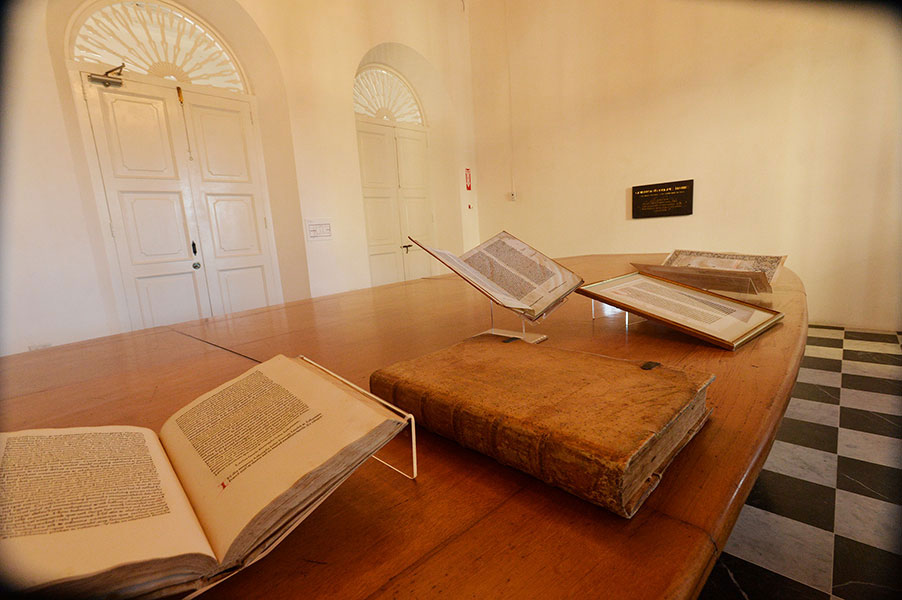
Casa del Libro is a museum and special library dedicated to the art of books and the display of rare books with historical value.
Founded by renowned editor and printer Elmer Adler in 1955, the museum has a collection of over 6,000 rare books which includes a volume of the first book in history never printed, the Chronicles of Nuremberg of 1493.
The collection includes valuable documents like one page of the first bible printed by the inventor of the printer, Johannes Gutenberg in 1454, Cana-Cruz added.
Also it has two manuscripts of 1493 signed by the Catholic Kings, Fernando of Aragon and Isabel of Castilla, which is believed to be the oldest documents to exist in America related to the expedition of Admiral Christopher Columbus to the New World.
“The invention of the printer increased the access of information in a way similar to the Internet during the end of the 20th century,” said Cana-Cruz. The collection of rare books includes 400 early prints from 1450 to 1490 – the first 50 years since the printer was invented.
All the rare books are not permanently exhibited only temporary selected volumes from the collection and the remainder is kept in a suitable condition for conservation.
On the first floor, antique presses are exhibited and among them is a French Koine of 1812 that arrived in Puerto Rico in 1867 and is believed was used by famous Puerto Rican writers like the poet Jose de Diego. Also you can see a Chandler & Price of 1903 and a Vandercook of 1925.
La Casa del Libro offers workshops from typography to the fabrication of paper and it has a store that permits visitors to buy reproductions, exposition catalogs, art, handmade jewelry, stationary, books and other unique gifts.
Admission is $4.50 adults and $2.50 students. Open Tuesday to Saturday from 11 a.m. to 5 p.m. For more information call (787) 723-0354 or visit www.lacasadellibro.org.
Felisa Rincon de Gautier Museum
A few minutes by foot from la Casa del Libro is the Felisa Rincon de Gautier Museum, dedicated to a variety of memorabilia of one of the most interesting personalities and ambassador of the history of San Juan in the 20th century, who was also mayor of San Juan for 22 years.
Waiting to greet Bienvenidos was Hilda Rodriguez, daughter of Hilda Jimanez, founder of the museum and former secretary of the mayor known to all as Doña Fela.
Doña Fela, who had a fashion boutique in Old San Juan, was a women’s-rights activist in favor of the right for women to vote and that privilege in Puerto Rico was achieved in 1932; six years later she helped initiate the Popular Democrat Party that dominated the island’s politics for three decades, and also was the mayor of San Juan from 1946 to 1968.
Upon retirement at the age of 71, Doña Fela moved and resided for three years in the house that was converted in 1987 into the museum dedicated about her life and she was able to enjoy it since she died at the age of 97 in 1994.
The first floor of the house has a great collection of photographs that included the legendary event where she transported in 1952 refrigerated snow inside a cargo plane to Luis Munoz Rivera Park in San Juan to show kids that never saw snow.
Doña Fela was a clever politician with ideas that captivated the imagination of the town like when she transported snow and her tradition to join the crowds and jump backwards into the ocean for good luck during the traditional Noche de San Juan celebration at Escambron public beach, which is also documented in the photo exhibit.
The mayor was known for her elegant attire and her Spanish hand fans and as she got older she was distinguished by a high bun and large dark glasses. On the second floor you can see her bedroom and outfits. Also, there is her large collection of Spanish fans and cute photos of kids dressed up as Doña Fela in school activities.
Besides being known for her colorful personality, Doña Fela is recognized for her hard work that includes developing public hospitals in the city, parks, roads, nursing homes, preservation of historical buildings in Old San Juan and the creation of a network of centers for pre-school kids that was avant-garde for its time.
When President John F. Kennedy visited Puerto Rico in 1961 he learned about the preschool centers program that was developed by Doña Fela in San Juan and he gave instructions to develop a similar initiative at the federal level in the U.S. mainland, which became the Head Start program that still is active. From that historic visit of Kennedy to Puerto Rico, two years before his tragic assassination in Dallas, there is an oleo portrait of him which he gave to Doña Fela as a personal gift.
The exposition includes photos of Doña Fela with Kennedy, Lydon B. Johnson and Richard Nixon and with vice president Hubert Humphrey, First Lady Eleanor Roosevelt and with New York Mayor Abe Beame, among other important political figures. Also, there was a handwritten thank you letter signed by Dwight D. Eisenhower after his visit to Puerto Rico.
Doña Fela was named a Goodwill Ambassador of the United States and also was a committee chairwoman of the Democratic Party in Puerto Rico.
Her distinction in U.S. political affairs and her photos with important politicians demonstrates her great influence in the Puerto Rican community in New York.
Kennedy was grateful for Doña Fela’s help and said that her participation with the Puerto Rican community in New York during the presidential campaign of 1960 was important in achieving his victory by a slight margin.
Although Doña Fela never finished high school because she took over the job of raising her eight younger siblings after being orphaned, she received 11 honorary doctorate titles that formed part of the museum’s exhibit and in 1954 she was named “Woman of the Americas.”
You can also see the 131 awards, plaques, and merits that were given to her by countries and cities and the 166 keys she received from different cities as an honorary visitor.
For more information call (787) 723-1897 or (787) 724-7239 or visit www.museofelisarincon.com/casamuseo.
Casa Bacardi A trip through history and innovation
Puerto Rico is synonymous with rum. From the pirates who plied their trade in the surrounding seas over past centuries, through the once-mighty sugarcane industry and into the pulsing nightlife that marks the modern metropolis, the celebrated spirit runs through the island’s rich history and continues to hold sway to this day.
“We want you to have fun while learning about rum, soak up the beautiful view and to experience everything new we have to offer.”
Puerto Rico is synonymous with rum. From the pirates who plied their trade in the surrounding seas over past centuries, through the once-mighty sugarcane industry and into the pulsing nightlife that marks the modern metropolis, the celebrated spirit runs through the island’s rich history and continues to hold sway to this day.
None more so than Bacardi, the iconic brand and standard-bearer that has conquered the world from its outpost at the western edge of San Juan. Known as the King of Rums and the Rum of Kings, the treasures inside those iconic bat logo bottles found in fine establishments in the far corners of the world took flight at the company’s distillery in the seaside town of Cataño, an up-coming diamond in the rough that proudly proclaims itself home to the globe’s best-selling premium spirit.
Rum is where Caribbean cool meets tropical heat. And while an air of mystery and adventure has always surrounded the spirit, Casa BACARDI pulls the curtain back a bit on the Caribbean’s famed libation and throws open its doors to visitors for a range of tours. Tickets can be purchased online months in advance or on site.
Reaching Casa BACARDI’s 127-acre campus is a breeze. Hop on the ferry in Old San Juan for a quick crossing of the deep water bay that is short on price but long on million-dollar views. Taxi cabs and Uber are also both sure bets and vacationers with rental cars will find the trip out is headache free – an exit here and a turn there and you’ve arrived.
Christened the Cathedral of Rum by former Gov. Luis Muñoz Marin in the middle years of the last century, the sprawling bayside property is the largest premium rum production facility in the world.
Head through the gates and along the palm-lined and pond-fringed drive to the bat-winged visitors Bat Bar Pavilion, a soaring open-air creation of Spanish architect Felix Candela that was built in 1962. With a steady schedule of tours on tap, you won’t have to wait long to get started – although what’s the rush to leave the waterfront bar that serves up a fresh supply of renowned Bacardi-based cocktails including the iconic Cuba Libre, must-have Mojitos, potent rum punch and delicious Daiquiris. Kick back and take in the sights, which include epic views of the Spanish-colonial ramparts of El Morro.
All Casa Bacardi options are fully bilingual, educational and experiential, mixology and rum tasting particularly set for adults-only.
The Historical Tour can be fun for all ages. It starts with a complimentary cocktail for adults before climbing on board an open-air trolley for a guided tour that uncovers the family-owned company’s history of craft and innovation. Out of the trolley and into the air-conditioned Visitor Center is both a step back in time and a glimpse into a cutting-edge future that stays true to the vision of quality established by Don Facundo Bacardi, a Spanish-émigré who after years of experimenting with distilling rum in his adopted hometown of Santiago, Cuba started his first distillery there – producing his signature light and elegant spirit — at the same time the Civil War was raging in the United States.
While rich in history, Bacardi has never been satisfied with resting on its laurels. A clear case in point is the ongoing evolution of its Casa Bacardi, which since its opening in 1961 has continued to tantalize visitors a true rum paradise. The addition of the highly rated mixology and in-depth rum tasting tours are proof positive of Bacardi’s unquenchable thirst to outperform expectations at every turn.
“Casa Bacardi needs to be on your Puerto Rico bucket list. We want you to have fun while learning about rum, soak up the beautiful view and to experience everything new we have to offer. Be our guest and come have a Mojito where rum was created,” said Wesley Cullen, Casa Bacardi’s general manager.
While staying true to Don Facundo’s standards and its Cuban roots, political upheaval and the promise of progress prompted the family to pull up stakes and head to Puerto Rico, the sister island that was, and remains, Bacardi’s springboard to the world.
Visitors can put together the pieces of the rich Bacardi legacy through museum pieces that include century-old copper distilling posts, bills of sale and the very furniture on which the course of the company was charted into its seventh-generation. Follow the evolution of Bacardi’s bottles and branding – all with the bat logo that was adopted early on at the suggestion of Don Facundo’s wife Amalia Moreau as a tribute to the fruit bats, symbols of good fortune that nested in the tin-roofed distillery – into a glamorous art deco bar where guides walk through the company’s growing range of rums.
On the adults-only side of the spectrum is Casa Bacardi’s Rum Tasting Tour, a guided tour that covers the history of the company while also diving deeply into the process behind the creation of Bacardí’s celebrated rums from the fermentation of the molasses, the crafting of its aging barrels and blending of its signature offerings. This is not a look but don’t touch kind of tour as it includes expert tutelage and tastings of five Bacardi rums, including Legacy, another blend available exclusively at Casa Bacardi.
If that’s still not enough of a hands-on experience, opt for the Mixology Tour, a truly interactive thrill that puts visitors behind the bar as a Bacardi specialist pulls, pours and shakes them through the paces of mixing three classic rum cocktails. With cocktail-culture booming, this tour is a must for those looking to unleash their inner bartenders. It also includes the distillery visit to uncover the history and craft that goes into those rum recipes that are being learned – cheers indeed.
The gift shop is packed to the gills with all-things Bacardí – from hats to shirts to Mojito mixing sets. It is there that visitors can take the tour to the next level with a one-of-a-kind experience bottling their own Casa Bacardi Special Reserve complete with name, date and wax seal. Aged in white oak barrels and finished in sherry casks, the sweet aromatic rum with tones of vanilla, fruit, hazelnuts and almonds – can only be found onsite.
In short, the Casa Bacardi tour is a can’t miss trip for any traveler. Think of it as an easily doable microcosm of Puerto Rico itself, which at roughly 100 miles long and 35 miles wide packs a plethora of memories in a relatively small but potent package.
Like Puerto Rico, Casa Bacardi is sun drenched and soaked in history, accessible with an ever-present hit of intrigue.
If you can dream it, Puerto Rico can make it happen
Puerto Rico is a perfect place for beach lovers to kick back with their feet in the sand, their faces in a book, and a cool drink within easy reach. The simple pleasures of basking in the sun surrounded by the sea may sound like an ideal way to pass the day for some visitors.
An endless array of high octane activities for thrill-seekers of all ages
Puerto Rico is a perfect place for beach lovers to kick back with their feet in the sand, their faces in a book, and a cool drink within easy reach. The simple pleasures of basking in the sun surrounded by the sea may sound like an ideal way to pass the day for some visitors.
But that’s simply not always going to cut it for the growing number of adventurous travelers drawn to the island by its ever-expanding range of activities that are guaranteed to get the blood pumping of any adrenaline junkie.
These days there is no shortage of high-octane options for thrill-seekers of all ages. So whether it’s soaring above a tropical forest, surging down a mountain stream, or skimming along the waves, intrepid trekkers that arrive with a thirst for adventure can rest assured that Puerto Rico will quench it and keep them coming back for more.
At roughly 100 miles long and 35 miles wide, Puerto Rico provides a plethora of spine-tingling possibilities from coast to coast and everywhere in between.
Many a salty soul has made the pilgrimage to this ocean-sports mecca – which boasts a maritime menu of options that run the gamut from challenging the wild waves of the northwest coast to stalking big billfish along Marlin Alley and from jet-ski jaunts through mangrove islets along the south coast or cay-hopping by catamaran off the eastern edge and over the offshore island towns of Vieques and Culebra.
But the fun doesn’t begin and end around the water’s edge. More and more adventure-seekers are looking inward, to Puerto Rico’s still untamed and untapped mountainous interior. The forested mountains that make up the backbone of the island are home to an ever-expanding array of activities. Though often not in easy view, this rugged terrain is studded with stuff to do.
A great way to get the adrenaline meter moving is a trip to Toro Verde, a 320-acre ecological adventure park in Orocovis, a small town that crowns the island’s verdant central mountain range. The drive up is a treat itself, but it’s the traverses along multiple zip lines (from mild to wild), ropes courses, suspension bridges, and rappels that fuel the fun factor to new heights. Let out your inner animal on attractions with names like the Beast, the Bull Maze, and the Monster, which at 8,300 feet is certified by Guinness World Records as the “longest zip line in the universe.” The numbers attached to this monstrosity don’t lie – think flying at speeds of up to 95 miles per hour over the length of 28 football fields at heights of more than 1,200 feet.
Fuel up in the onsite café, wind down at the highly-popular restaurant, and pop in to the souvenir shop for a shirt that lets the folks back home know you took on some truly epic zip lines.
The fact is, Puerto Rico has been at the forefront of the zip line craze and now boasts a ton of alternatives guaranteed to get anyone’s engines zooming from zero to 60 in no time.
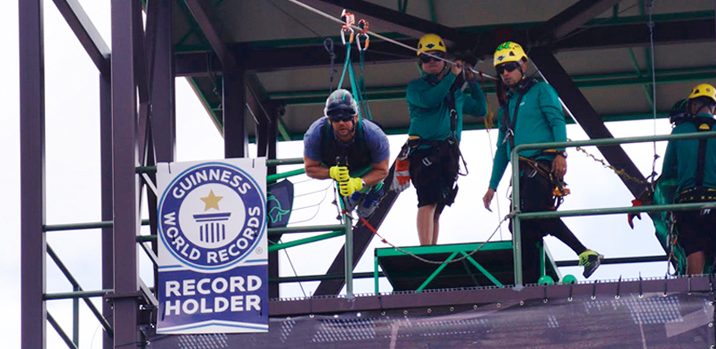
Nearby is the Toro Negro State Forest, an 8,000-acre expanse that reaches into the municipalities of Ponce, Jajuya, Orocovis, Ciales, and Juana Diaz. Toro Negro is Puerto Rico’s highest cloud forest and boasts the island’s highest lake and its three uppermost peaks, topping out 4,400 above the Caribbean Sea, and Atlantic Ocean, both of which can be seen on clear days. The forest tracts include nearly a dozen miles of trails, an observation tower, campgrounds, and picnic areas and swimming holes, known locally as charcos, in cool mountain streams.
Combine culture and cool at La Piedra Escrita, a massive boulder in an Orocovis stream that is etched with hieroglyphs carved by the Tainos, the island’s indigenous inhabitants at the time of the arrival of Columbus on his second voyage to the New World. A long boardwalk leads down to the rock-lined stream and La Piedra Escrita, or the Written Rock, provides a great perch to plunge into the clear and cold water.
To the east, the azure Atlantic and crystalline Caribbean give rise to the palms-studded flanks and emerald ramparts of the El Yunque National Forest, the only tropical rainforest within the U.S. national forest system. Touring by automobile offers some truly stunning scenery, but the best way to uncover this often cloud-shrouded gem is by hiking along one of the various established trails that snake through it. Meander down through the steamy jungle to soak in a natural pool created by a cascading waterfall, washing away any fatigue and providing rejuvenation for the walk back out of the woods.
Yunke Zipline Adventure offers five zip lines and a rappelling course along the forested flank of the El Yunque foothills in Luquillo, a northeast coastal town that is also home to stunning beaches, and an iconic string of food kiosks. Safe, fun, and scenic is Yunke’s mantra. Keep your eyes open as the area is home to a riot of local flora and fauna.
Want to jump right into the action? Why not leave the logistics to one of Puerto Rico’s top of the line providers? Dragonfly Adventures has been generating buzz for decades at its Carabali Rainforest Park, a 600-acre ranch at the base of the El Yunque Rainforest that offers multi-generational activities including horseback riding, mountain biking, all-terrain vehicles, and go-karts. Don’t skip the onsite steakhouse. The tour owner and operator has since expanded beyond the ranch and now boasts offsite venues, restaurants, an event production company, and a hotel.
Sitting off the edge of Puerto Rico’s northeast coast, and within view of El Yunque, are the offshore island towns of Vieques and Culebra. Take the ferry over from Fajardo, a small coastal city that also serves as a launching pad for catamaran and sailboat trips to sandy and palm-lined cays that rise up out of some of the best snorkeling waters in the Caribbean. The fun doesn’t need to end after dark. That’s when the Laguna Grande bioluminescent bay starts to shine, with microscopic organisms known as dinoflagellates light up the lagoon. Conservation-minded kayak tours are the way to go, ensuring that the glow does not wear off for future generations.
Puerto Rico boats three bioluminescent bays and the ones in Fajardo and nearby Vieques are among the world’s brightest.
Nothing says Caribbean getaway clearer than touching down off a secret beach in a seaplane. Seaplanes in Paradise will get you where you want to go, even if you never knew that place existed. Established full-day and half-day self-guided and guided packages are available to explore every angle of Puerto Rico including trips to the offshore islands of Culebra and Culebrita and combined seaplane/catamaran excursions. Don’t hesitate to go custom as the company’s motto is: If you can dream it, we can make it happen.
While adventurous travelers will welcome the fast-paced play in Puerto Rico, they may well find that their vacations went by too quickly. Make the most of precious time by taking advantage of the adventure that is even lurking in and around San Juan. While it revels in its well-deserved reputation as the culinary, cultural, and nightlife capital of the Caribbean, Puerto Rico’s capital city and surrounding environs are by no means a concrete jungle. Sure there are wild times to be had amid the hustle and bustle, particularly after the sun goes down, but the light of day reveals a spectrum of ways to play.
Soak up the sights in sky-high style, and achieve maximum liftoff in a helicopter tour. Imagine hovering over the Spanish-colonial ramparts of Old San Juan with views of the capital’s stunning beaches and flashy financial district. Puerto Rico Helitours offers flights ranging from five minutes to half an hour in the capital. Or take off from the mountain town of Barranquitas, where skilled pilots will fly you into the rarely seen Dos Bocas and San Cristobal canyons.
Vertical Solutions offers charters and a range of half-day and full day tours of spots including the Arecibo Observatory, the Camuy Caves, Toro Verde, and the offshore islands of Culebra and Vieques. Clients can also customize flights.
Staying high and dry is fine, but sometimes you just need to get wet. Why not combine the sky and water with a kite-surfing session. Tap into the wind and the waves at 15 Knots, which offers gear rentals and lessons in Isla Verde, an area that has earned a reputation as a world-class destination for the hot sport of kiteboarding. GoodWinds Watersports & Kitesurf Center in Dorado is also always a good bet. Take advantage of top flight services including gear rental, lessons, radio coaching, and guided tours. Aren’t ready to harness up and hang on? No worries, as the shop also offers guided surf tours that can include jet-ski jaunts to empty outer reefs off Dorado’s stellar coastline.
San Juan is also home to a series of surf breaks to suit everyone from novices to kamikazes. Lessons and board rentals are readily available at Pine Grove Beach in Isla Verde. More seasoned surfers can fill their stoke factors at spots like La Punta in the heart of Condado or La Ocho, a fabled break at El Escambron Beach that may well be among the best truly urban surf breaks this side of Waikiki.
The epicenter of Puerto Rico’s stellar standup paddleboarding is the clear and calm Condado Lagoon, a tranquil place to stay or a base to launch forays into the San Juan Bay or out into the azure Atlantic.
Adventurous anglers will fall hook, line and sinker for the fabulous fishing in and around the capital city. The San Jose Lagoon and Torrecillas Lagoon, interconnected mangrove lined estuaries that provide world-class tarpon grounds, with specimens of the so-called Silver King reaching up to the 100-pound range. There’s still plenty of room for snook, jack crevalle and other sought after sportfish in this inshore saltwater paradise. Or leave the lures behind and tour the liquid maze by kayak, standup paddleboard, or power boat. Either way you’ll be treated to a thriving ecosystem that sits in silent shadow of the international airport, your revelry interrupted only by the jumping of fish, the splash of dive-bombing pelicans and the occasional rumble of a 747 jumbo-jet coming in for a landing.
Rally the whole family for an easy trip to La Marquesa, a 600-acre passive and adventure park at the forested-edge of San Juan, and just 15 minutes from the capital city’s tourism hubs of Condado and Isla Verde. From cable cars, trolleys, and canopy tours to zip lines and rock-climbing, there’s family fun on tap for everyone from five to 95. The ski-lift style cable car is a unique way, especially in the Caribbean, to reach a 70-foot observation tower that offers stunning views of the metropolitan area.
Another can’t miss option is Ecoquest Adventures & Tours, a conservation-minded company that specializes in organizing excursions well within striking distance of San Juan. Hotel pick-up lets clients leave any transportation troubles behind, allowing them to focus purely on fun options including zip lines, rappelling down waterfalls, canopy bridges, and off-road vehicle treks through Puerto Rico’s lush and often overlooked backcountry.
Head south out of San Juan, through Caguas and up to Cayey; the gateway to Carite State Forest, which spans 6,000 acres and is managed as a recreation area by the Puerto Rico government. Camping and picnic areas are safe and scenic. Waterfalls and cool natural stream pools, including the beautiful Charco Azul, can be found.
Combine a Carite excursion with a pit stop at the Guavate area of Cayey, where open-air eateries serve up heaping helpings of criollo classics. Their specialty is lechon, whole spit-roasted hogs that are as delectably moist and tasty on the inside as they are golden and crackling on the outside. Guavate is small, but is not to be missed. You may not even need a map to find it, just follow the scent of the simply stunning victuals being prepared at this favorite grub hub of locals and visitors alike.
Rocaliza Adventure Tours, headquartered in the city of Caguas about 30 minutes south of San Juan, serves up half-day and full-day tours near that Carite State Forest that include canyoneering, hiking, rappelling, and multiple zip lines. Climb upriver using secured reports and then rappel 80-feet down the El Salto waterfall among others.
Ready for rock climbing? Seasoned guides will lead rock hounds of all levels up classic routes at the island’s best crags and boulders, most of which are close to the capital city.
Another great place to get your kicks is in karst country, as the foothills that sweep up from the northwestern coast to the central mountain range are known. The region is marked by limestone outcroppings known locally as mogotes, which create a labyrinthine landscape that is lush and mysterious.
Abundant rainfall and subterranean rivers have carved out porous limestone to create an unseen world of cave systems throughout the karst region. Cueva Ventana, or Window Cave, is one such hidden gem. Climb PR-10 up by car from the coastal plain at Arecibo until you spot the bare bones sign for the cave. A short trek up the woods leads you to the somewhat steep scramble down into the cave. The cave itself is not expansive and its geological features are not the real draw. What keeps visitors draws dropping is the end of the cave, which is essentially a massive opening high up on a sheer limestone cliff that provides incredible views of the bucolic Rio Grande de Arecibo Valley below while the harmless denizens of the dark chasm, in this case bats, flutter overhead.
Take in the vista for as long as you like, but keep your eyes open. It’s a long way down. And you’ve still got some fun waiting just up the hill at Lago Dos Bocas, a mountain reservoir tucked hard in the hills in neighboring Utuado. The fishing is good, but you don’t need to count on catching anything to fill your belly. A few excellent restaurants dot little pockets of the shore and are accessible only by water taxi service, making getting there have the fun as ospreys glide on thermals overhead.
Karst country is also home to the Camuy Caverns River Park, a government-run attraction that takes people deep into an underground world of subterranean rivers, stunning stalactites and stalagmites, and strange creatures. Trolley trains do much of the work but there are opportunities to get out and stretch your legs on walks through soaring caverns.
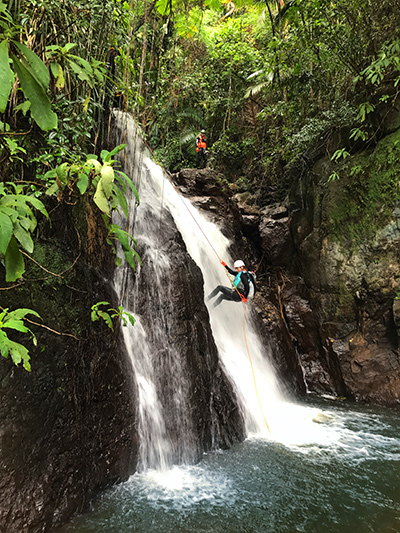
Chart a course for the Tanama River, a cool, clear mountain stream that twists, turns and plummets down from the high-country between Arecibo and Utuado, the heart of Puerto Rico’s remote, rugged and unspoiled karst region and home to one of the few wild populations of the endangered Puerto Rican Parrot. Hidden treasures are revealed at virtually every turn along the river. Hiking in the area is sure to please, but this is one epic adventure that is best enjoyed by jumping in with both feet. Body rafts and inner-tubes are without a debt the best way to explore the caverns, overhangs and rapids of this refreshing liquid trail that traverses through lush jungle
Book a trip with the fun and knowledgeable guides from Explora Multiaventura, Tanama River Adventures or Canyoning Puerto Rico which developed into the first excursion company to offer guided tours to the island’s canyons, cascades and canyoning routes; who will handle logistics, gear and safety.
Bold travelers need not be bound to the ground in Puerto Rico, where the sky is the limit when it comes to kicks. The small airport in Arecibo is home base for sky-diving operators. Learn the basics on the ground and then gear up for a free-fall as butterflies flutter in your belly. Wheels up and in the air to 10,000 feet, it’s time to take the leap. The tandem jump with a certified instructor is a true rush.
Flights of fancy are also on tap in the karst region at the Arecibo Observatory, a massive radio telescope sunken into the top of a mogote. The hands-on visitors’ center provides a glimpse of the important science that continues to be done at the scientific installation. Let your imagination soar as onsite researchers probe the outer reaches of the galaxy.
Make that dream of soaring like a bird come true by learning to hang glide or paraglide. The experienced USHGA-certified instructors at Team Spirit Hang Gliding offer a full range of courses on the art of free flight. Don’t have time to master the sport? Don’t worry. Take a tandem flight with a seasoned pilot. From the launch site on the south side of El Yunque Rainforest, your pilot will work the glider into uplifts and thermals, circling higher and higher. With flights lasting up to 30 minutes and reaching heights of more than 2,500 depending on the weather conditions you are in for the ride of a lifetime and views of the mountains, Atlantic Ocean, and even San Juan, you’ll never again have to wonder what it feels like to soar with the clouds.
Out west, world-class waves have lured legions of hard-core surfers to the island’s northwest corner for decades, but beginners can easily find lessons given by skilled teachers who will get them into the right spots and onto their feet riding swells in no time. Horseback riding along the beach, snorkeling in the protected Tres Palmas Marine Reserve, or scuba diving in the pristine and crystalline waters off uninhabited Desecheo Island or Mona Island are other facets of the northwestern region that make it shine like a beacon for the saltiest of souls. Standup paddleboard excursions along the rarely traveled Guajataca River or inner-tube tube float trips down the Isabel irrigation channels.
Continue down the coast to the Cabo Rojo area, where you can fly fish on the flats, hike along a salt march or head offshore for truly epic deep-sea fishing.
Down and around are the coastal towns of Guanica and Lajas, which are sure to seduce with off-the beaten path adventures to secret beaches and mangrove islets surrounded by bathtub clear waters that are as warms as they are inviting.

Ponce, the so-called Pearl of the South, is known as the cultural hub of Puerto Rico’s south coast, with a restored downtown area and art museum that can hold its own with some of the more celebrated heavyweights around the globe. It’s also where you can catch a ferry ride out to Caja de Muertos, or Coffin Key, an uninhabited nature refuge that serves as a breeding ground for sea turtles and once served as the stage for Masonic meetings outside of the disapproving eyes of the Spanish crown. Swim with a kaleidoscope of marine creatures and trek through the cactus-studded dry forest to the 1887-Spanish colonial lighthouse that caps this idyllic offshore hideaway.
Adventure-seekers could literally throw a dart at a map of Puerto Rico and probably hit on something, somewhere that would surely get their juices flowing. A good time is guaranteed, whether setting of on your own, or opting for a guided excursion, as the island surrounds you with opportunities to push boundaries up in the mountains, down below ground, along epic coastlines, under water and high in the sky.
Either way, it should be abundantly clear that Puerto Rico serves up an endless array of adventures for travelers of all ages. So many that the Enchanted Island could also be called the Excitement Island.
Plenty of excitement at Camarero racetrack
Infectious energy, the majesty of the thoroughbreds, jockeys wearing vibrant silks, and stunning park-like grounds with El Yunque mountains as a backdrop is the perfect way to describe the setting at Camarero racetrack.
Puerto Rican jockeys have proven their dominance
for decades at top racetracks in the world.
Infectious energy, the majesty of the thoroughbreds, jockeys wearing vibrant silks, and stunning park-like grounds with El Yunque mountains as a backdrop is the perfect way to describe the setting at Camarero racetrack.
If you enjoy horse racing, or just want to spend a few exciting hours during your vacation in Puerto Rico– than add this on your To-Do list.
Grab your binoculars and sunscreen for a fun-filled day of fresh air and adrenaline, and hopefully you’ll leave with some extra money in your pocket.
“To see a live race is very different than seeing it on TV,” said Alejandro Fuentes, executive vice president at Camarero Inc., the Puerto Rican company that manages the racetrack and horse racing business on the island. “You get to hear the fans cheering for their favorite horse and the sound of the horses galloping on the track; it’s truly exhilarating.”
Camarero is the island’s only horse racing track located 15 minutes from the Isla Verde hotel sector and a 20 minute drive from San Juan taking Route 66. There is plenty of parking, admission is free and the norm is casual attire.
Back on Track
Race days at Camarero are Thursday, Friday, Saturday, and Sunday with post time at 2:50 p.m., and a fifth day will be added soon. However, Sunday is the perfect day to go for people watching.
If it’s your first visit to a racetrack, you may get a more rewarding experience finding a spot where the entire track can be seen. The horses are paraded about 10 minutes before each race prior to trotting off to the starting gate. You sit outdoors at the grandstand –which is an open air multi-leveled seating near the center of the action where you can watch the parade, race, and winner circle picture taking up close and personal. Kids, especially, will enjoy this part of the track.
The Clubhouse and Terrace Restaurant, THE place where horse owners and anybody who simply preferred to leisurely eat a meal in air conditioning while watching the races through its huge windows, is currently closed and expected to be reopened soon.
Learning the ins-and-outs of how to bet before you arrive at Camarero will save an incredible amount of time. So get a racing program, pick your horse of choice, and hurry to the betting window and hope the odds are in your favor. Stick to a budget. A racetrack can be one of the most affordable entertainments around.
There is important information you need to know before you approach the clerk’s window: the race number, dollar amount of your bet, type of bet and number (NOT name) of the horse(s) you’re betting on. The types of straight wagers are win, where you pick a horse to finish first; place, where you select a horse to finish first or second and show, where you pick a horse to finish first, second, or third.
Exotic wager bets include exacta, where you pick the first and second place finishers in the exact order and trifecta, where you pick the first, second, and third place finishers in the exact order; and the multi-race bets that include daily double (pick the winner in two consecutive races), pick three (choose the winner in three consecutive races), pick four, pick five and pick six referred to as el Poolpote in Puerto Rico.
Payouts are determined by the number of horses in the bet, the odds, and the wager amount.
Daily wagering at Camarero currently fluctuates $400,000 to $500,000.
Its monthly event “Night at the Races,” where the race card begins early, followed by a live band is expected to make a comeback soon. This event, held every Friday night, attracts a large crowd and high number of wagering.
“It is like a whole world in itself, an entire industry revolves around the track activity,” said legendary racetrack announcer Norman H. Davila, who is one of the faces and voices of Puerto Rico horse racing.
There are more than 1,000 employees and contractors at the racetrack, especially in the stables – from hot walkers, grooms and trainers to blacksmiths and vets.
“When you add up indirect jobs there are about 8,000 that include owners and employees in over 400 off track wagering agencies island-wide, the horse breeding farms, producers and distributors of food,” said Fuentes.
An island full of world-class jockeys
In horse racing there are two types of athletes: the horse and the jockey. Puerto Rico has had its share of excellent thoroughbreds that have won important international races like the Caribbean Classic. Half of the 600 horses that normally are active on the island are native specimen while the rest are imported mainly from the U.S. mainland. But more impressive are our exceptional Puerto Rican jockeys who have proven their dominance for decades at top racetracks in the world.
Camarero’s horse racing vocational school, affiliated to the Puerto Rico Horse Racing Administration, is where trainers, blacksmiths, and jockeys are trained. This school graduates about 15 jockeys a year that begin their racing careers as apprentices. In the 1960’s and 1970’s, several young apprentices ventured out into the racing circuits in Florida, New York and California, three states that have some of the most important racetracks in the world, in order to test their luck and begin demonstrating their talent.
Puerto Rico’s pioneer adventurer was jockey Eddie Belmonte who attracted attention in the New York racing circuit and was the first Puerto Rican to win a race (Preakness) of the Triple Crown aboard ‘Personality’ in 1970.
Jockey Angel Cordero followed suit and dominated for years the racing circuit in New York at Saratoga, Acueduct, and Belmont Park racetracks. He competed for 30 years (1962-1992) and was the jockey with the most earnings on four occasions in the U.S., Canada and Puerto Rico. Cordero, referred to as the King of Saratoga, has the most wins in Triple Crown events including three Kentucky Derby victories.
John Velazquez has been active in New York since he left at the young age of 18 in 1990. He is also another Puerto Rican superstar in the horse racing scene.
Velazquez has been a leader in earnings for four consecutive years (2001-2004) and has won two races of the Triple Crown – the Belmont Stakes in 2007 and the Kentucky Derby in 2011.
In the past two years, besides Velazquez, there have been other Puerto Rican jockeys who have stood out in the U.S. mainland horse racing panorama – brothers Irad Ortiz and Jose Luis Ortiz. The Ortiz brothers have been ranked among the top five jockeys in the U.S. mainland in overall earnings.
In 2017, the 24 year-old Jose Luis won the Eclipse award for being the most outstanding jockey in the U.S. for highest earnings ($22.9 million) while the 25-year-old Irad was the jockey with most wins.
By winning an Eclipse Award, Jose Luis has joined the exclusive club of Cordero and Velazquez, an honor comparable to winning a MVP award in Major League Baseball.
Juan Carlos Diaz, the King of Camarero
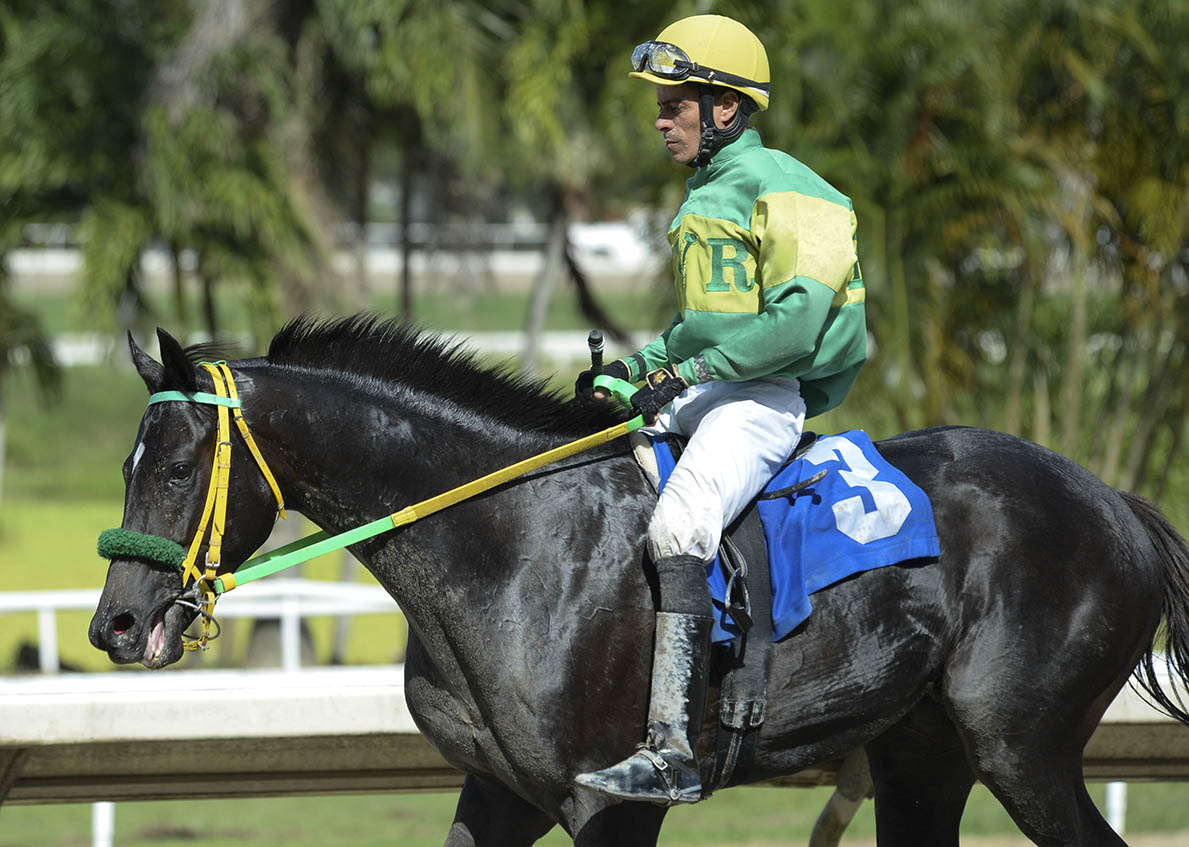
Nevertheless not all stellar jockeys migrate to the north.
When at Camarero racetrack and making a wager you may see names like Edwin Castro, Hector Berrios, Javier Santiago, Wilfredo Rohena, among others on the racing form that offer a guarantee that the horse will be in good hands and could possibly be a winner.
However the most outstanding of the local crowd is currently Juan Carlos Diaz, a jockey that holds the title of having the most wins in Puerto Rico’s horse racing history with more than 4,700 victories under his belt. He has also been the leader in victories and earnings for 17 straight years showing his absolute dominance on the island.
“I have had the opportunity to ride in the U.S. but have decided to stay in Puerto Rico because I have led for many years here and am economically solid,” said the 40-year-old Diaz. “I have my home and family in Puerto Rico and my son is enrolled at the jockey school.”
Besides Diaz’ family life, that has a major role in his decision to remain in Puerto Rico, there are other factors.
Diaz was raised near the ocean – not riding sea horses but rather fishing, scuba diving and surfing, even though he loves horses. His passion for surfing and boats continues despite the fact he has to be at the track at 10 a.m. to then race from 2 p.m. to 6 p.m. four days a week. But he does find a way to escape to the beach to ride those waves.
“Sometimes after the morning workouts at the track, if there are waves, I escape to surf for an hour in Luquillo at La Pared or La Selva beach and then return to the racetrack. Besides the fact that I love the ocean and it relaxes me, it’s a good workout and provides balance, which helps me as a jockey.”
Come and witness the passion of Puerto Ricans as they cheer on riders like Diaz and play the Poolpote jackpot, and if you are lucky to pick all six winners of the afternoon’s race card you can win lots of money. Feel the excitement of seeing your horse fight for the lead and who knows maybe you’ll have beginner’s luck.
Back Into the Swing of Things
Puerto Rico’s rebound in the wake of Hurricane Maria can be likened to a round of golf at one the islands world-class courses —there was bound to be some rough, some ups and downs, and some unexpected turns along the way. And while landscapes may change, the renewal of the island’s lush greens seemingly blossomed overnight as its mountain forests, palm-lined coasts – and yes its 18-hole oases – sprang back to life under the healing tropical sun.
Puerto Rico’s rebound in the wake of Hurricane Maria can be likened to a round of golf at one the islands world-class courses —there was bound to be some rough, some ups and downs, and some unexpected turns along the way. And while landscapes may change, the renewal of the island’s lush greens seemingly blossomed overnight as its mountain forests, palm-lined coasts – and yes its 18-hole oases – sprang back to life under the healing tropical sun.
Like many of its best hotels, Puerto Rico’s golf courses seized the opportunity presented to grow back better than ever through a host of upgrades including a new fleet of GPS-equipped golf carts at Dorado Beach through the remodeled club house and re-imagined courses at Rio Mar, to cite just two examples.
Check out Costa Caribe to Coco Beach and El Conquistador, Palmas del Mar, Punta Borinquen and beyond, where restoration contractors who arrived on the island in droves could be heard extolling the virtues of Puerto Rico’s range of golf courses on their hard-earned days off from the work of rebuilding.
Puerto Rico is known as the premier location for golf professionals and enthusiasts in the Caribbean where golf enthusiasts travel from all over the world to play throughout the year on the island’s 20 championship golf courses. This year’s tournament calendar features the PRGA’s annual signature event, the PRGA Championships, as well as seven World Amateur Golf Ranking (WAGR) points tournaments for both juniors and amateurs. For the second straight year, Puerto Rico will also host a USGA U.S. Am qualifier.
With global media attention focused on Puerto Rico’s challenges and can-do attitude, the island’s profile in the golf world was also elevated through the likes of its touring professionals such as Maria “Marife” Torres, the first Puerto Rican to play full time in the LPGA and Rafael Campos’ solid presence on the PGA Web.Com Tour.
Further shining a bright light on Puerto Rico’s competitive golf scene were a range of signature tournaments stretching from spring into winter – no need to worry about the weather on an island where balmy 80 degree days are the rule.
July 9-10
USGA US Amateur Qualifier
August 11-13
PRGA Junior Match Play Championship
November 2-4
PRGA Match Play Championship
But the biggest sign of the solidity of the island’s competitive golfing future may well have been the PGA’s bet on bringing the PGA Tour’s Puerto Rico Open back to the island at least through 2020.
Dating back a decade, the 2018 event could have been carried out, but the PGA Tour and the main sponsor the Puerto Rico Tourism Company opted instead to hold a special, unofficial PGA Tour event in March to support recovery efforts on the island featuring PGA Tour golfers, athletes and celebrities. The charitable event was held at the TPC Dorado Beach, which is home to three legendary championship golf courses, including the famed East and West courses originally designed by Robert Trent Jones Sr. Since its inception, the Puerto Rico Open has supported the work of local charities and donated nearly $700,000 to non-profit organizations that work with children, youth and health-related issues.
While putting relief before dollars was a move right from the heart, the PGA Tour doubled-down on Puerto Rico when it inked in the return of the four-day, official PGA Tour event in 2019 and also in 2020.
“The Puerto Rico Open has been part of the PGA Tour for the last 10 years and our commitment to golf on the island has never been stronger,” said PGA Tour Commissioner Jay Monahan. “Our hope is that this special event in 2018 would benefit Puerto Rico’s recovery efforts to the fullest extent, while reminding the world that Puerto Rico is a premier golf and travel destination.”
In partnership with tournament officials and the PRTC, the PGA Tour heavily considered all factors following Hurricane Maria to determine a course of action for the 2018 Puerto Rico Open and examined what would provide the greatest support and economic impact for the island during this period of recovery. Therefore, the tournament in Puerto Rico was re-imagined as a special, unofficial PGA Tour event to support the recovery efforts and to celebrate golf and Tourism on the island.

